CONTEMPORARY APPROACHES TO STILL LIFE: OBJECT TABLE DEVELOPMENT
The following was taken from the study material:
In Part Two you will explore intersections between painting and sculpture. Through practical, written and reflective exercises you will consider:
- The shift from depiction of pictorial space to the experience and articulation of physical space.
- The agency of the ready-made.
- Bodily presence in relation to the production and reception of art work.
- Consideration of temporal and spatial concerns in relation to painting and sculpture.
- You will work in both 2 and 3 dimensions, progressing through the 5 practical projects and one reflective project, to the final assignment.
- Again, the exercises outlined in Part Two are designed to act as a jumping off point; feel free to develop ideas and approaches on your own terms
- Preparing for Part Two Establish a space where you can set up a table, or improvised table space (a board on trestle legs or stools). You will be working with this for the most of this unit so make sure this is something you don’t have to move or tidy away. Consider
- The size of the table top; it needs to be big enough to accommodate a range of objects and materials.
- How the table is lit; is this by natural light from a window or directional light provided by a lamp?
- The space around the table; you will need to view the table from all angles make sure you leave room to move and work around it.
- The surface of the table top; are you happy to work with the table top as it is, or perhaps you want to paint the surface or cover it with a particular material?
- The colour of the tabletop. You may wish to re-consider this once you have decided on the objects that will inhabit the table.
EXERCISE 1 COLLECT/MAKE/ARRANGE
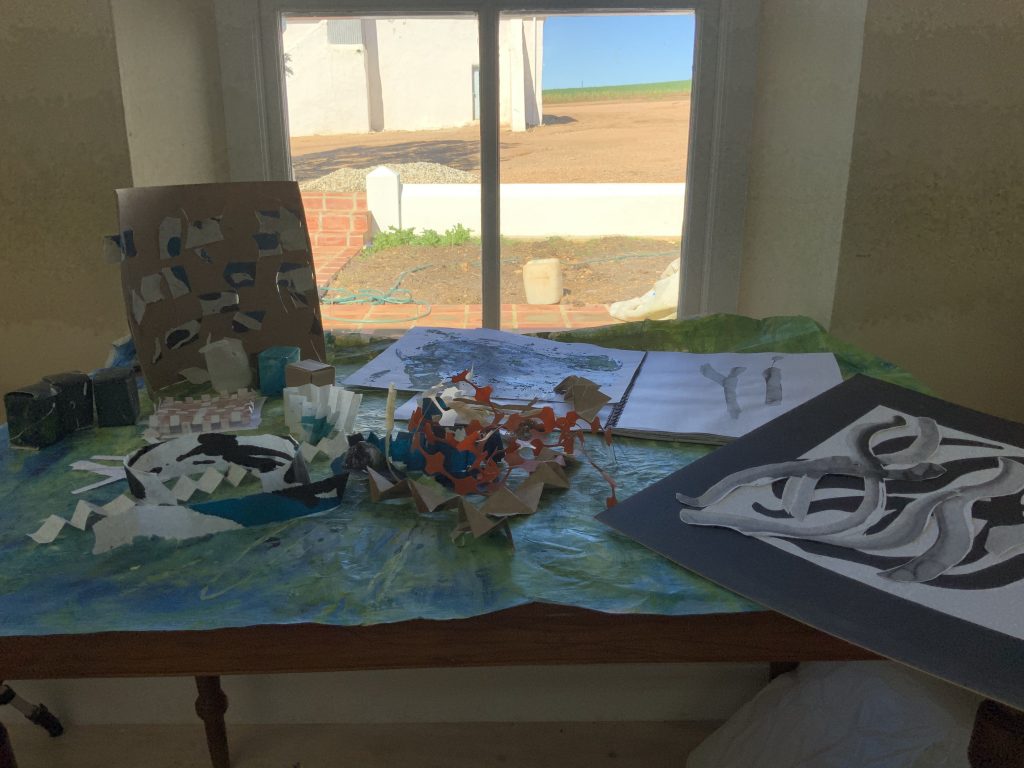
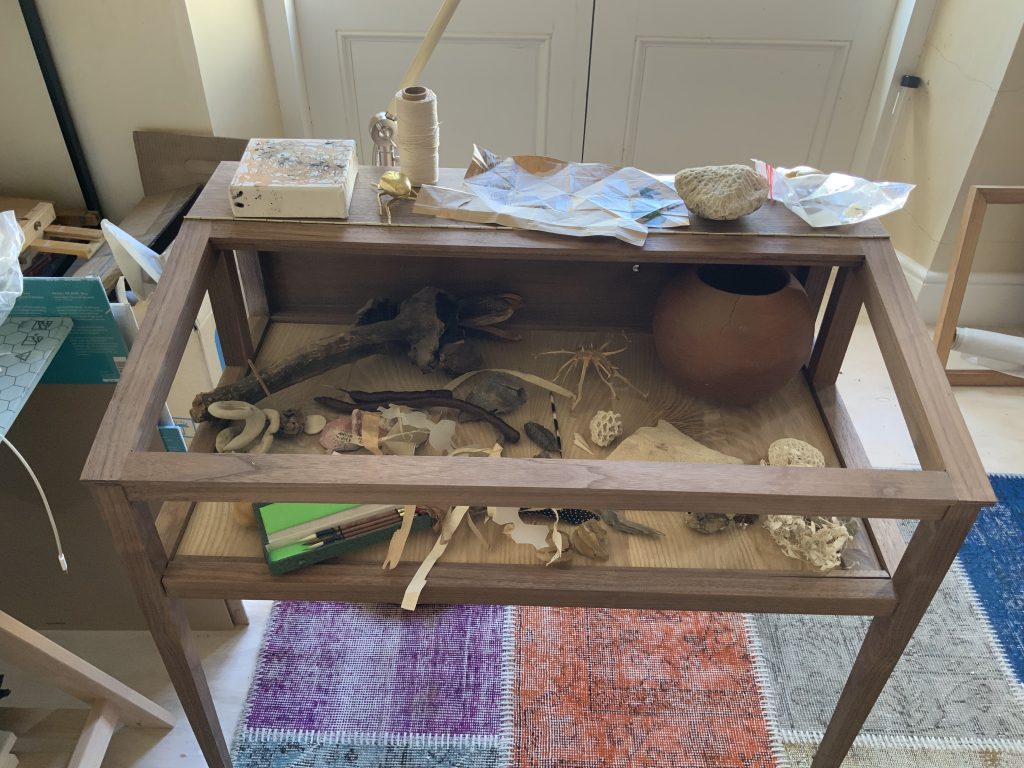
RICHARD SERRA’S ‘VERB LIST’
I found the following interesting ideas on R Serra’s list:
- starts as an experiment with non traditional materials such as fiberglass, neon, rubber as well
- as the language involved in the physical process of making sculpture
- the list of infinitives described many of the working processes he would later use throughout his career
- they become actions materialized in his sculptures
- he gives importance to the formation and transformation process of materials as well as
- to the way in which these materials react to external conditions such as gravity or temperature.
Serra’s work known as To Lift, made in 1967 from discarded rubber recovered from a warehouse in lower Manhattan, is a result of the rubber’s unique response to the artist’s enacting of the action verb “to lift.” As Serra later explained:
“It struck me that instead of thinking what a sculpture is going to be and how you’re going to do it compositionally, what if you just enacted those verbs in relation to a material, and didn’t worry about the results?”
Richard Serra on his installation To Lift, 1967. Museum of Modern Art, New York, NY, USA.
Put together your own list of actions inspired by Richard Serra’s ‘Verb List’, record this in your in your sketchbook. Using your list, and thinking about the objects and materials collected so far, make small maquette type 3D objects to add to your collection. These should be quick 3D sketches, which give expression to form, line, shape, colour and/or pattern. For example you could: fold paper, bind fabric, stack cardboard boxes, thread objects together etc. to create form. You could make multiple objects and then arrange these to create 3D pattern, or use wire to create linear structures. Detail your methods and approach in your sketchbook using annotated sketches and/or photographs.
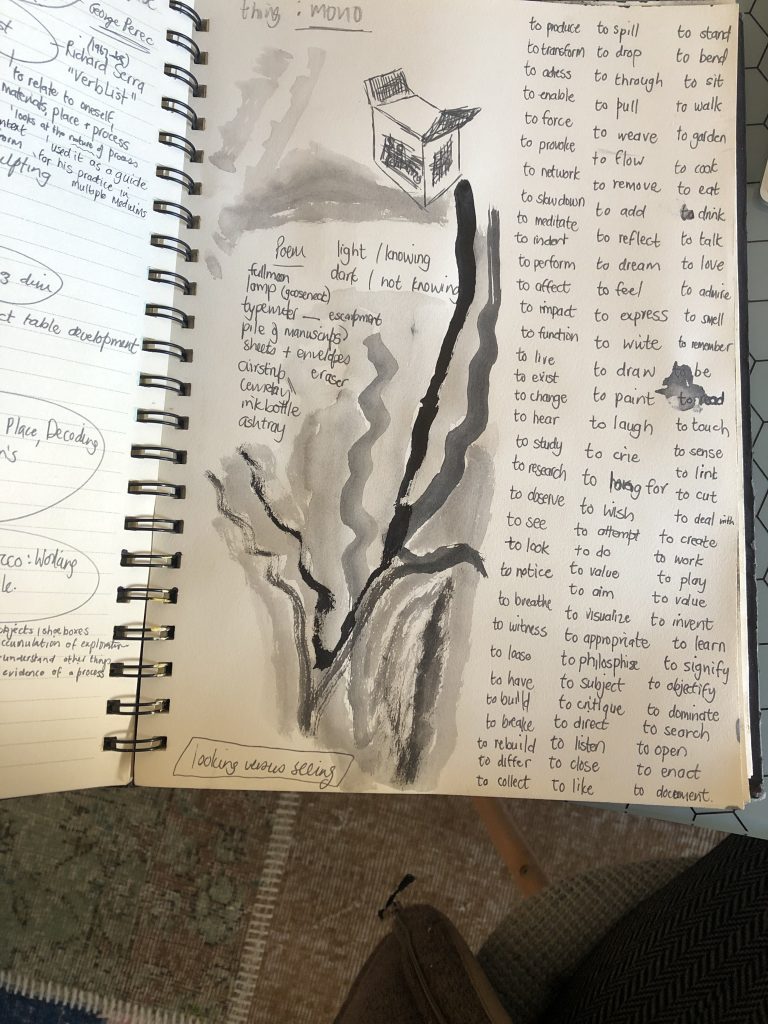
It seems what I take from Serra’s making is that there is an experience of tactility when confronted with his works. I am also seeking for an articulation of physical space and how a viewer experience could be when in front of these works.
My list around R Serra’s Verb list developed into two lists. My first list (above) was made as I read this study material and the latter list (see image below) was done on 14 July as a contemplation on the looting and violence which erupted – social media images are disturbing as people plunder and steal and get away – police force seems overwhelmed and outnumbered. Currently, in South Africa, we are going through huge social turmoil and unrest which is hopefully by now contained to two major provinces, namely Gauteng and KwaZulu. The media covered this incident very well and photos of people running or driving away with the looted goods send shockwaves into the country and world. We feared further political instability and felt betrayed by leadership and their take on the safety of citizens and businesses, law enforcement was outnumbered or played into the hands of the instigators and looters. The burning of cars, trucks and warehouses with mostly food was shocking and I was reminded of the work of William Kentridge whom I know well, Johannesburg, 2nd greatest city after Paris, 1989. In his work, the landscape was devastated by mines and factories and one has a sense of loss and nostalgia. In my drawings, there is a sense of destruction done by people where physical and political actions enacted on the landscape and left it burnt out, shops without any stock, shelves, doors – almost broken down to the ground. One cannot but consider the effects of Covid pandemic, poverty, hunger, joblessness….. South Africa is currently under its Third major Lockdown.
I felt that the charcoal drawings in my sketchbook could be smeared and redrawn, as the marks left behind tell the story of devastation which we would like to wipe out of our minds.

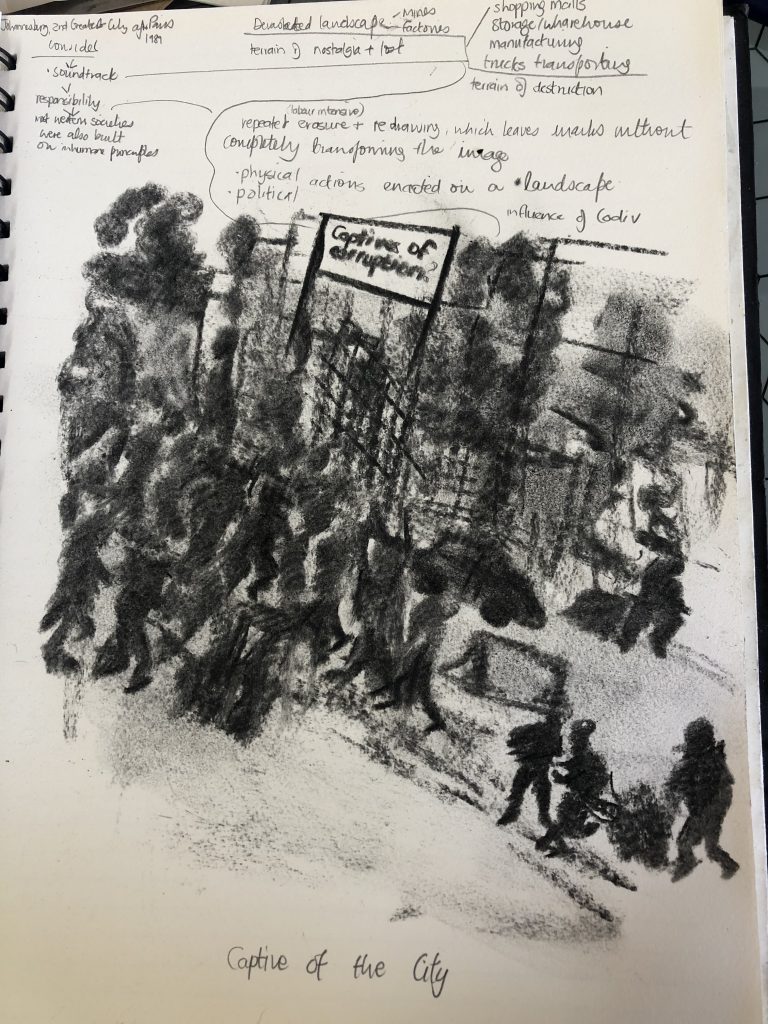
I decided to use a wooden cabinet, intended for curiosities, as the working space I will also refer to in the exercises. (My husband made this cabinet whilst we lived in Dubai, and glass has to be fitted into the side and top panel.)
I read the articles for the reading points of the study material, in order to ensure my own take on filling a table fits with the exercise. I have to admit that I have a bit of an obsession with tables and have at least two tables in my own working space, a third addition is under consideration as I now have a big space to myself. To be honest I am not fully working in my new studio space, as there was an issue with an internet connection, which will hopefully be sorted in the next few days. I do my blog and writing work in our living room, on a table next to the fireplace – this table is mostly filled with a borrowed laptop, iPad, sketch pads, pencils, pens, ink, headphones, iPhone, notebooks, and odd papers and works in progress, a coffee mug or water glass.
Perec talks about things old and recent on his work table, the size, and how he frequently would clean, change and reorganize this space. Words like rearrangement and corresponds strike me – because I completely understand the difficult decision as to choosing a particular object above another! Georges Perec is immediately a ‘soulmate’. I add my new box with small Japanese brushes into my collection and think that these objects all have the potential to give me interesting shapes, textures, and tones to view. I come to a realization of how amazing it is that this whole space, tables, easels, shelves, books, papers, and many things are my domain – nobody shares it with me, I do as I want. I surround myself with what I feel is necessary to be working honestly from my own deepest place. I feel protective of this space, but also very vulnerable when I share it with the odd visitor. I showed some work in progress with a student group and realized that I could be ‘judged’ for my ‘space’ as well. I have become safe in my solitary space and am being challenged in this way to open up and share my space.
I think about form and shape – Looking at the difference I read the following: Form has depth, it has a defined space that is three-dimensional. Form can be geometric or organic. Shape is flat and has the property of a two-dimensional form. There are two main types of shapes, geometric and organic., but it is endless.
It is this combination of shapes and form which becomes the definition of what we see and how we define objects and space around us every day.
Maquette type 3d objects made to add to a collection:
I have, in the past made wooden boxes, paper mache pots, pottery, pinch pots, and pottery(wheel and hand) – here it was about manipulating the materials, using tools, and learning techniques. On my desk (writing and reading area) is one pot I turned on the wheel, and it always finds a way to hold things. (ink, water, charcoal pieces, paperclips)I loved making slab pots and boxes and always thought I would get back to clay at some stage in my life. I have made a few wooden boxes and small items in my husbands’ carpentry workshop, mostly for its utility value and the fact that it could ‘hold’ things I love to have around me. During winter last year here on the farm, I made a rhino with a cement-type product the builders were using on the walls during the renovations. (also on my table) I think about these objects as made of material and not necessarily a subject, but it represents something real – a representation of something living and non-living, but very much part of my life. Boxes and packaging materials are still around our house and I immediately gravitate to it in terms of making a maquette – but what? I think about the practicality and aesthetics of things I like. I would like to explore materials I use daily in my studio and then consider other ‘unfamiliar’ materials. I love the possibility of layering materials and forming something new with it. I filled one of the folded boxes with plaster of Paris and think about this as an imprint of the box – I did not attempt to take it out of the box.
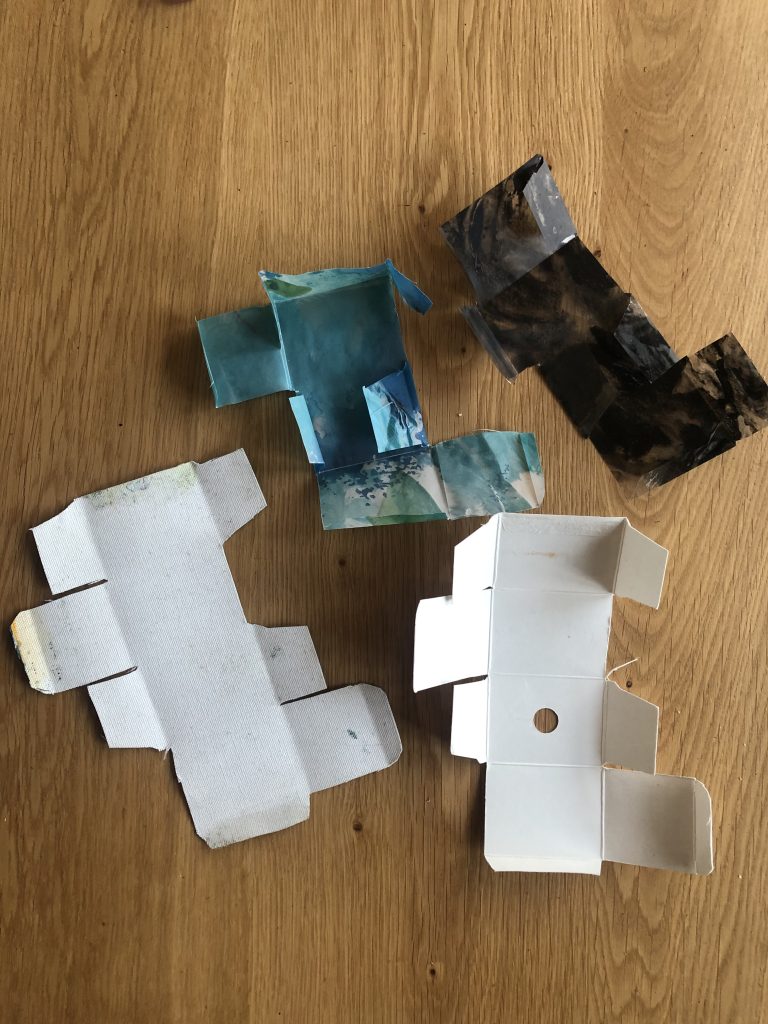
Fig. 6 
Fig. 7 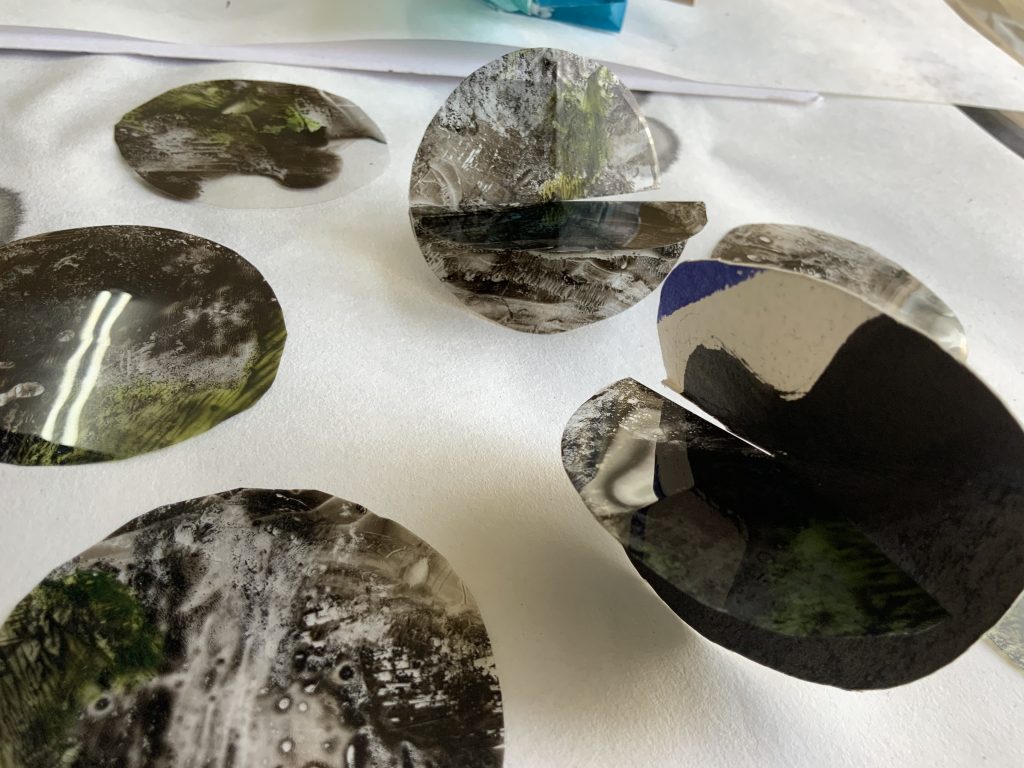
Fig. 8 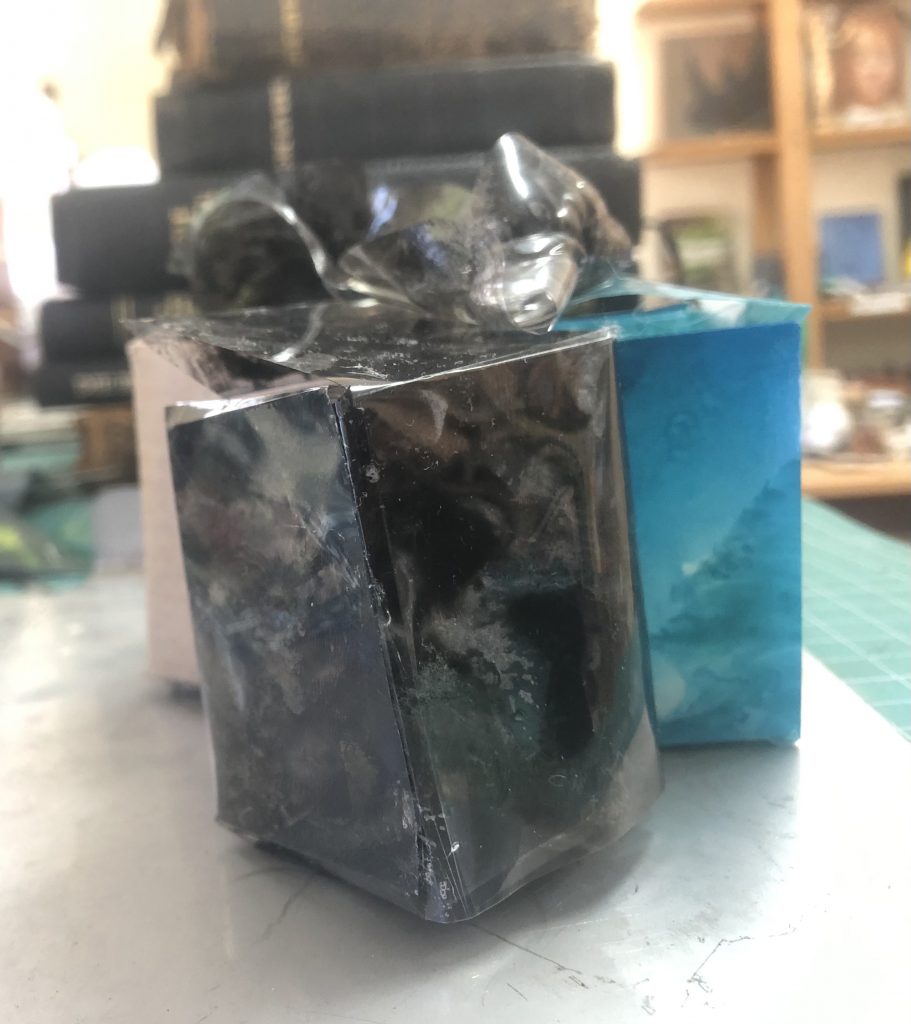
Fig. 9 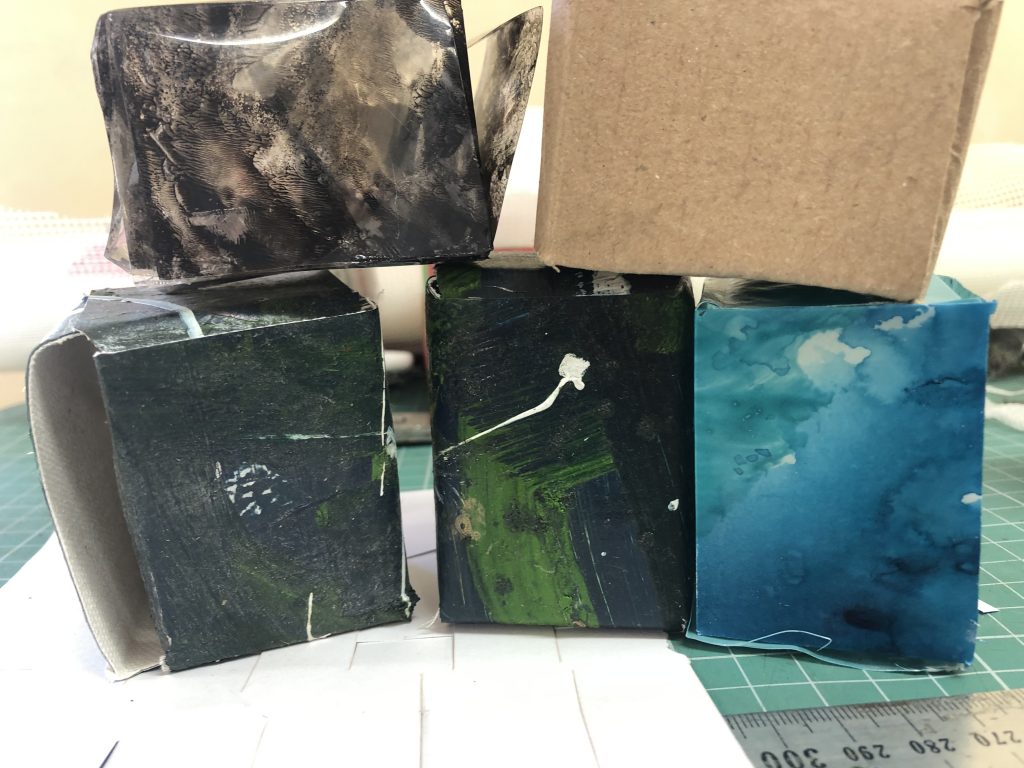
Fig. 10 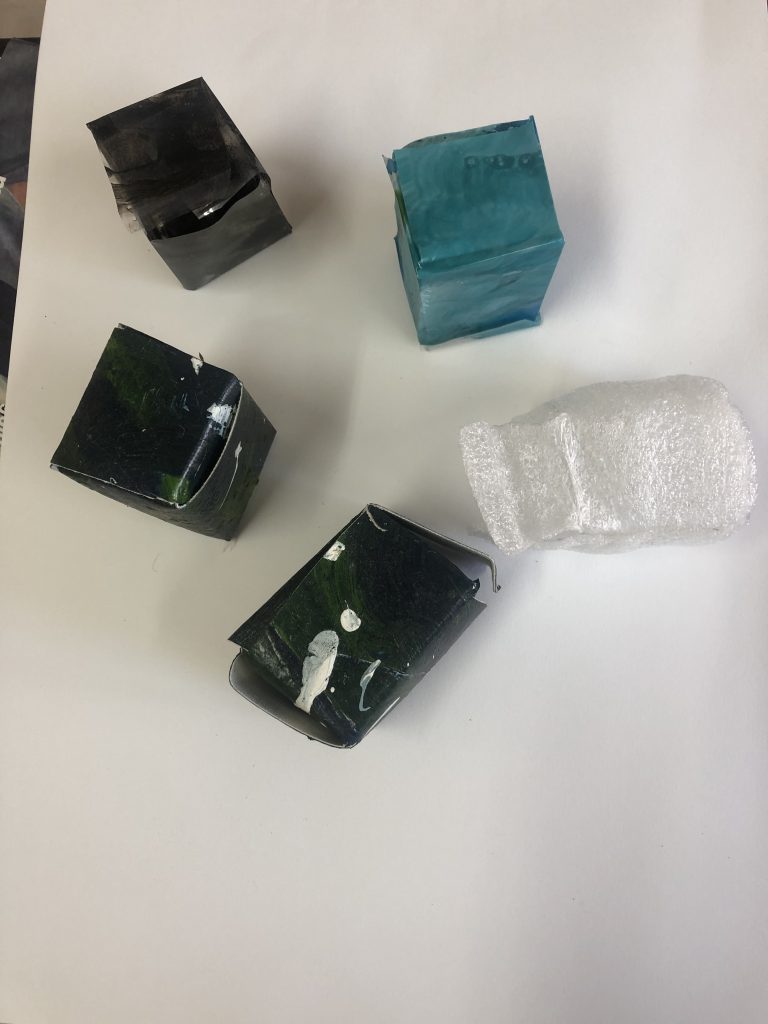
Fig. 11 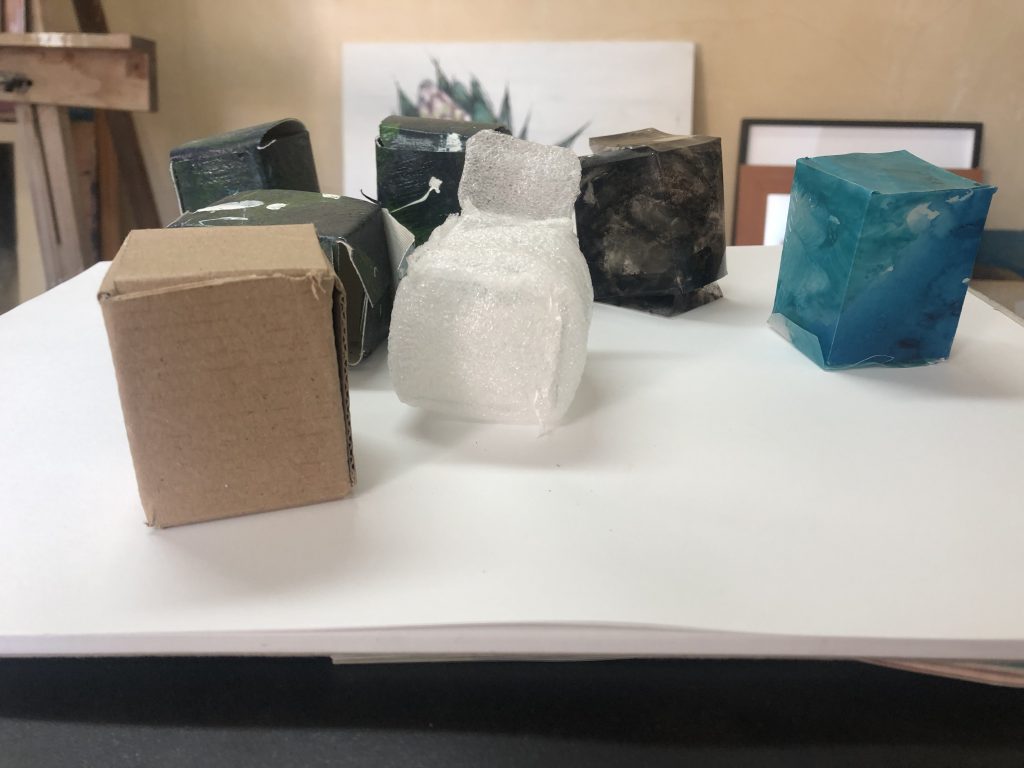
Fig. 12
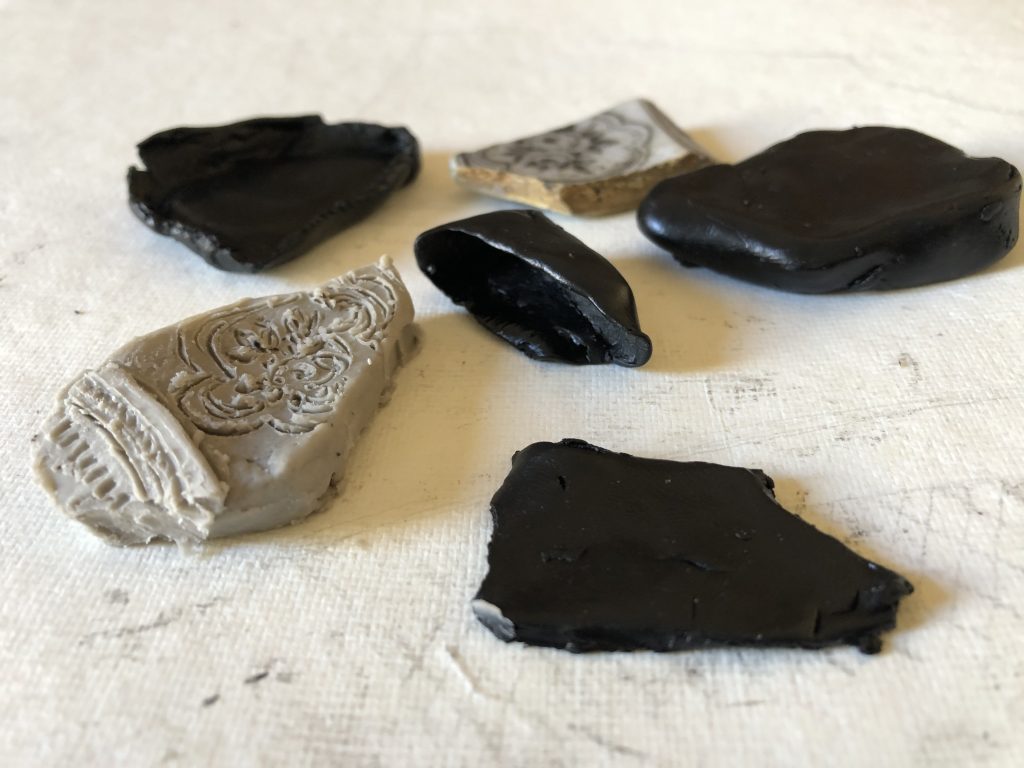
Fig. 13 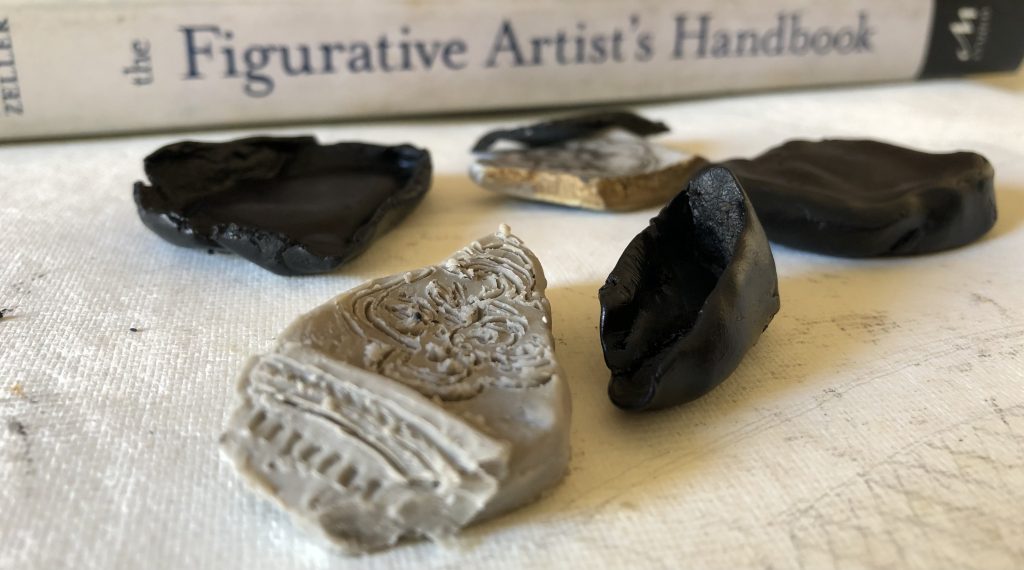
Fig. 14 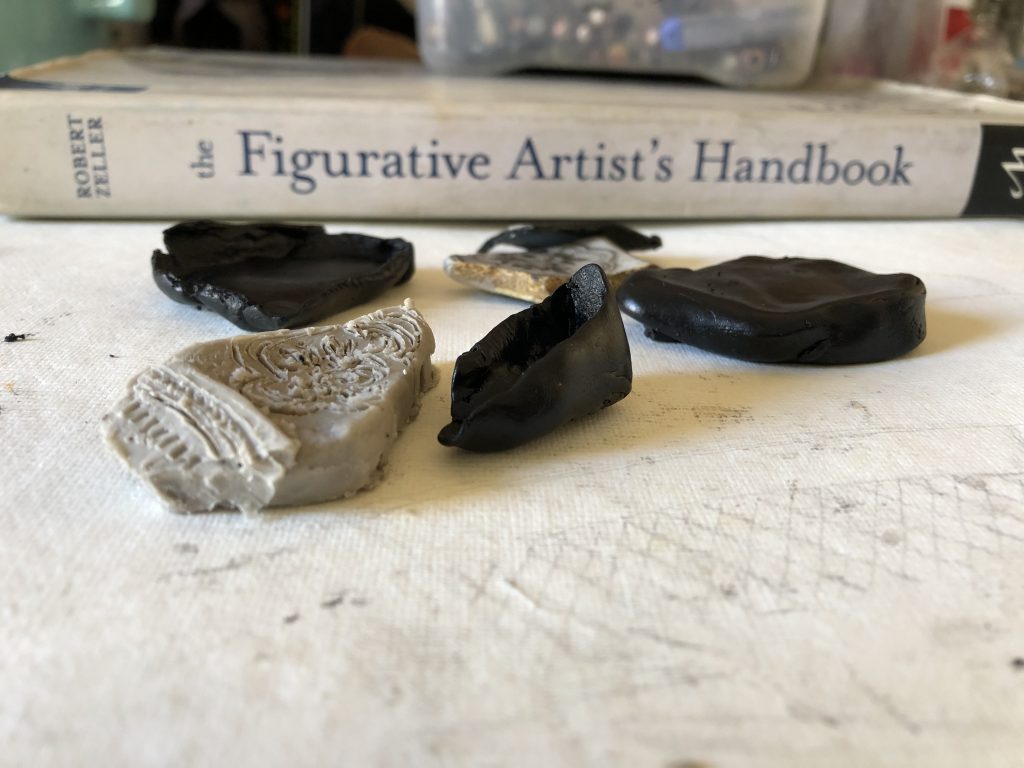
Fig. 15 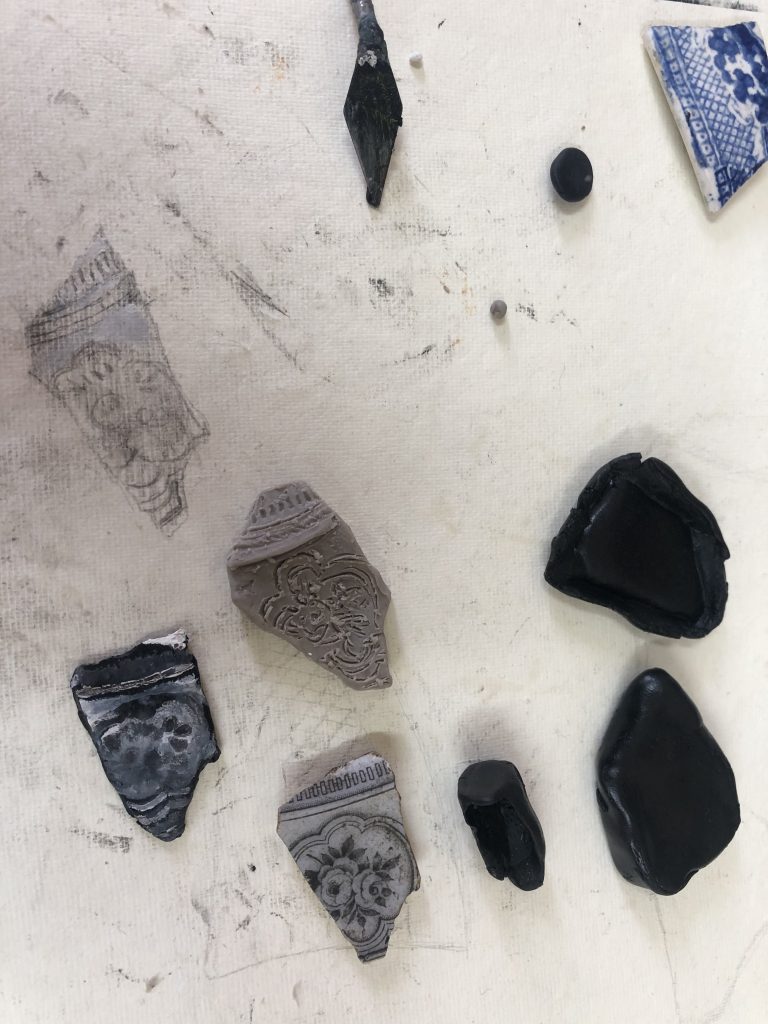
Fig. 16 
Fig. 17 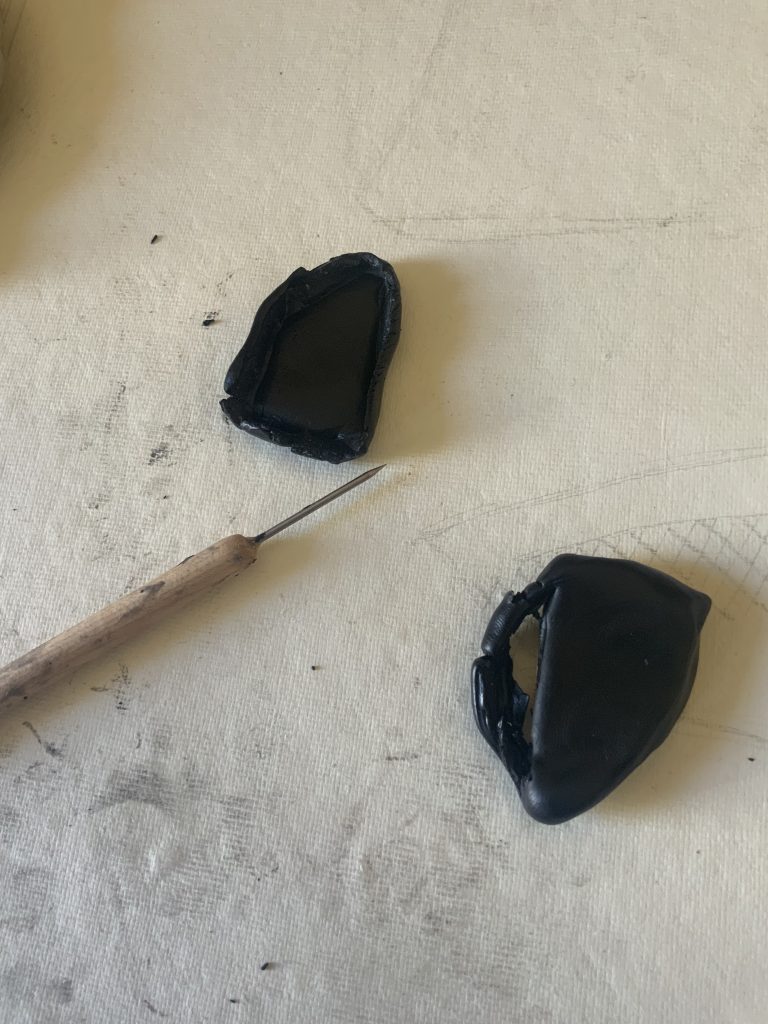
Fig. 18 
Fig. 19 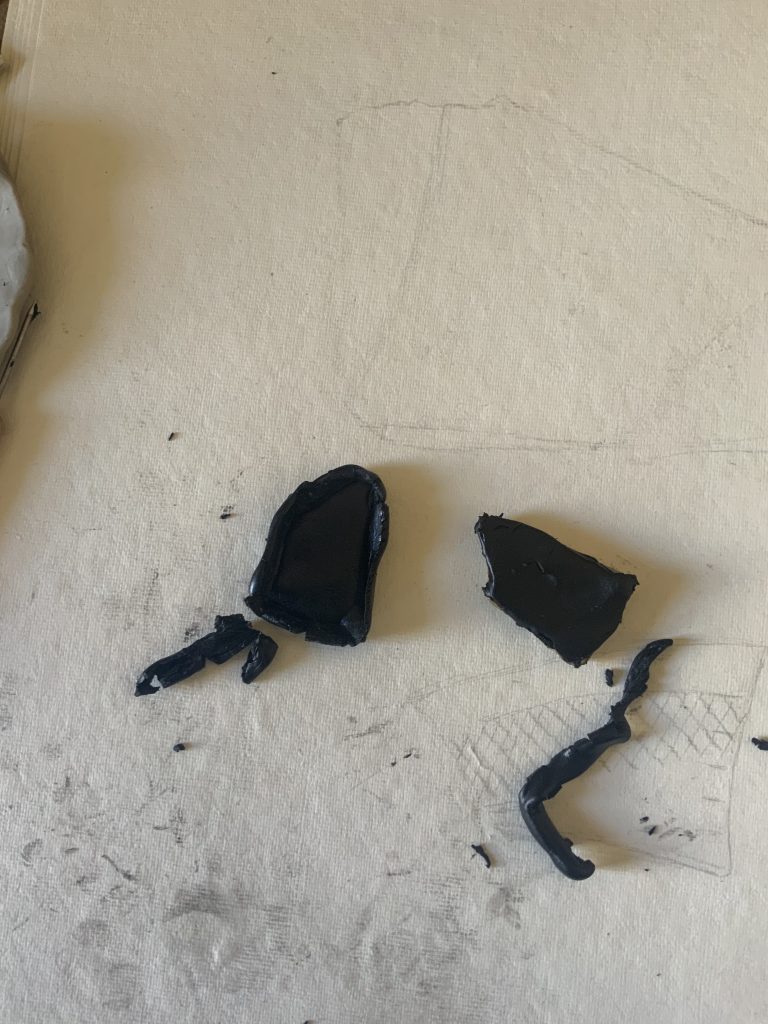
Fig. 20 
Fig. 21 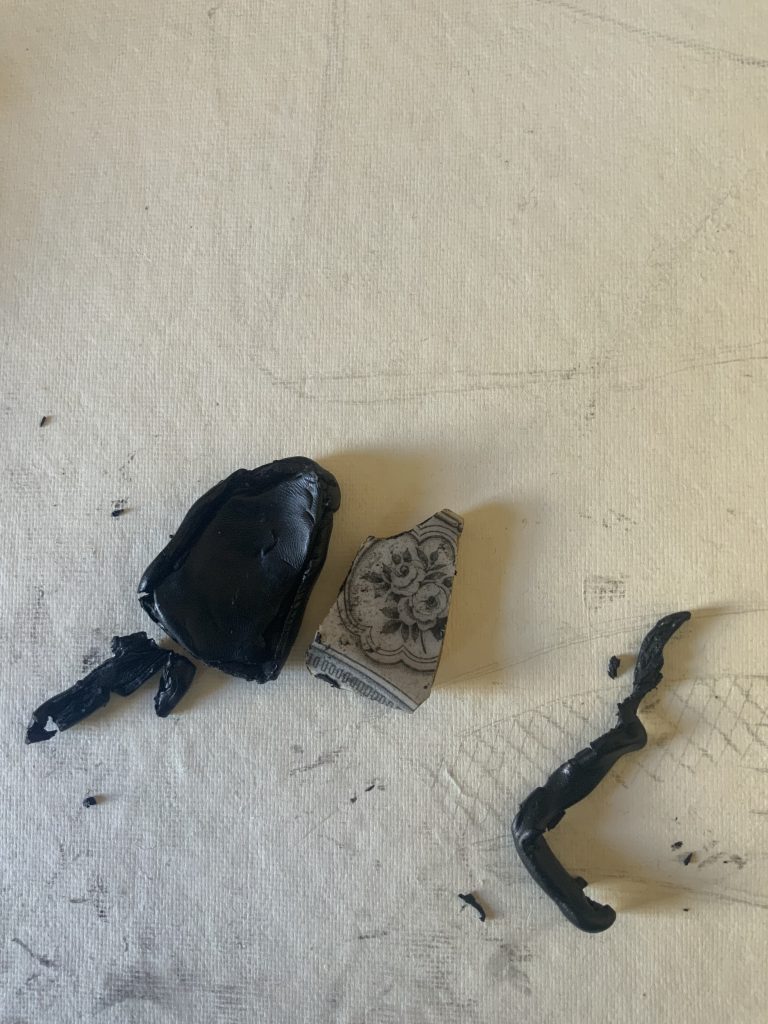
Fig. 22 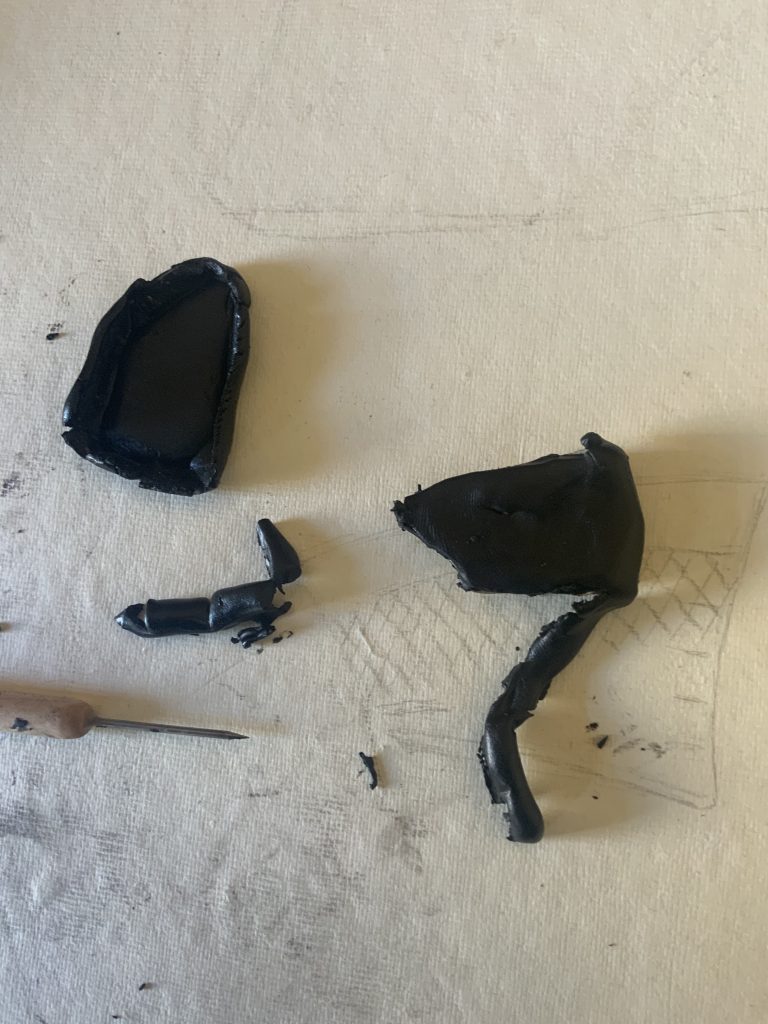
Fig. 23 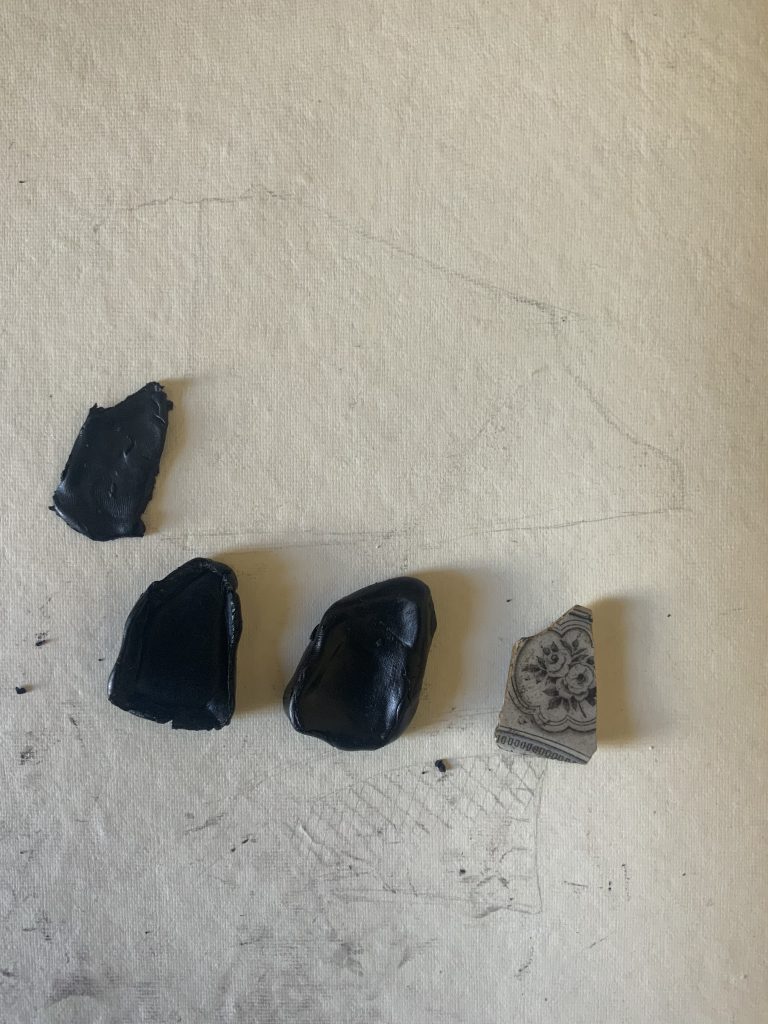
Fig. 24 
Fig. 25 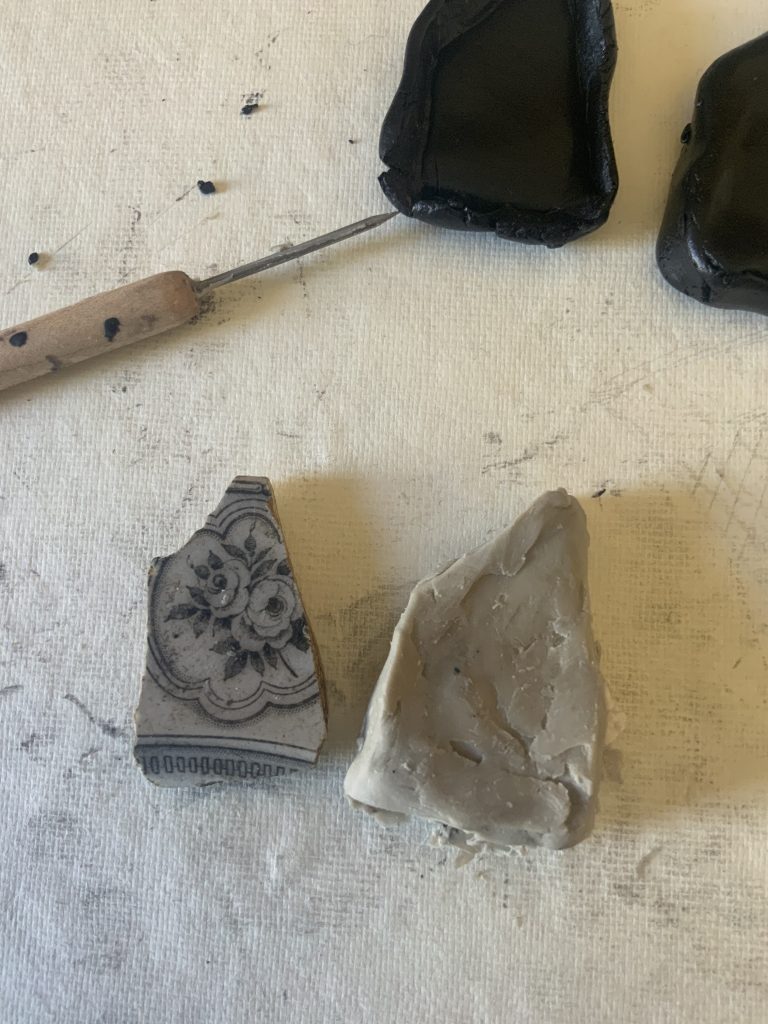
Fig. 26 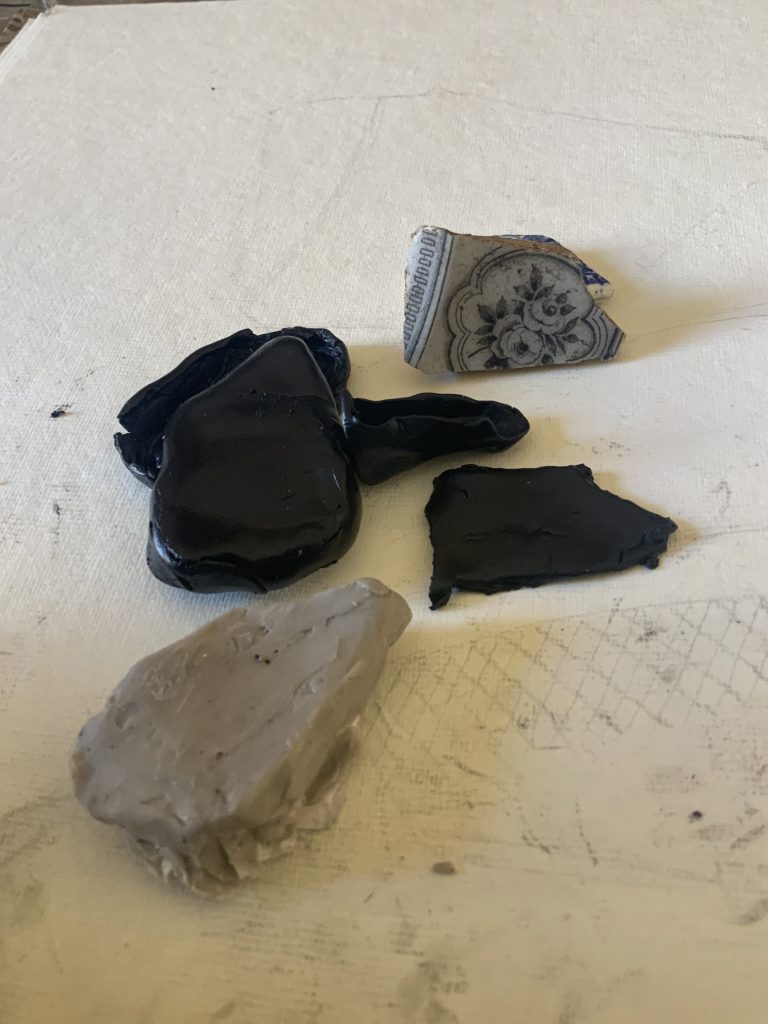
Fig. 27 
Fig. 28 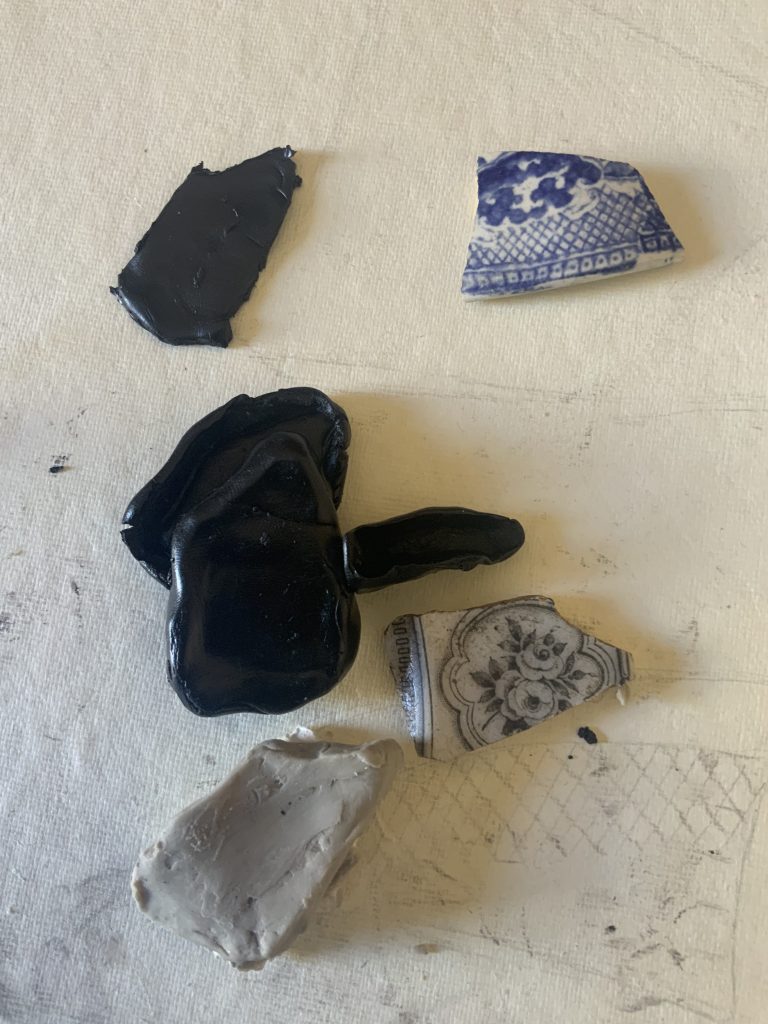
Fig. 29
.
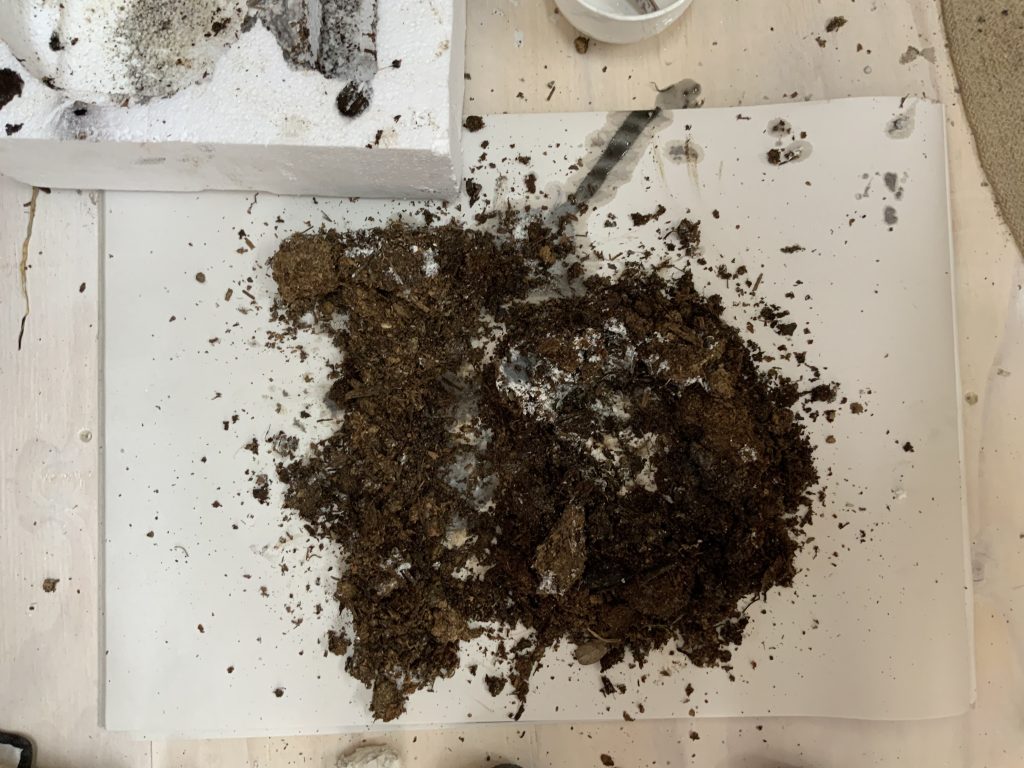
Fig. 30 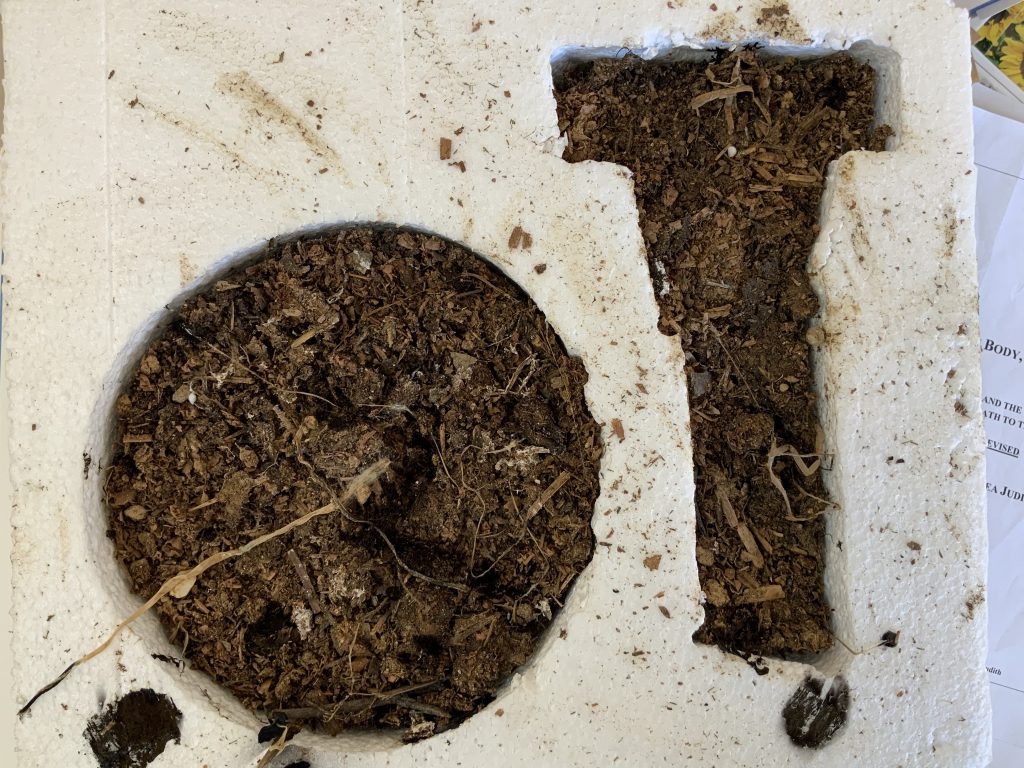
Fig. 31 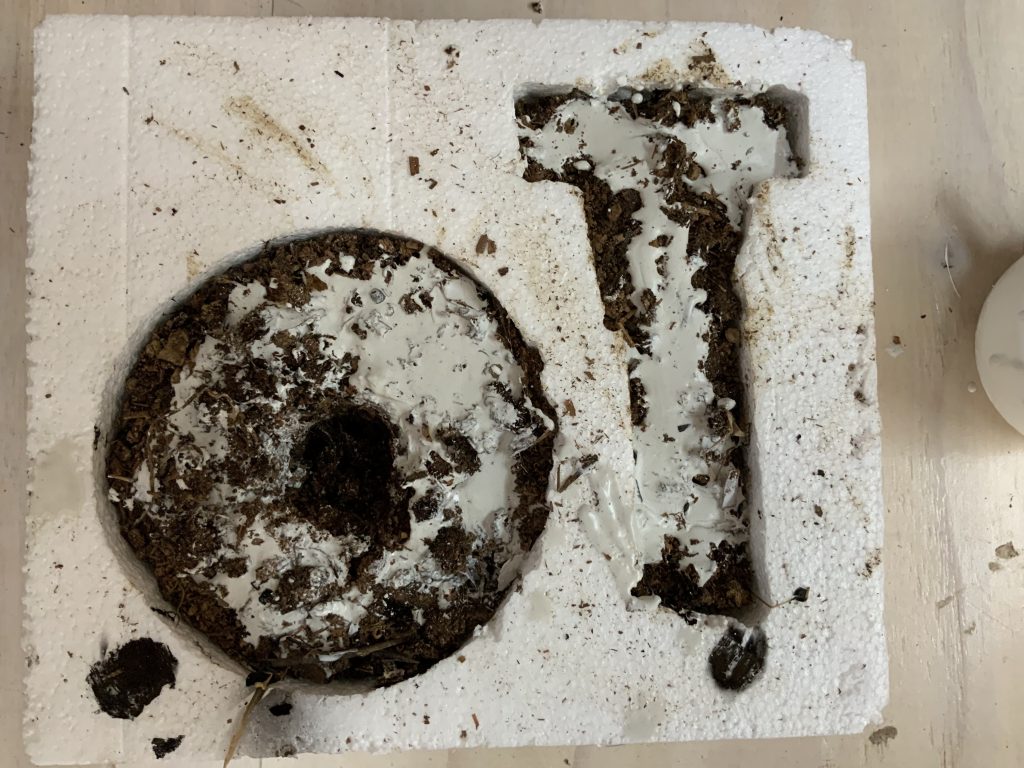
Fig. 32 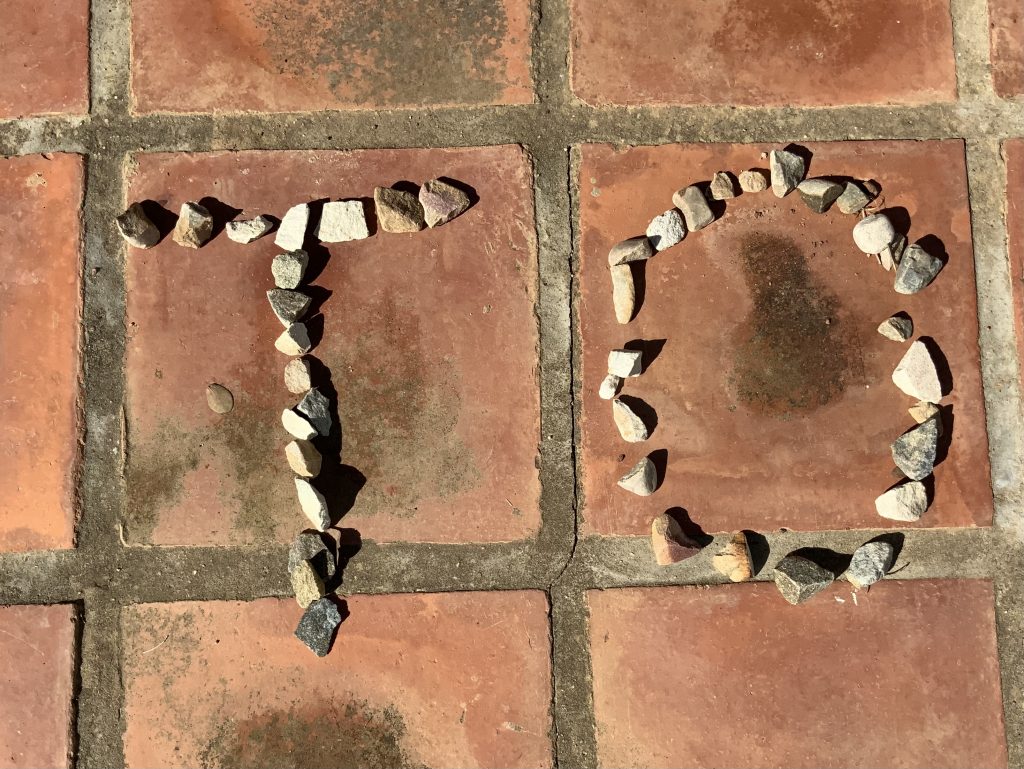
Fig. 33 
Fig. 34
My found pottery shards have always been close to my interest and I decide play around with ideas. I had some polymer clay which I can bake at a low temp (130c) and tried making a mould of one of the pieces. It was not very successful. My idea was about making an index, a literal mark with the material. A few weeks later I came back and added a piece made with my new Bongo putty. I became inspired to use Plaster of Paris as well.
Below are my first attempts with soil and an empty polystyrene container. I saw the word TO……which relates to Serra’s verb list, turned backwards in this container. I placed dried soil into the container, later added a thin layer of a watery plaster of Paris powder mixture onto it, then some black ink. This was not successful as the ground as a material to mold was not adhering like I think clay would have done. A thicker layer of plaster of Paris would also aid in a better mold. Packing the stones is just the final easy option, but using text as a graphic element can work in a piece such as this. I like the play with reading backward, it reminds of games my younger sister and I used to play as kids.(my name became Nerak) I felt I became aware of materials to make with and how mold can be a way to create 3d objects in my own studio practice. I would like to explore this further. I want to consider clay and plaster of Paris to mold and to form objects with. The idea of shaping something into a particular form is exciting to me. I also feel strongly that this molding could be part of my own development as I explore and realize the importance of staying in the moment.
I want to be more tactile in my making and consider clay or gypsum as materials. The words of Serra stays with me as I consider, to fold, to touch, to mold, to pinch, to roll, to through, to collect, to store, to keep, to trace, to transform
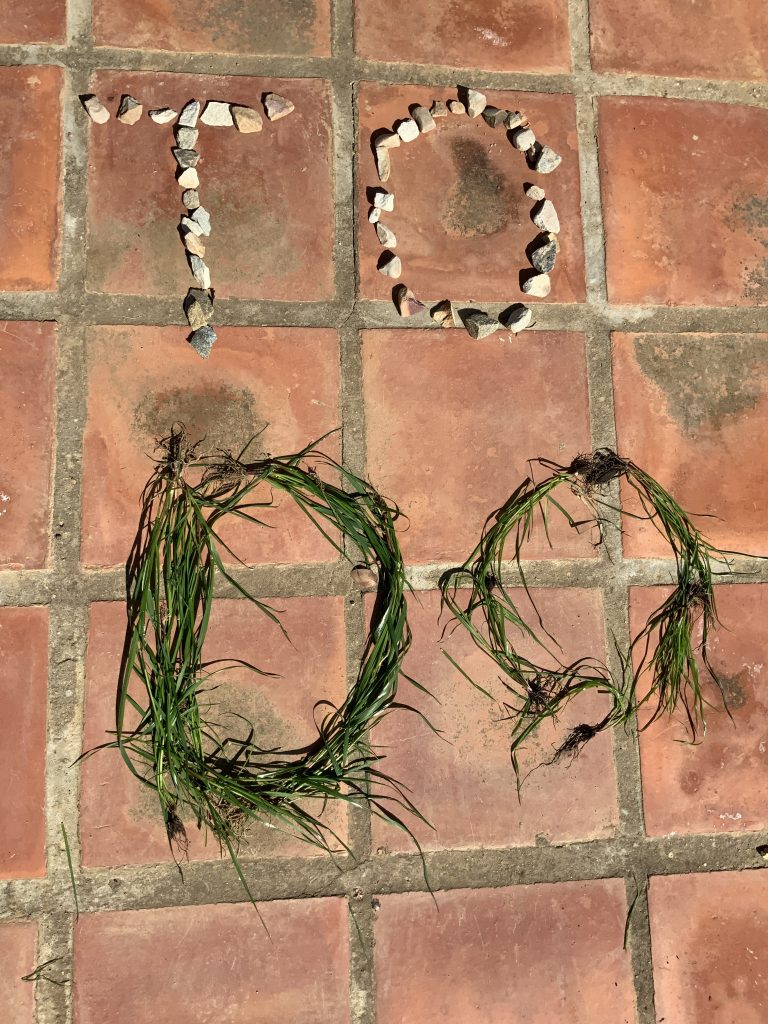
I have a box with a few rolls of plaster/bandage and decide to use it to make maquettes. There are 4 rolls, each 3m long and 8 cm wide. I am inspired to focus on drawings of lines, the cutouts above. I still consider the spatial medium of these drawings. I am following lines in space, by molding, manipulating, touch, folds, looking, noticing, experimenting, engaging, instinctive. the instructions for using the bandage is to soak the strips in water for 3 seconds. It is fast drying and should be hard in 12 h, I can paint over it, or even use multi-surface fiber pens (?) to decorate it. I did not plan to extract the support once it is dry, I saw the process as explorative and to find my way into the molding. I love working with my hands, the tactility of the process tells me this is a good learning experience. it reminds me of clay and that I can be more explorative and considerc3d in my practice. it also becomes clear that I can go back to a work: To change it, To rework it.
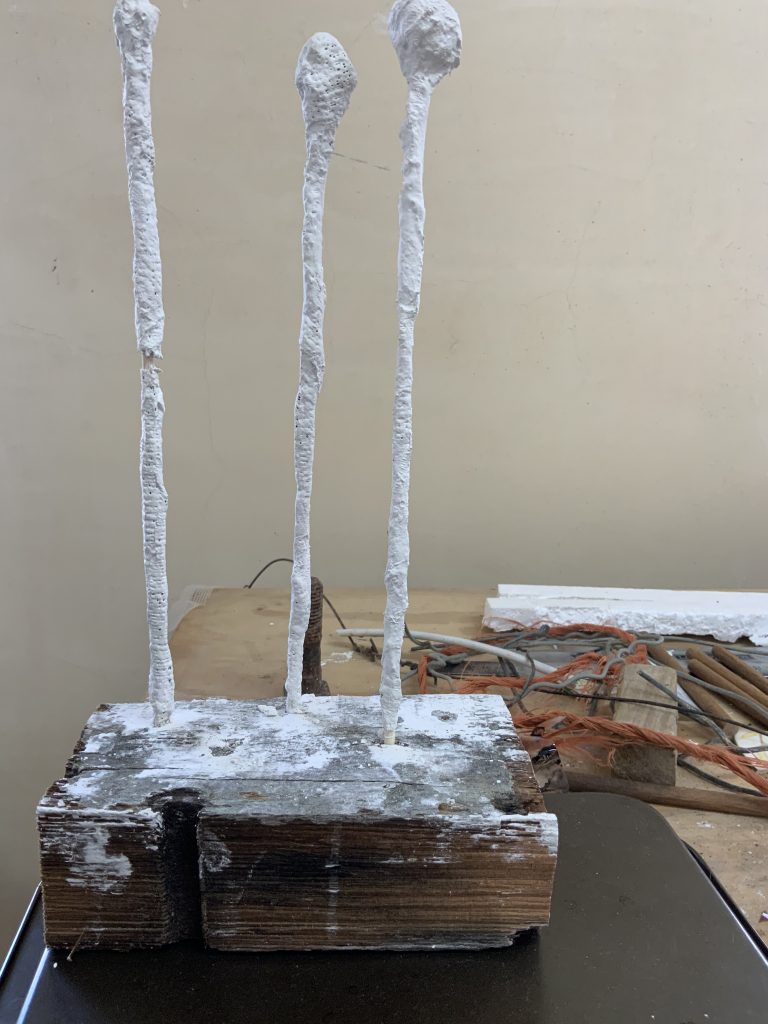
Fig. 36 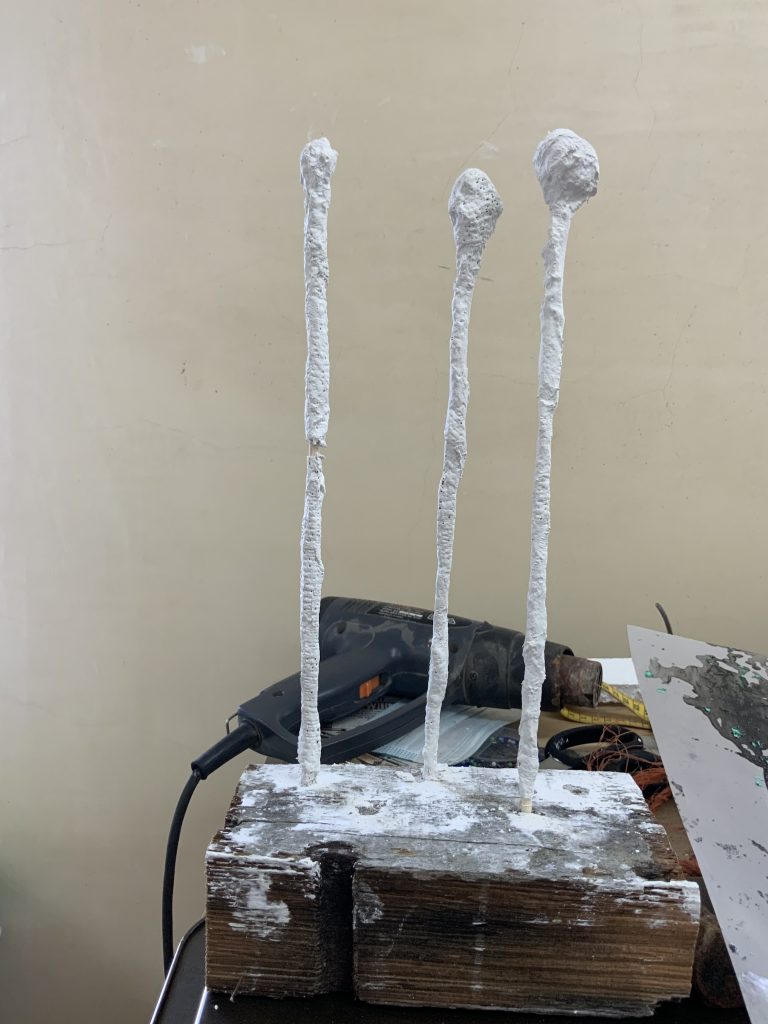
Fig. 37 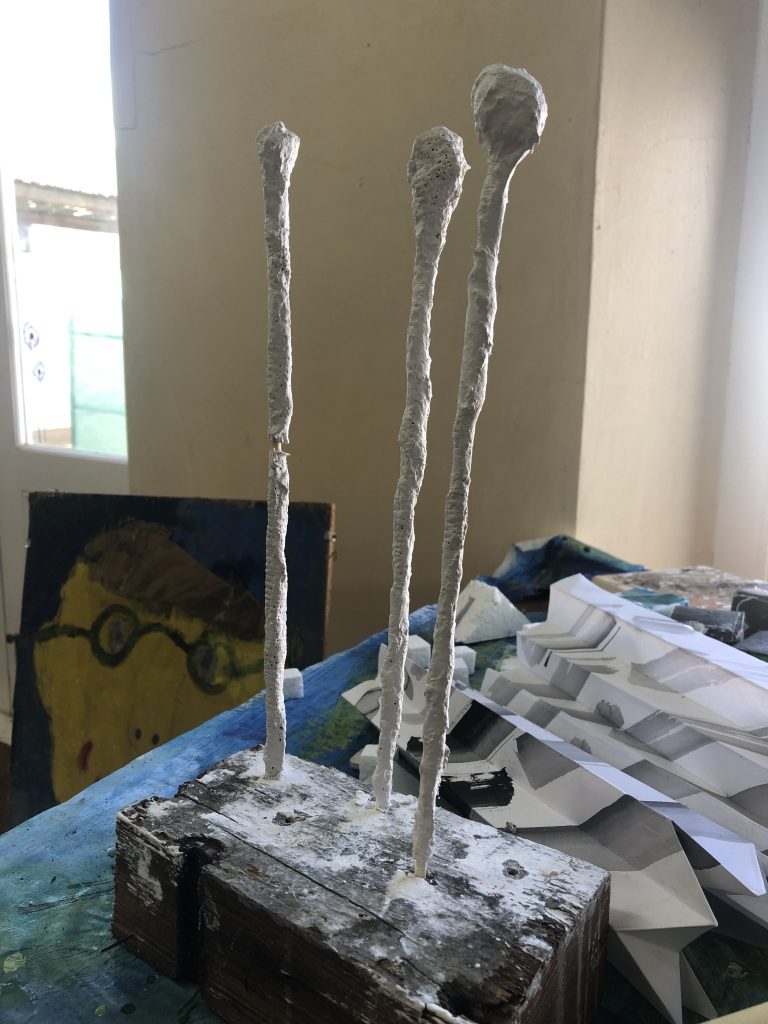
Fig. 38 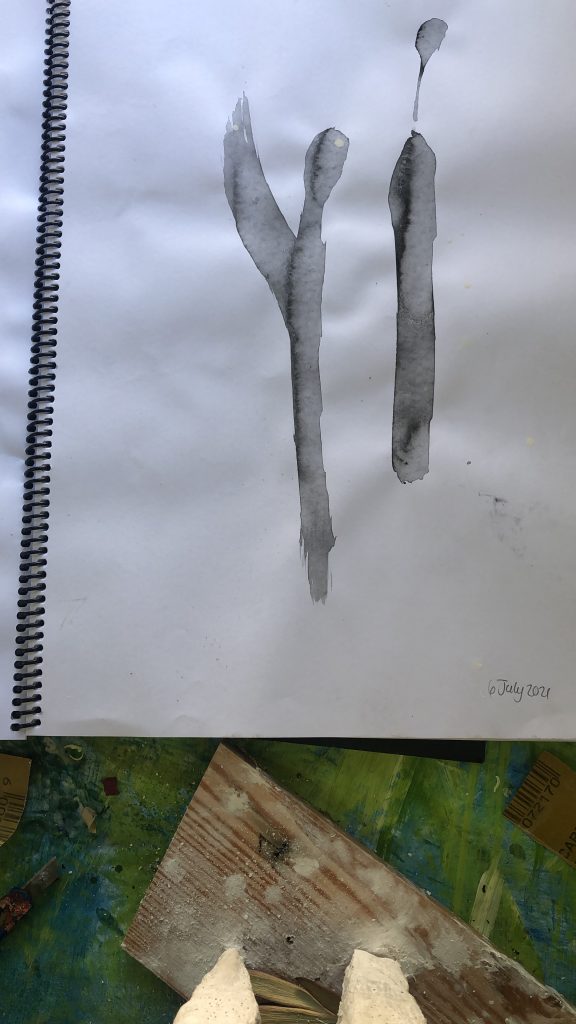
Fig 39 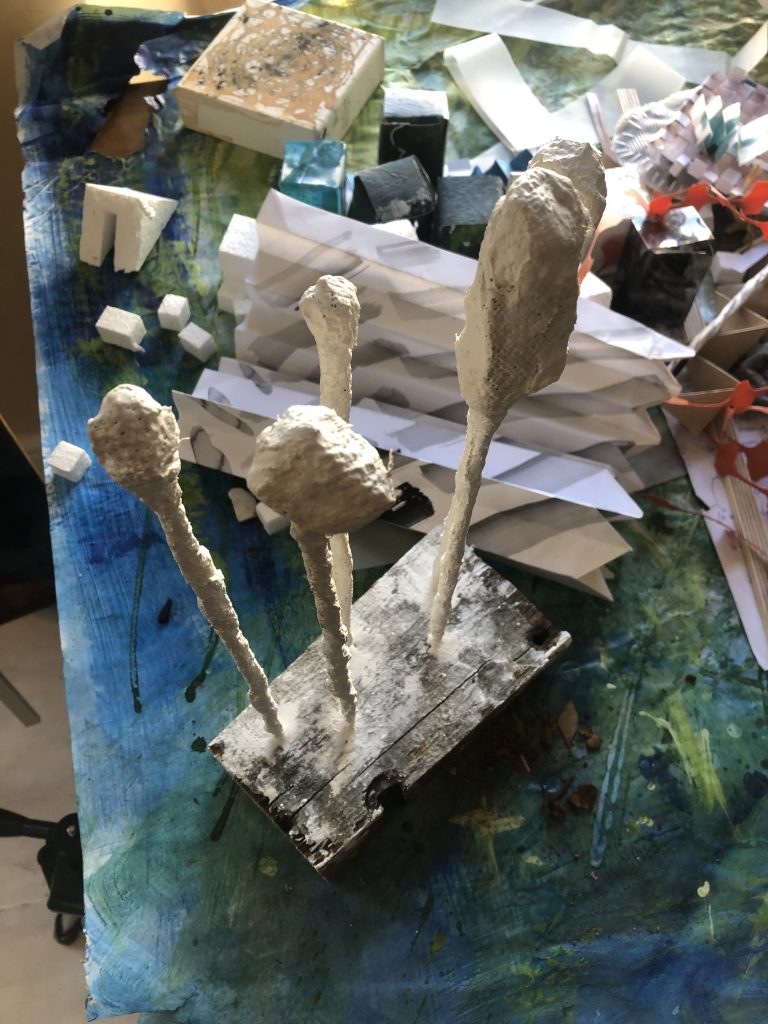
Fig. 40 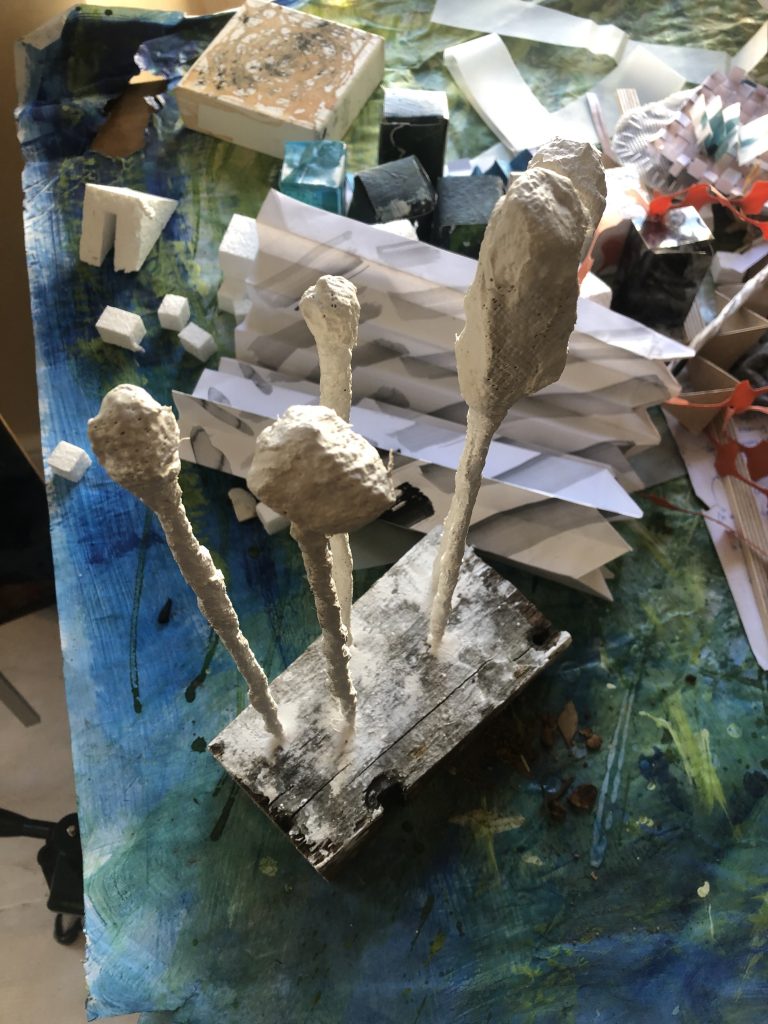
Fig. 41 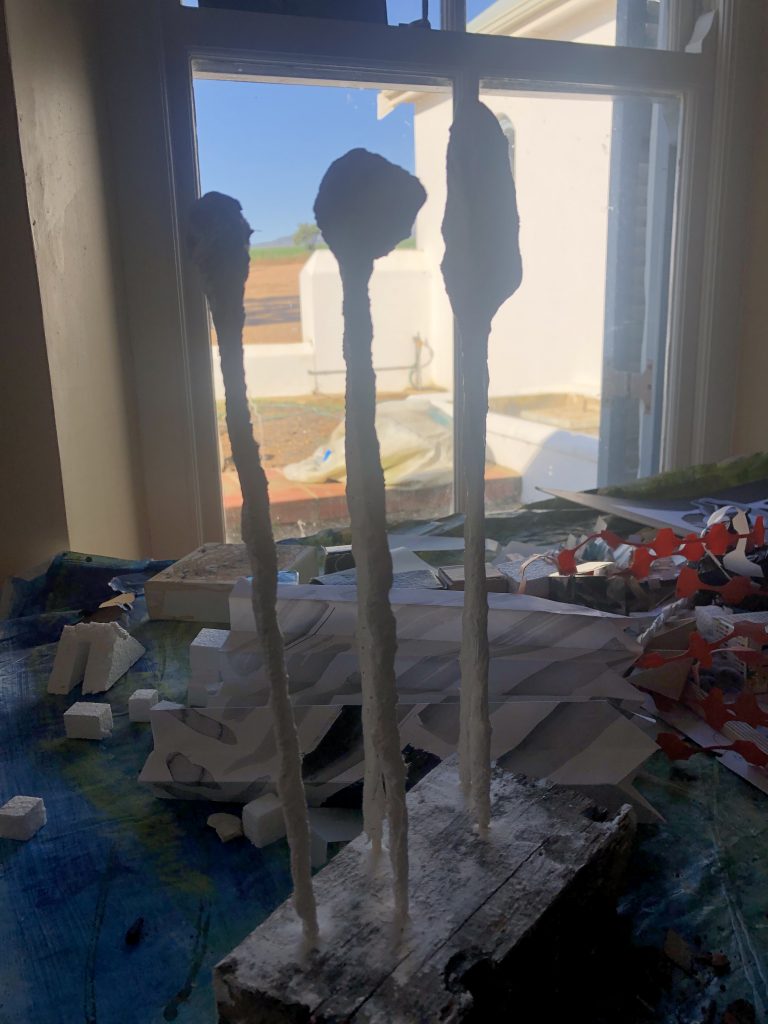
Fig. 42 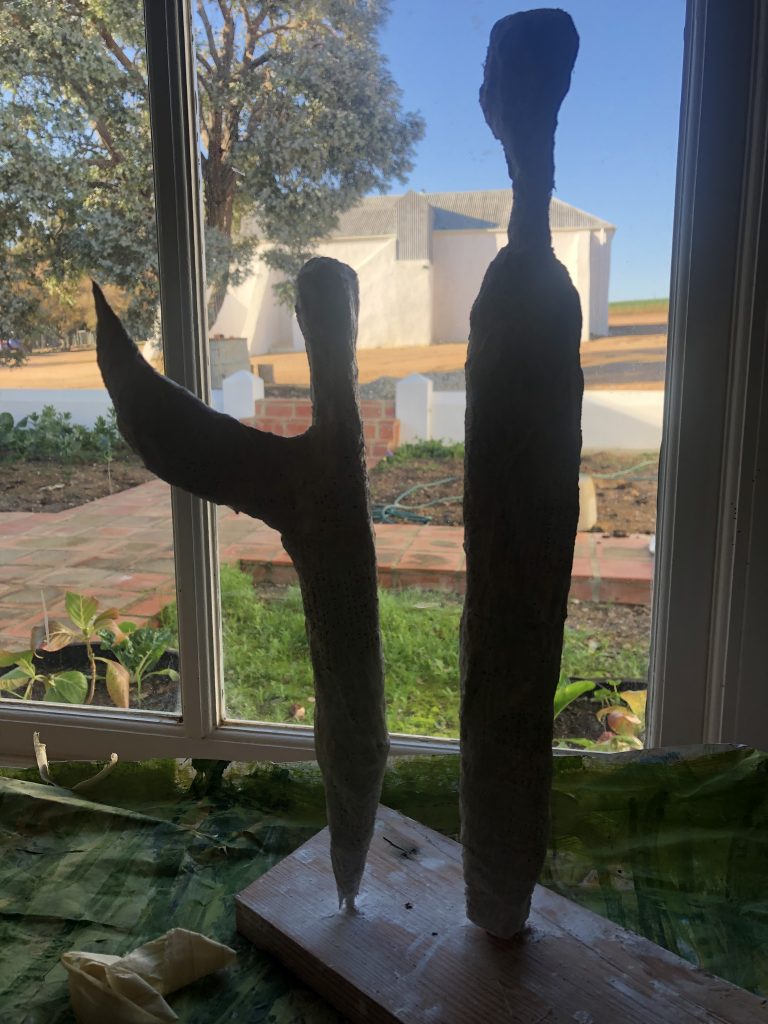
Fig. 43 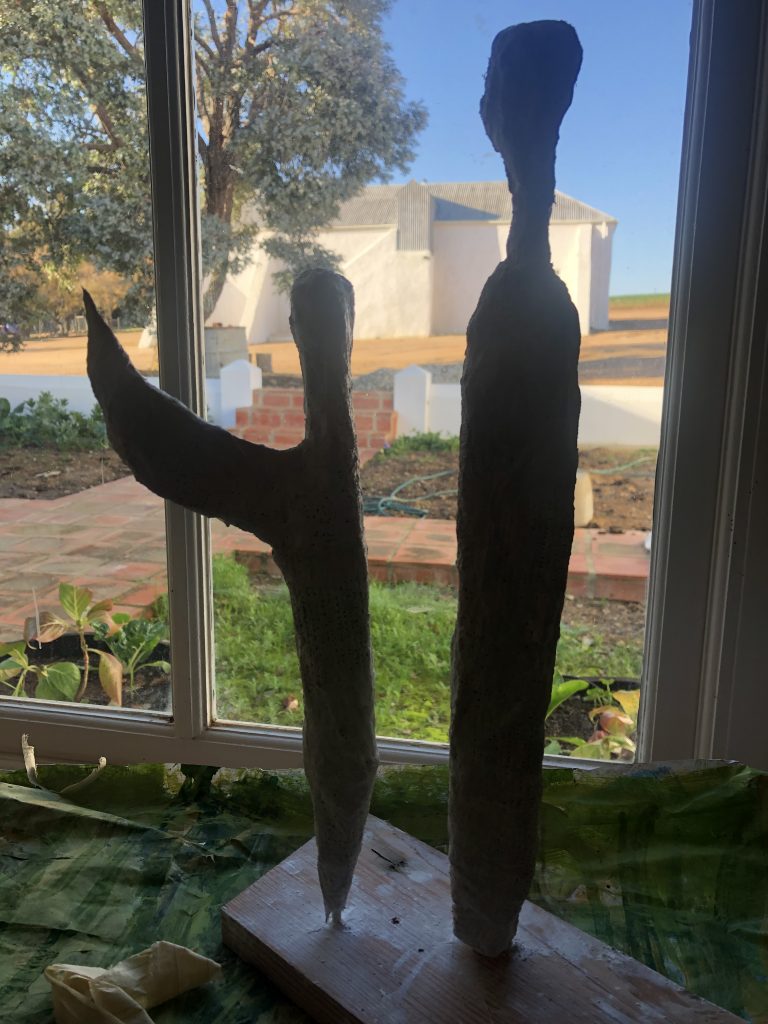
Fig. 44 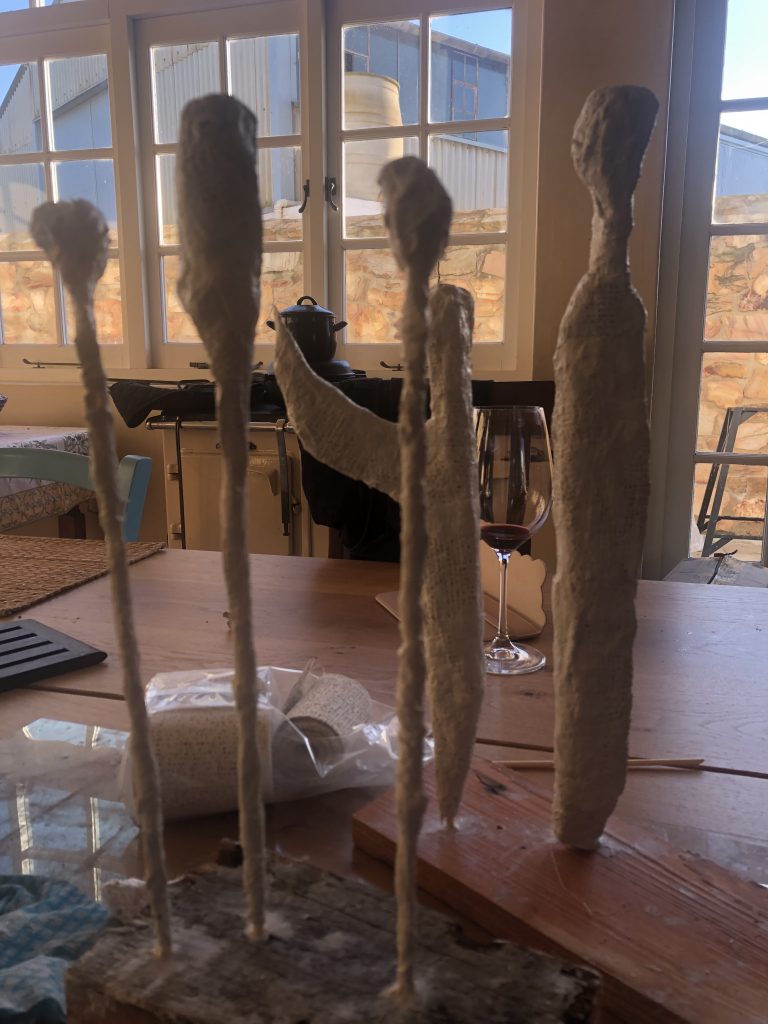
Fig. 45 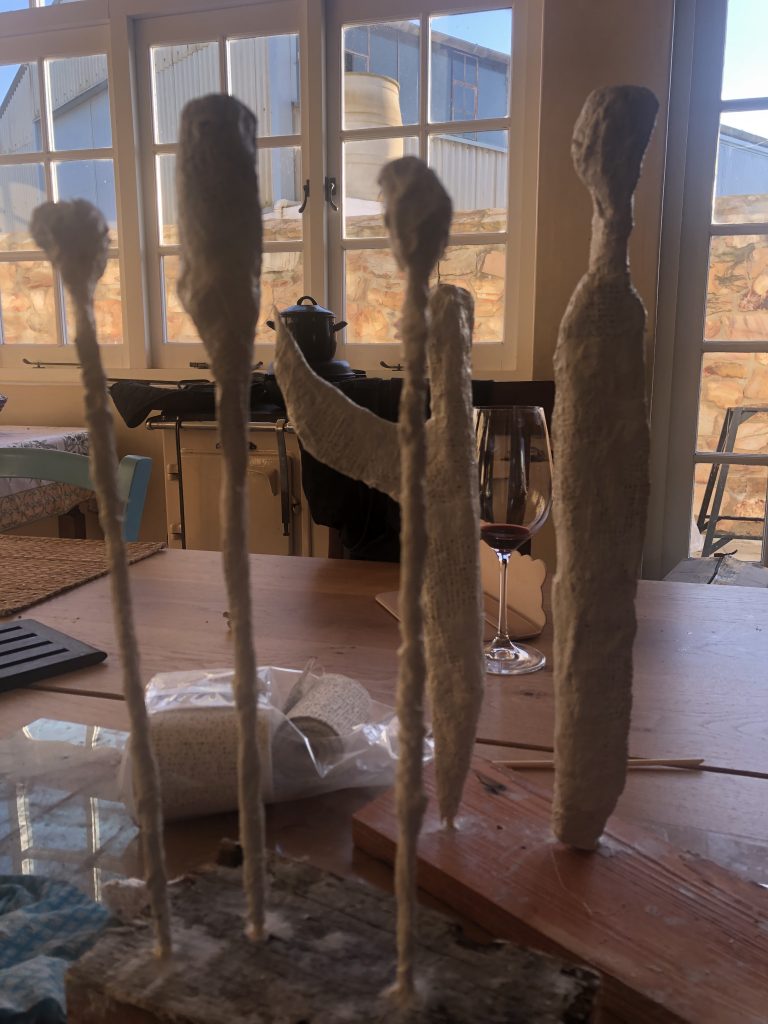
Fig. 46 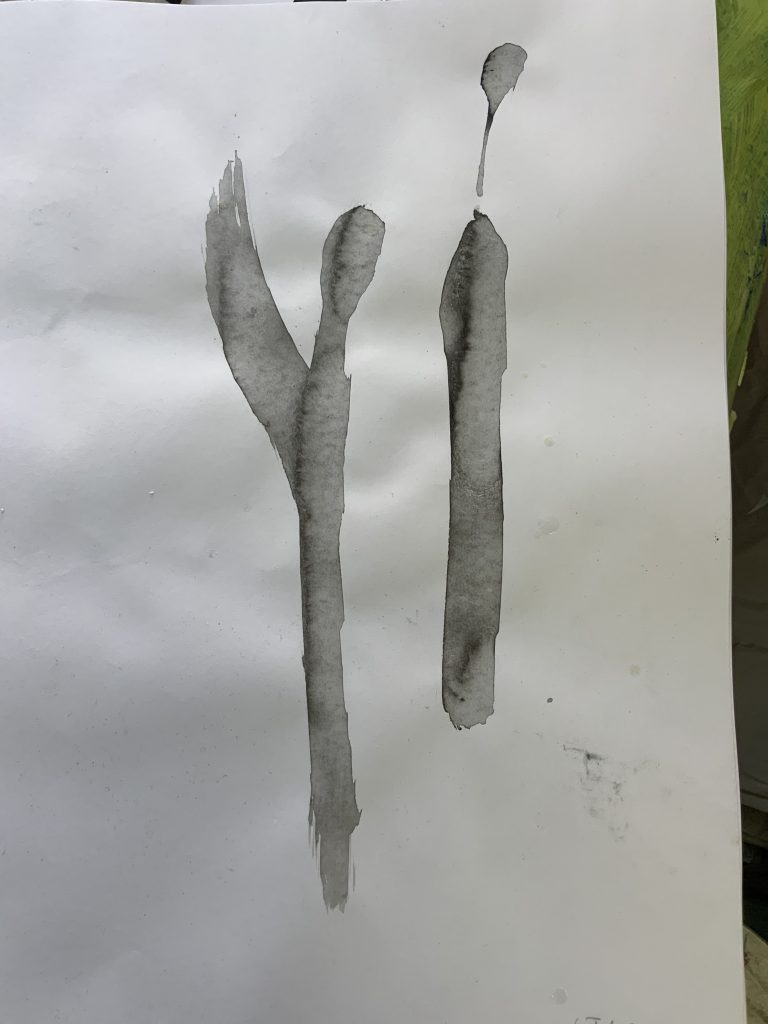
Fig. 47 
Fig 48 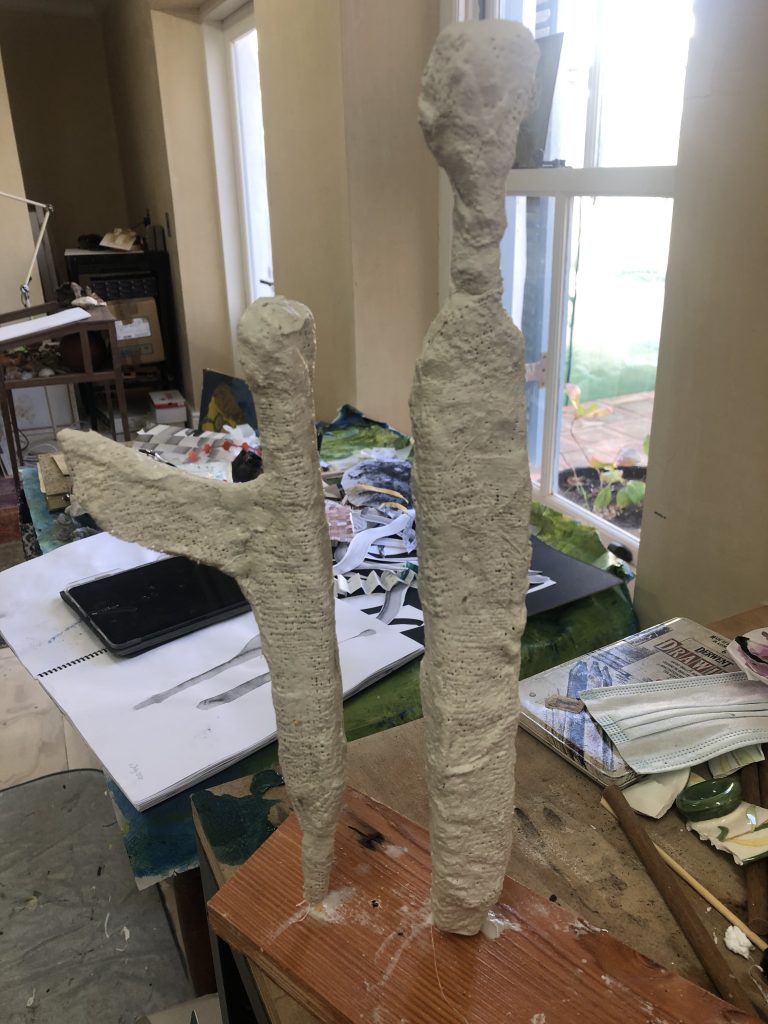
Fig. 49 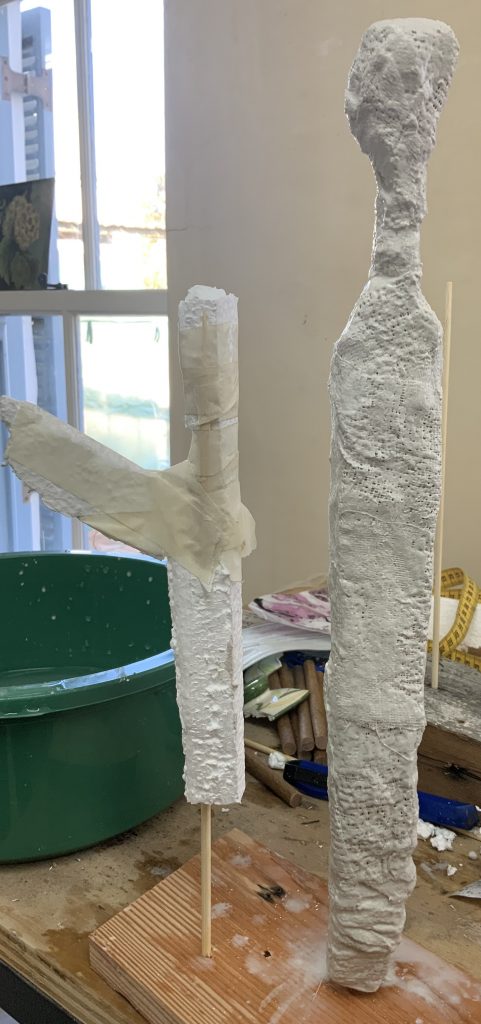
Fig. 50 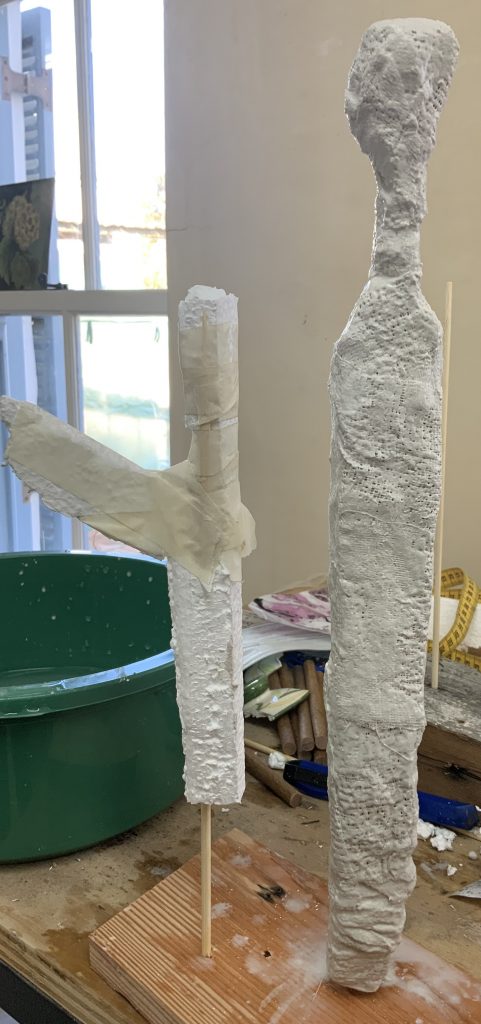
Fig. 51 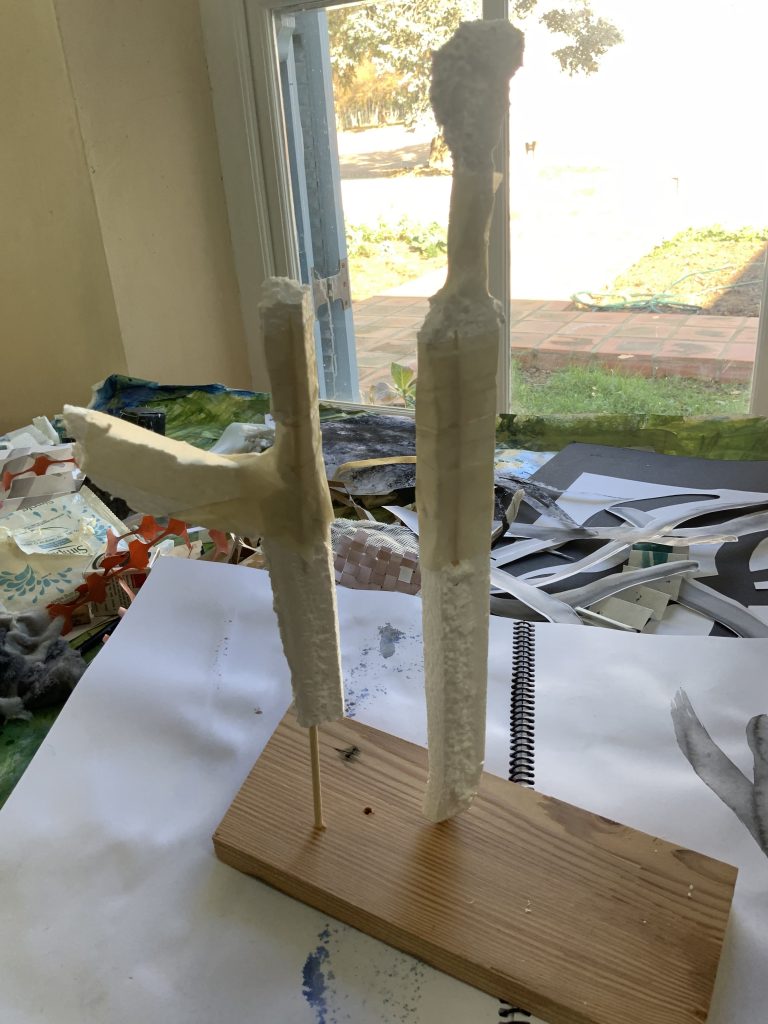
Fig. 52 
Fig. 53 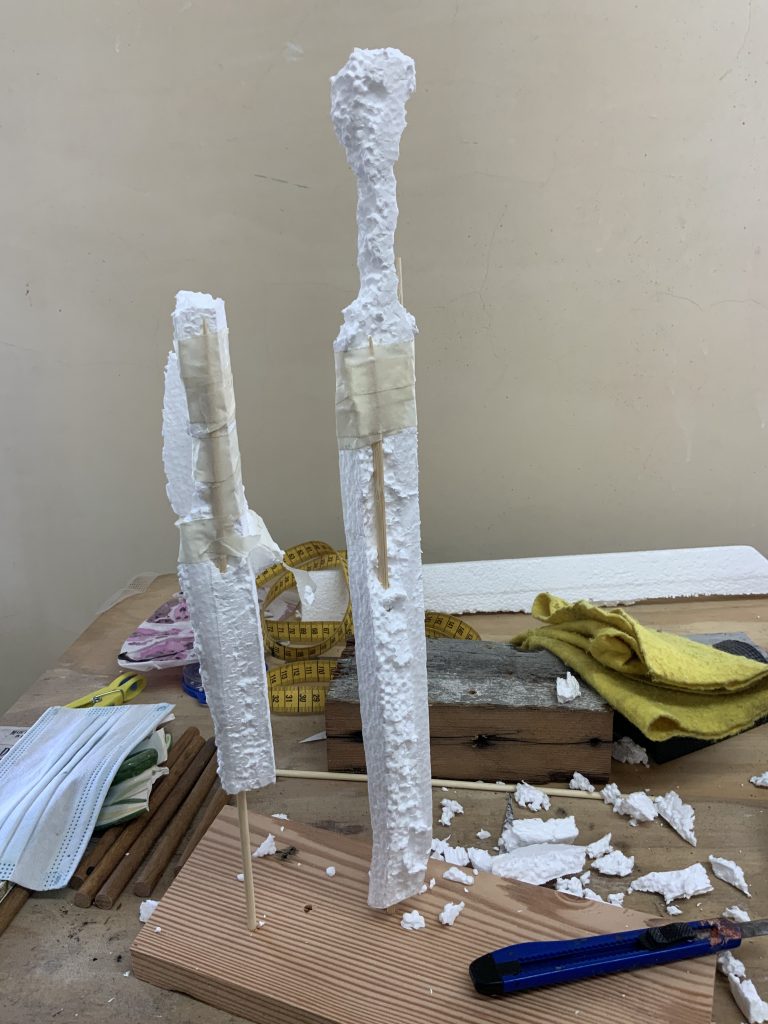
Fig 54 
Fig. 55
By now it is clear that my table is developing into a busy and changing space. I am not even sure if I understand the collect/make/arrange part of this exercise correctly, but feel strong that I should push through. I am motivated by what I read in the course study material: “Again, the exercises outlined in Part Two are designed to act as a jumping off point; feel free to develop ideas and approaches on your own terms.” (Painting 2: Studio Practice, p 31). I incorporate more packing materials, styrofoam, collect pieces of wood from my husband’s carpentry studio, as well as odd found objects.
I think about the making as a challenge, to make in a 3d way. But where do I find my own integrity – I have to seek the materials, which I do feel talk to me in a way – paper, soil, clay, wood, stone/rocks. I remember learning in UVC 2 about Phylida Barlow and decide to do some reading and hopefully find the courage to make an object…. or more. (https://www.hauserwirth.com/ursula/31536-phyllida-barlow-the-edges-of-things). With her many years of experience it was interesting to hear how she attempted with her body of work, Small Worlds, to go back to simplicity, minimum of ideas, getting closer to the work, using the simplest of materials. The Covid pandemic played a big role in this making process. Around me are many possible materials, feathers, twine, sticks, wood shavings, leaves, dried flowers, seedpods, stones…..
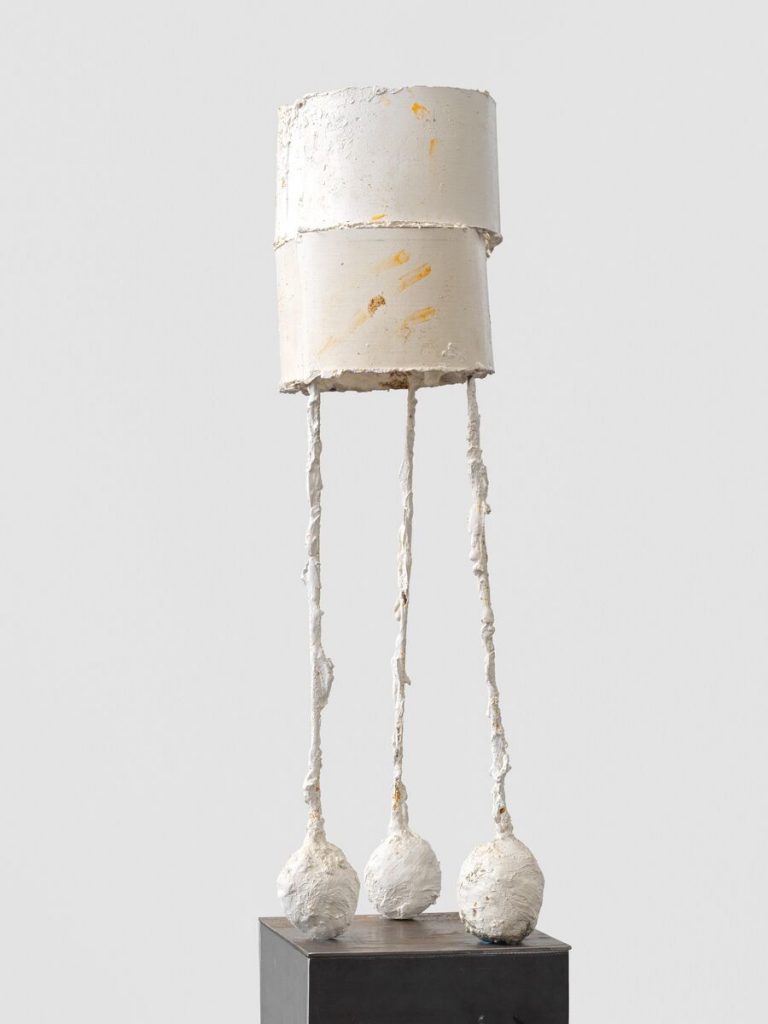
Below are 3 images of figures formed with wire and rope – thinking about my line making practice with ink and Japanese brushes. The work by W Kentridge is almost taking a drawing and making it oversized. The other images are more organic and natural in terms of their materiality as well as their form. I am asking is this gestural language and how is the meaning understood – can a viewer see a ‘human form’, can a viewer see movement of this form? I find the objects simple and almost primitivist? I consider the fact that my focus is in a way finding an answer as to how a painting speaks to sculpture, like in a physical language, which is felt when the object ‘occupy’ space, and not flat on paper, it gets form.
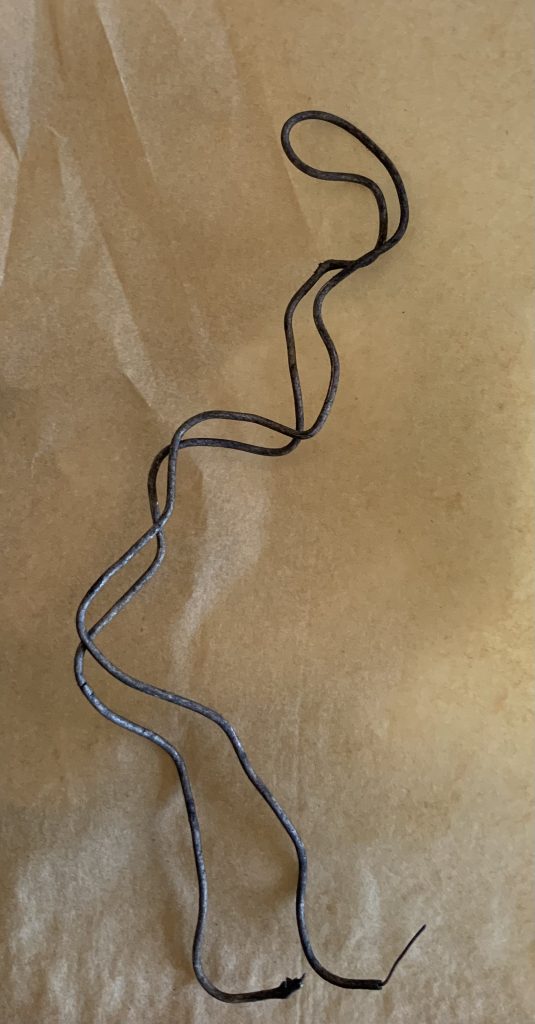
Fig. 57 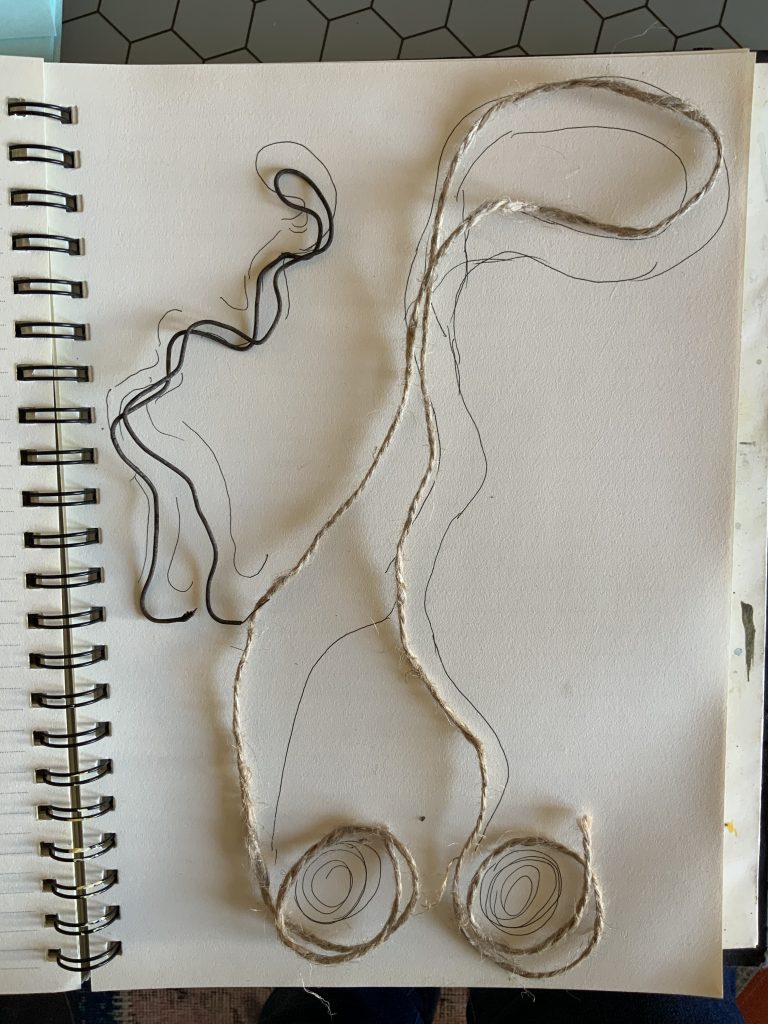
Fig. 58 
Fig. 59 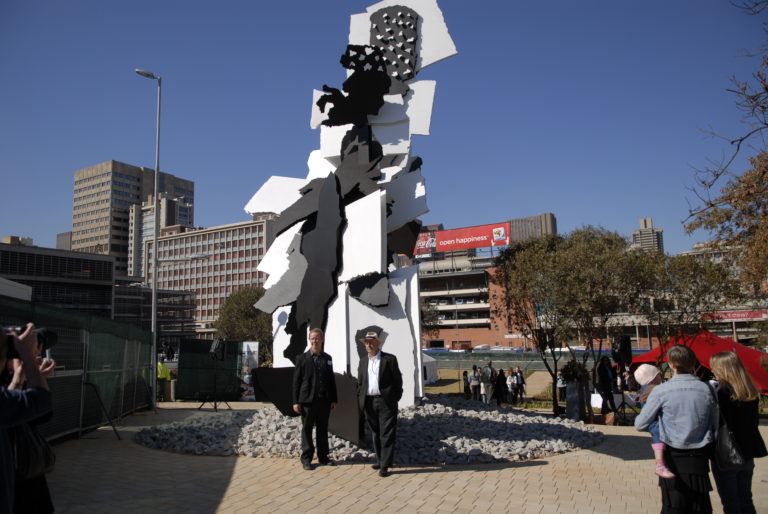
Fig. 60 Public art by W Kentridge in Johannesburg 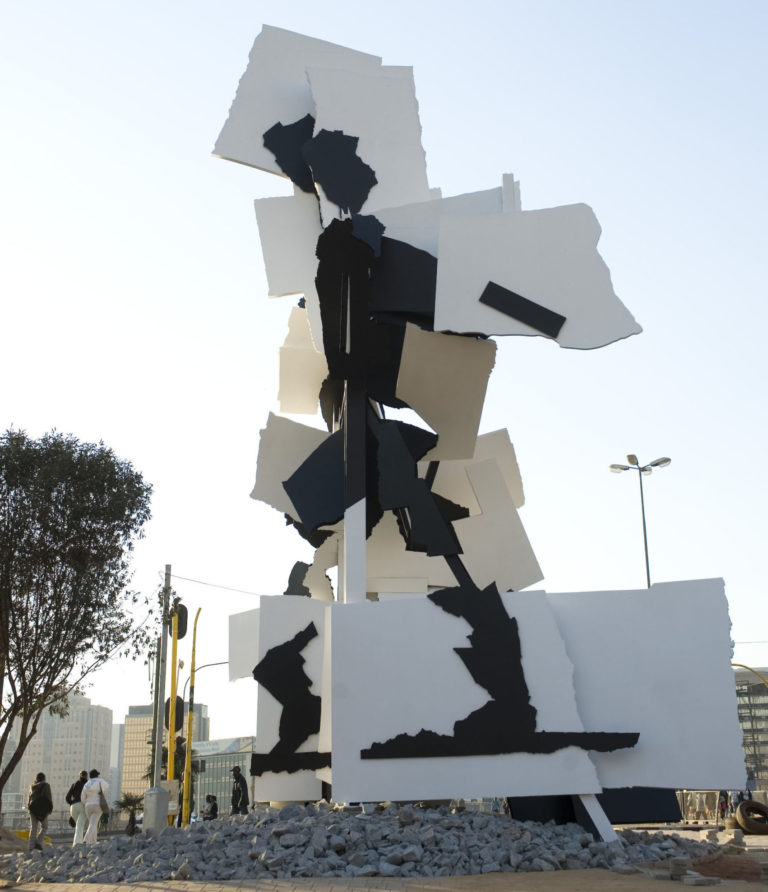
Fig.61 W Kentridge public art work more views 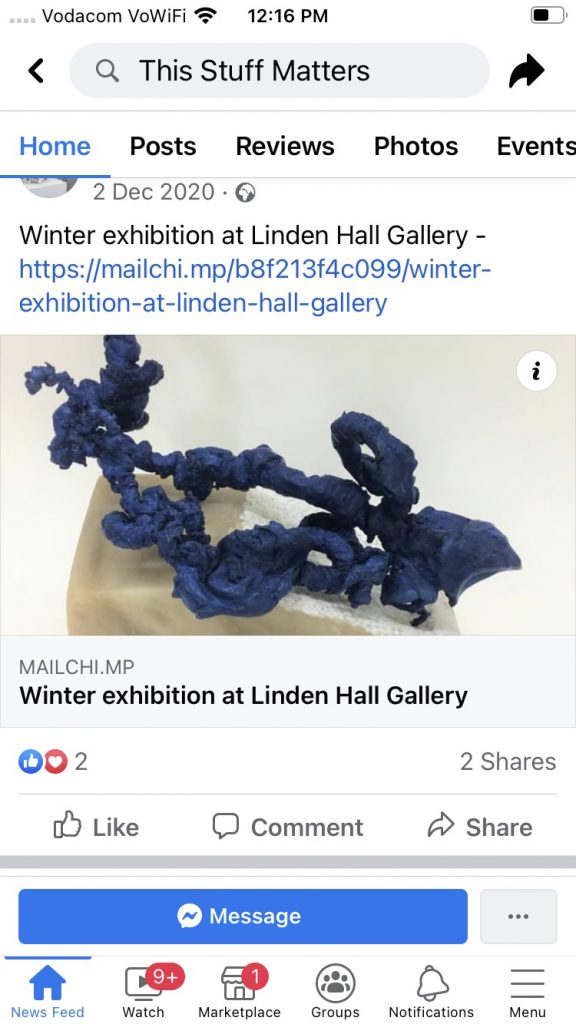
Fig. 62 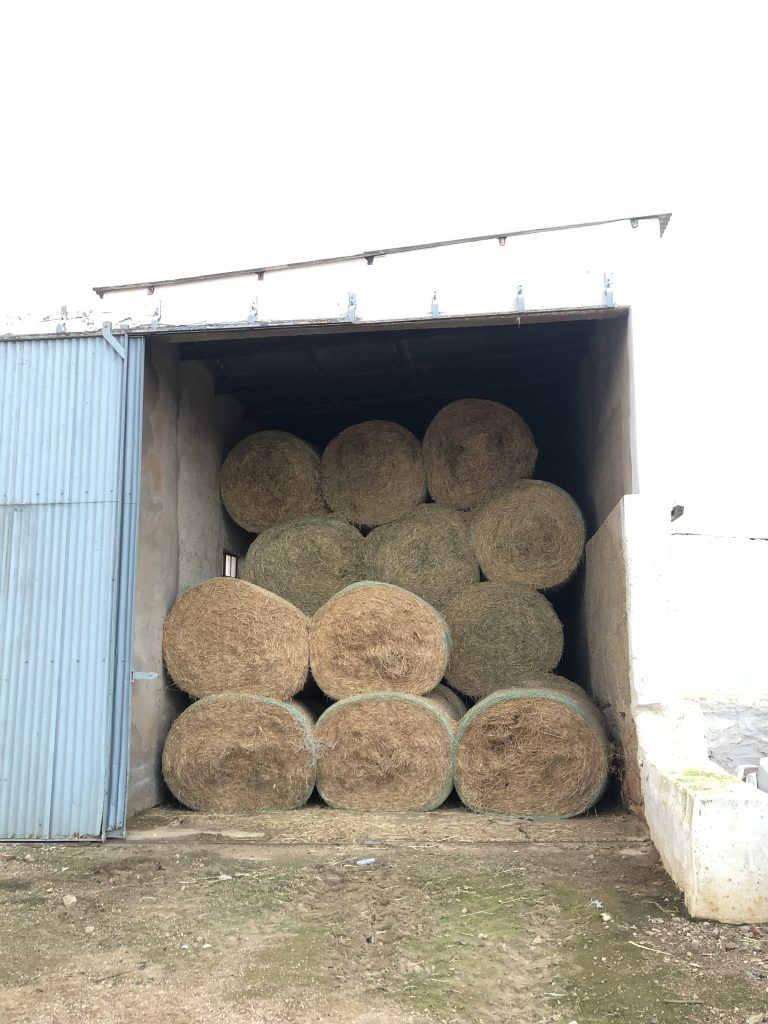
Fig. 63 Bales in the store, Langvlei Farm, South Africa 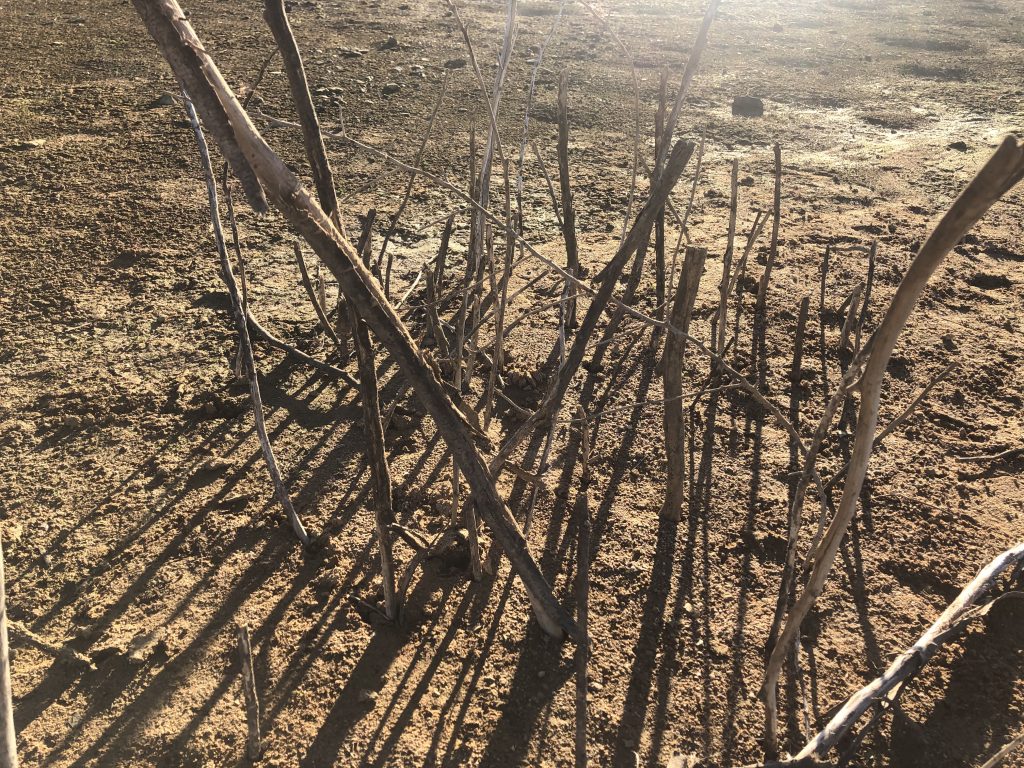
Fig. 64 Sticks planted in empty dam – playful time 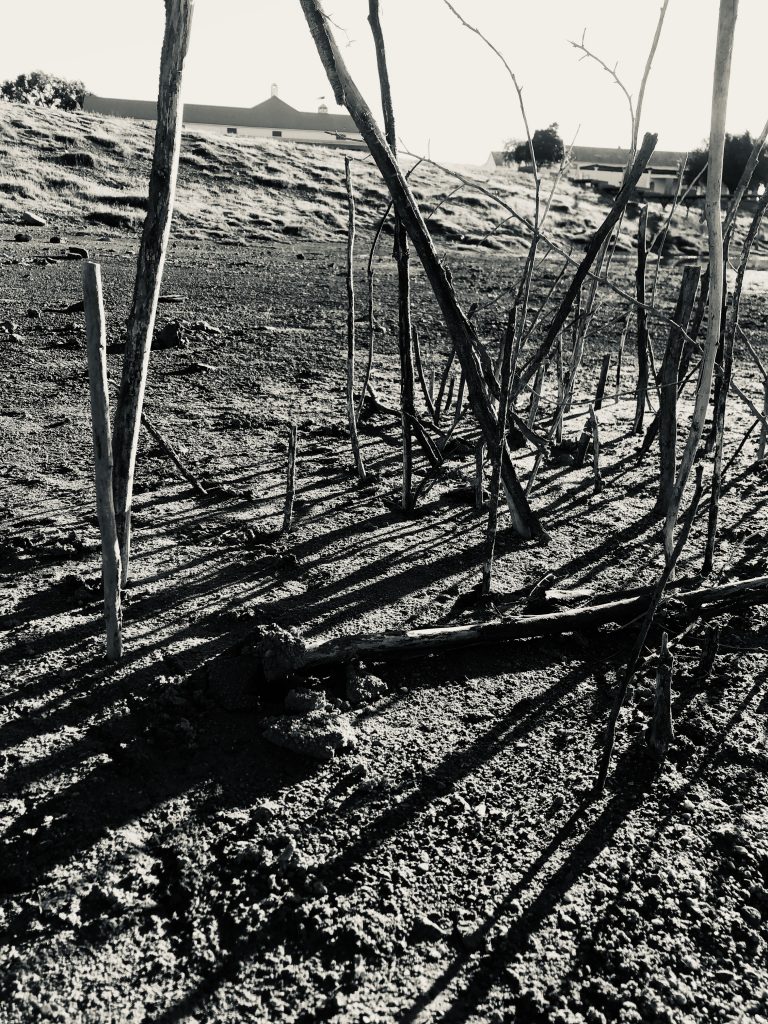
Fig. 65 Sticks planted – in tonal colours
‘……that’s my primary interest in sculpture, that maybe it isn’t 100% visual. It’s about all kinds of longings, the longing to touch, the longing to walk around and still engage. Your movement, your bodily movements, react in 360 degrees of different ways with the thing you’re engaging with. It’s a restless art form that I think is a language that isn’t just specific to objecthood.’—Phyllida Barlow. (taken from above video)
Collecting
The exercise asks of me to discuss my choice of objects as to what unites them and what drew me to them? I am also reminded to keep in mind that the objects and materials might be incorporated into an artwork, or study, later in the process. My little ‘table’ is filled with found pieces, collected over years and different places. I mostly ‘collect’ seed pods, stones, leaves, feathers, skeletal bones, pottery shards and shells – this list is as comprehensive as I can be at this moment of writing. Can I say they are united by my ideas about nature and a sense of wonder I would like to remind myself of, when looking at, or touching them. I have made drawings of most of these objects over the years, as exercises in daily drawings, but have not really taken this process of having this collection much further. Over the years, since my early contacts with nature, I became a birdwatcher as well as learnt that I love to know the names of indigenous trees and plants, this spilled over into a love for gardening. Most walks in nature was always part of this learning about the living and non living outside my own living space. In my ‘cabinet’ is a selection from above list, as well as an old (BaVenda) clay pot, dried seagrass, thin wood shavings from my husband’s wood making and some folded paper I have been working with (words written on them). The light shines in from the door and comes mostly in the morning – facing to the South. I have a tall gooseneck lamp shining onto it, for different light considerations. As the sides and top are open, it is very much a table.
.
COLLECT
MAKE
Below are ideas around verbs such as, to visualize, to attempt, to drop, to see, to notice, to add, to fold, to manipulate, to remove. I made a cut out of a brush drawing I made. I cut and placed it on a sketchbook, then I draw lines, such as the brush lines with charcoal. I added some seed pods and folder paper onto this and then layered it with the cut outlines. I am so much more aware of this place, my studio space, where I can imagine and experiment with different ideas – mixing them in ways that do not make sense as it would have been I have been in a conversation or argument about meaning. I can change the layout, replace it, rearrange……use any material.
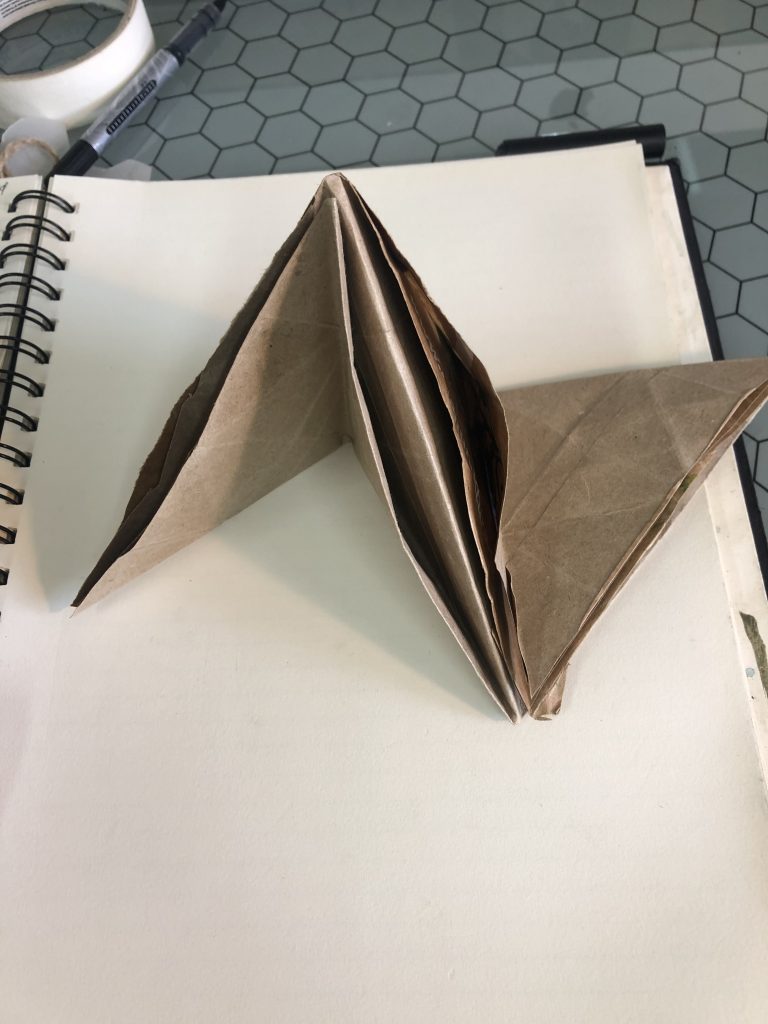
Fig. 66 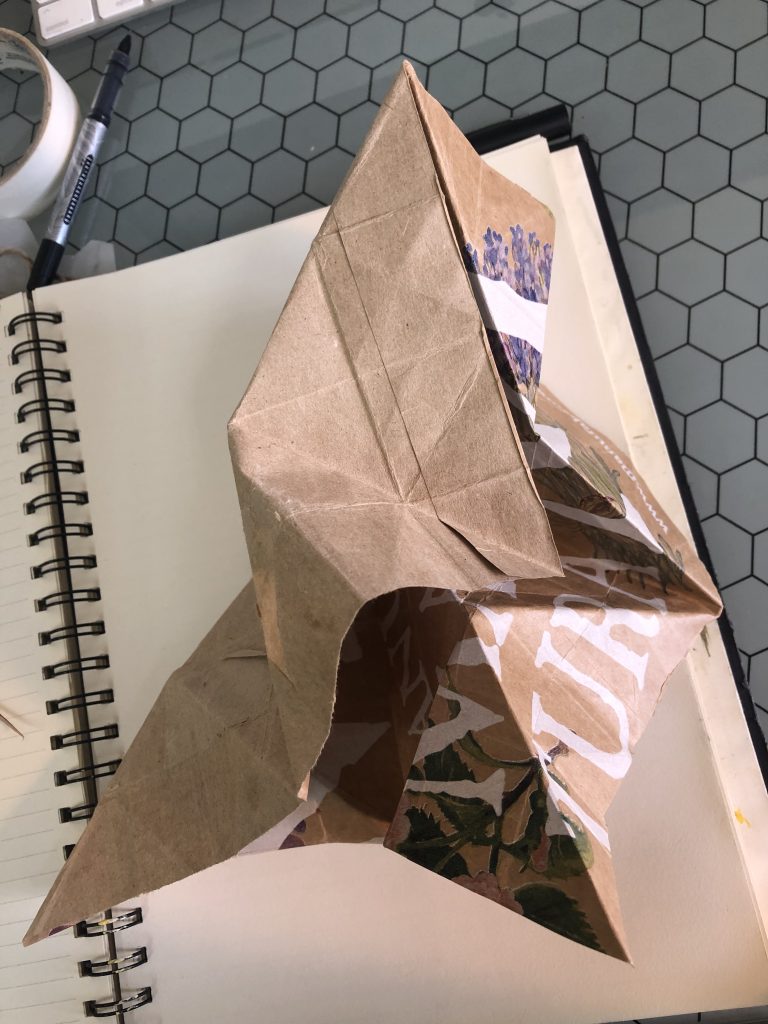
Fig. 67 
Fig. 68 
Fig. 69 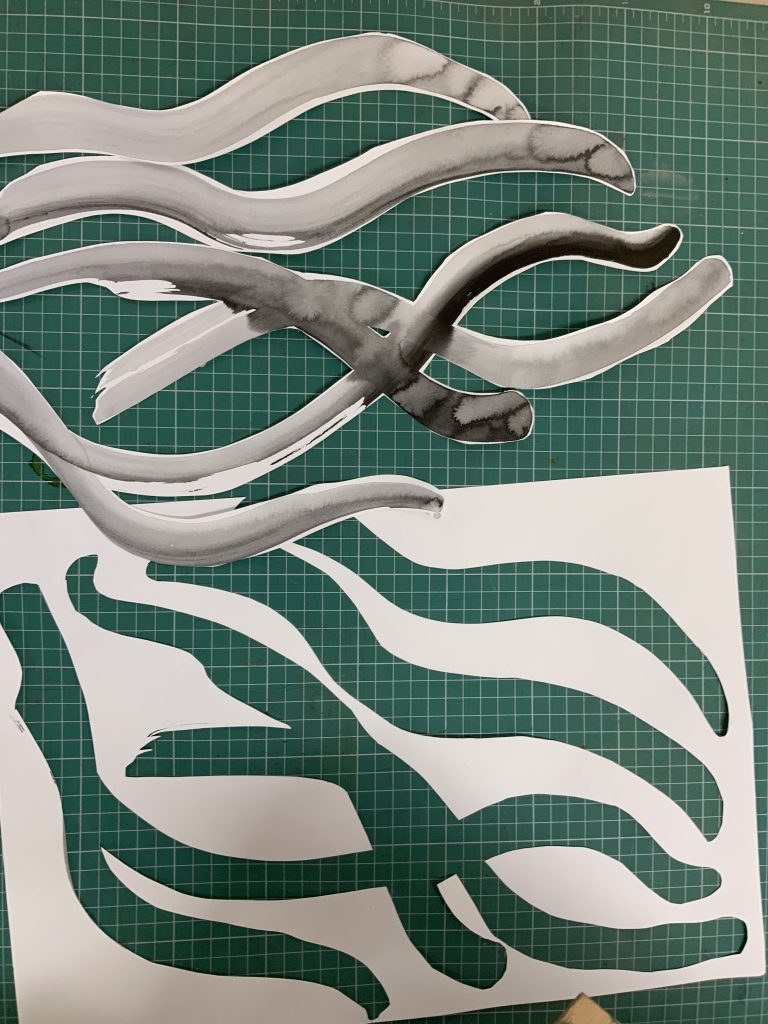
Fig. 70 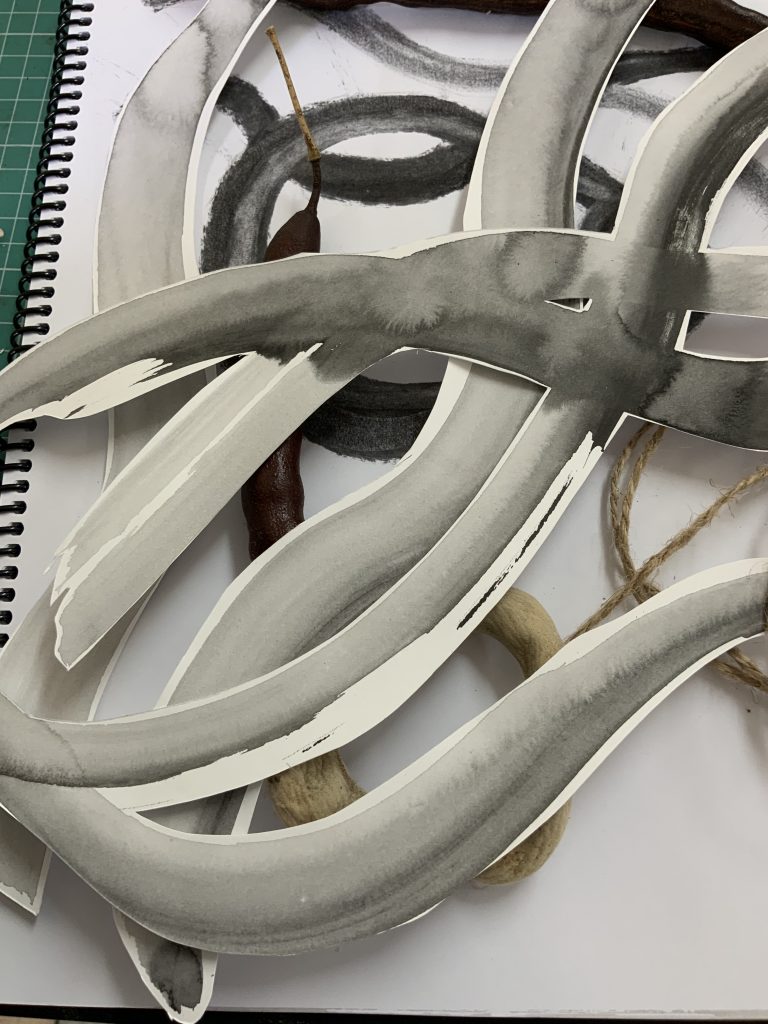
Fig. 71 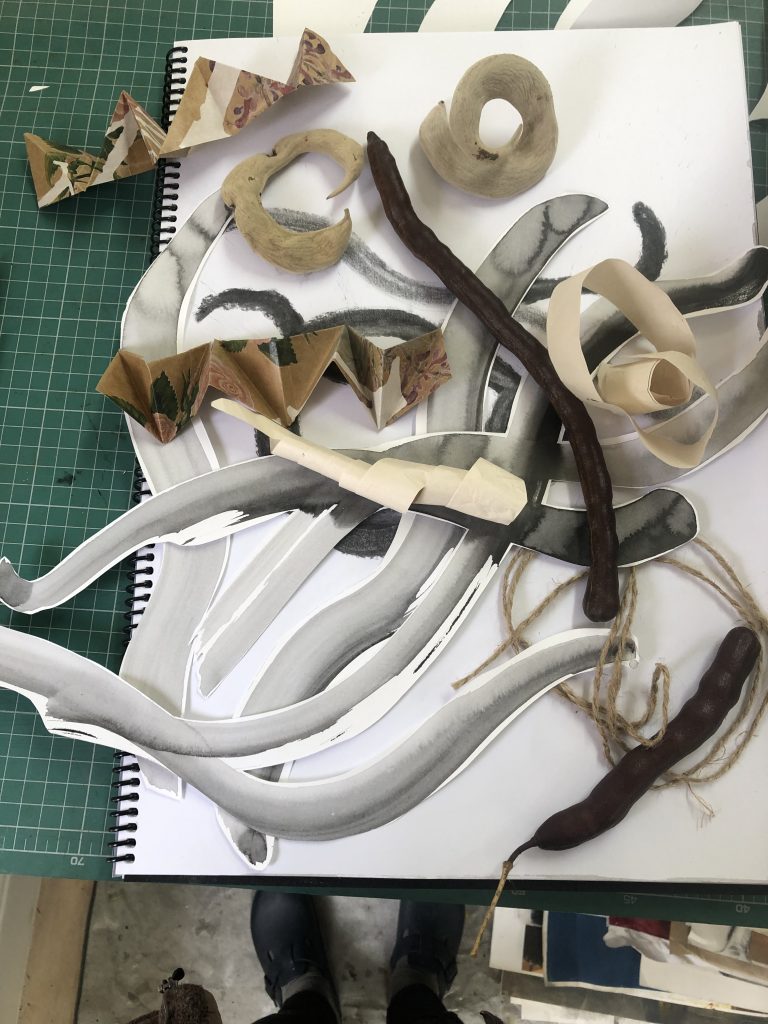
Fig. 72 
Fig. 73 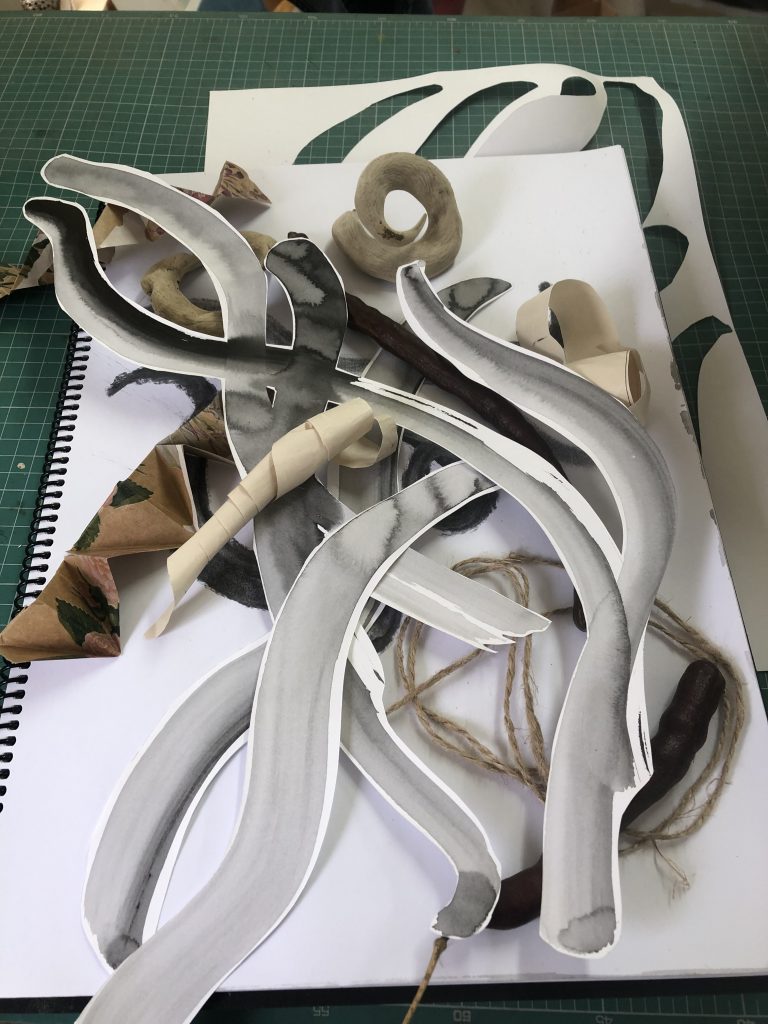
Fig. 74
I see this making as a place that does not ask logic. In thinking about this, I am honestly not always sure why I arrange things the way I do, but I am sure there is some form of ‘correspondence’, which I am searching for. There are times when I clear and clean and try to get the order, maybe the fact that I am still unpacking and moving into a new space, plays a role? I just do not ever think that I have to feel pressure to explain why these things are kept around me. In many ways they do not fit or belong together – to me they are fragments of life which tell a story, my story perhaps? I think it is closely linked to my walking – as most were found on walks, my lived experience. These thoughts remind me of Tim Ingold when he writes about the 27 essays which make up his book, Correspondences (taken from my Kindle Version) ,where he writes: “…to practice theory as a mode of habitation is to mix and minge, in one’s thinking, with the textures of the world. This means if you will, not taking literal truths metaphorically, but taking metaphorical truths literally.” He states that this is the way of art.
In the work below I used painted canvas paper and other used paper as cut-outs for a cube form as well as folded paper, and considered, to fold, to cut, to imagine, to try, to manipulate, to re-use, to build, to weave.
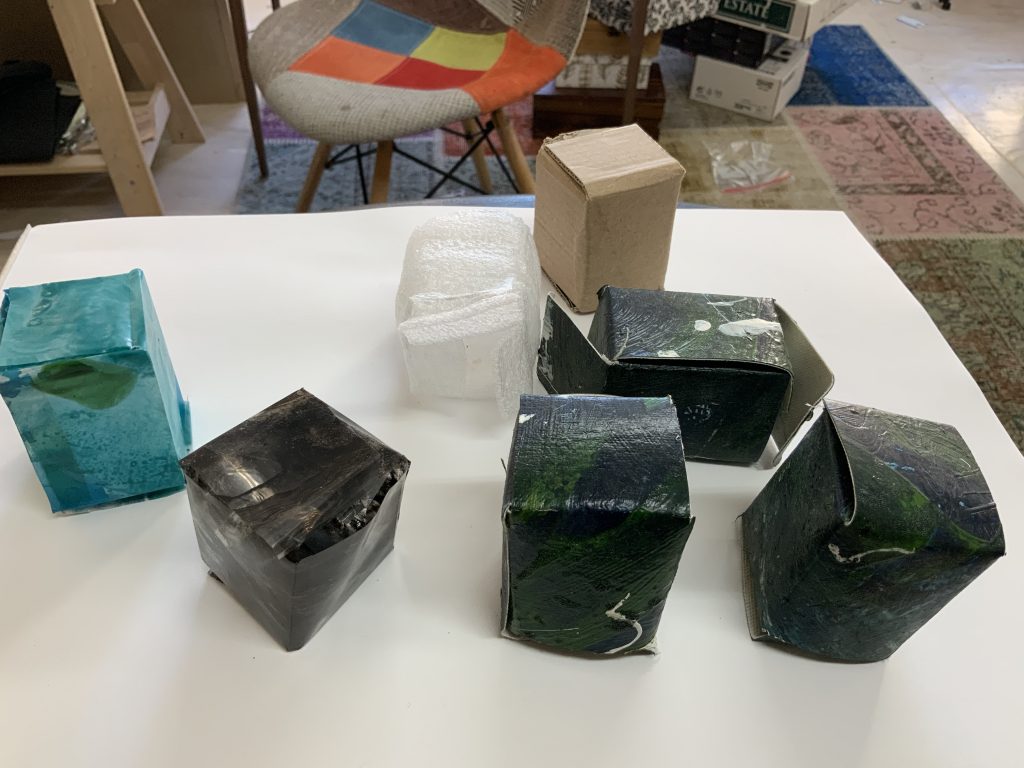
Fig. 75 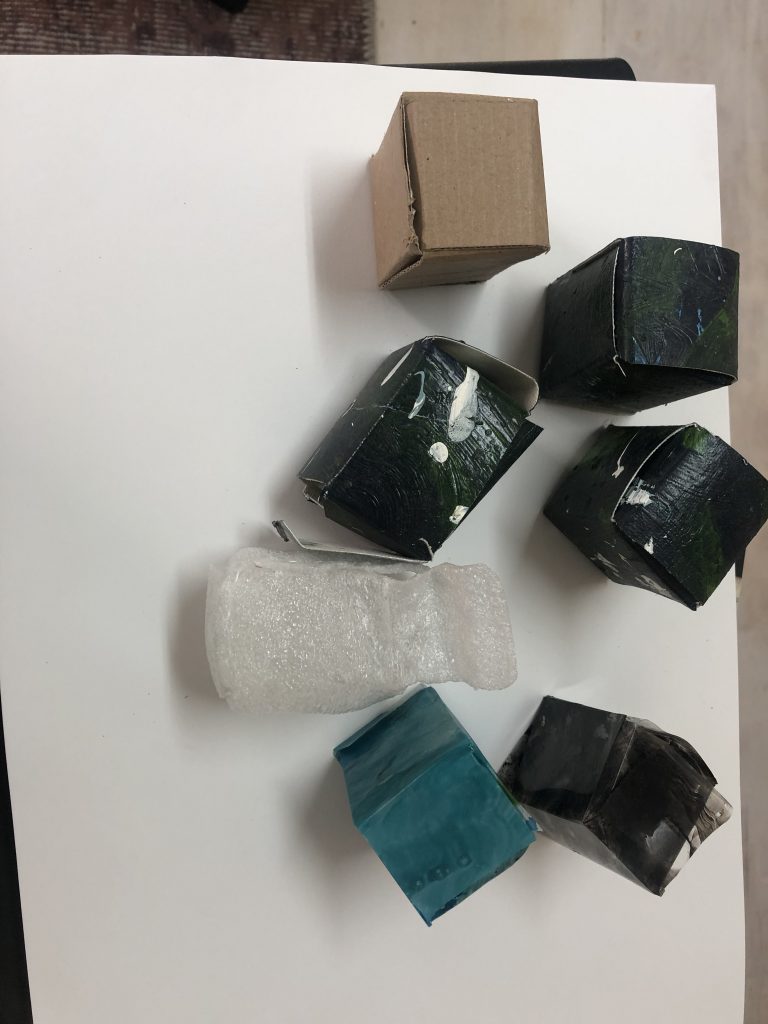
Fig. 76 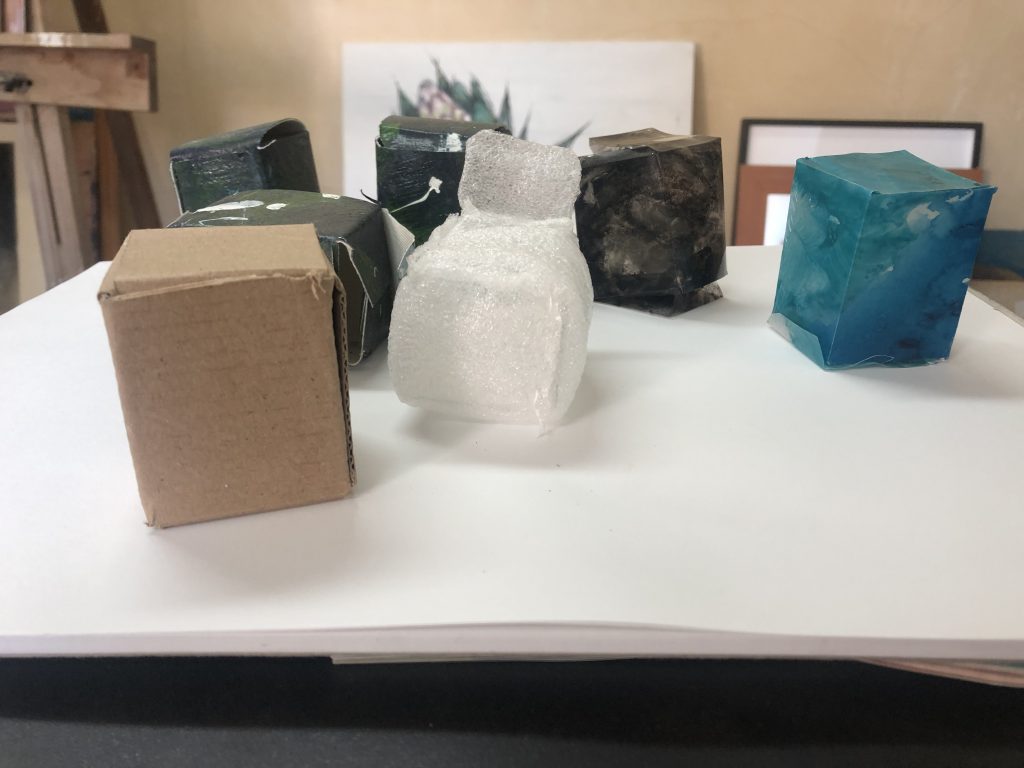
Fig. 78 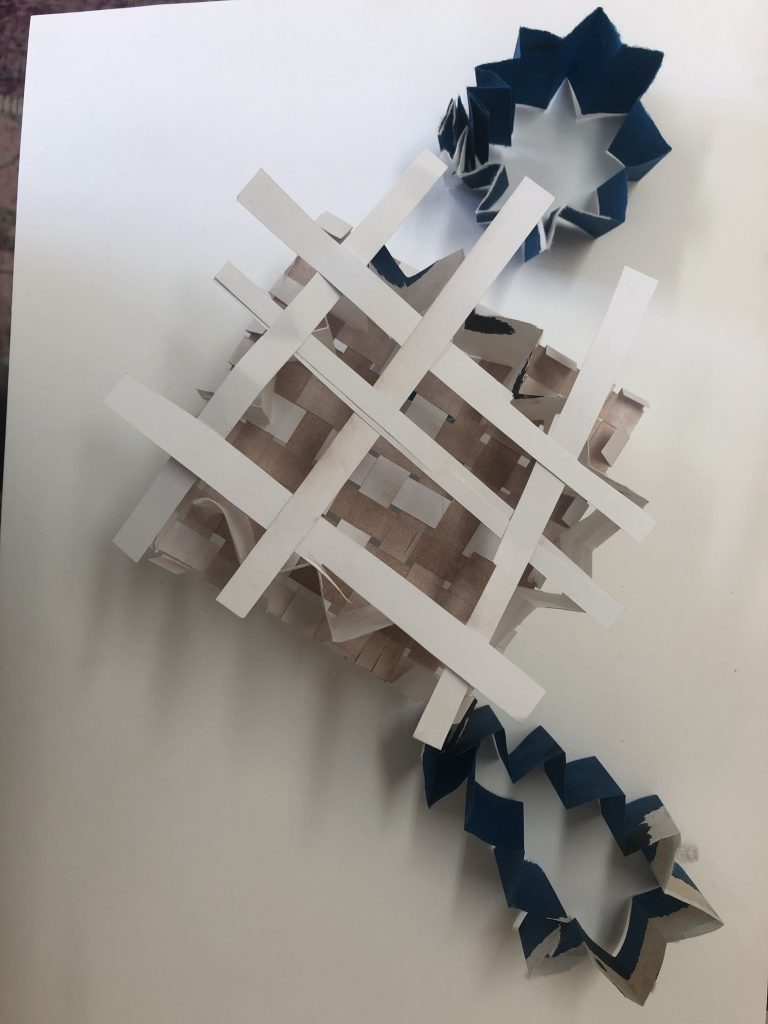
Fig. 79 
Fig. 80 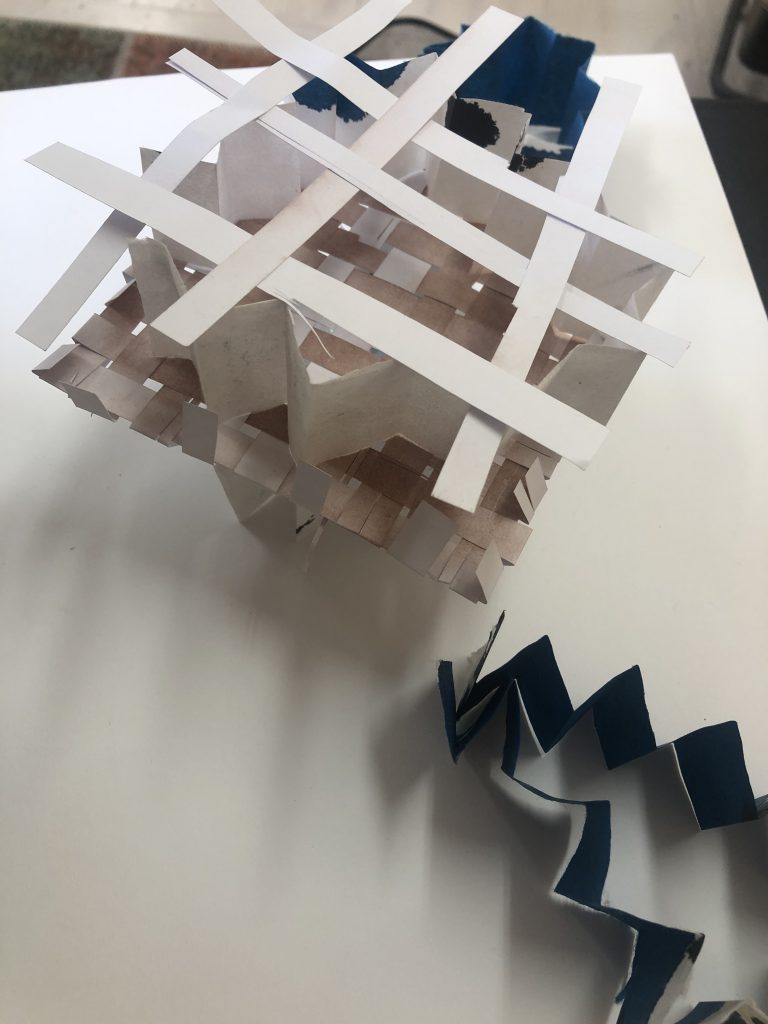
Fig. 81 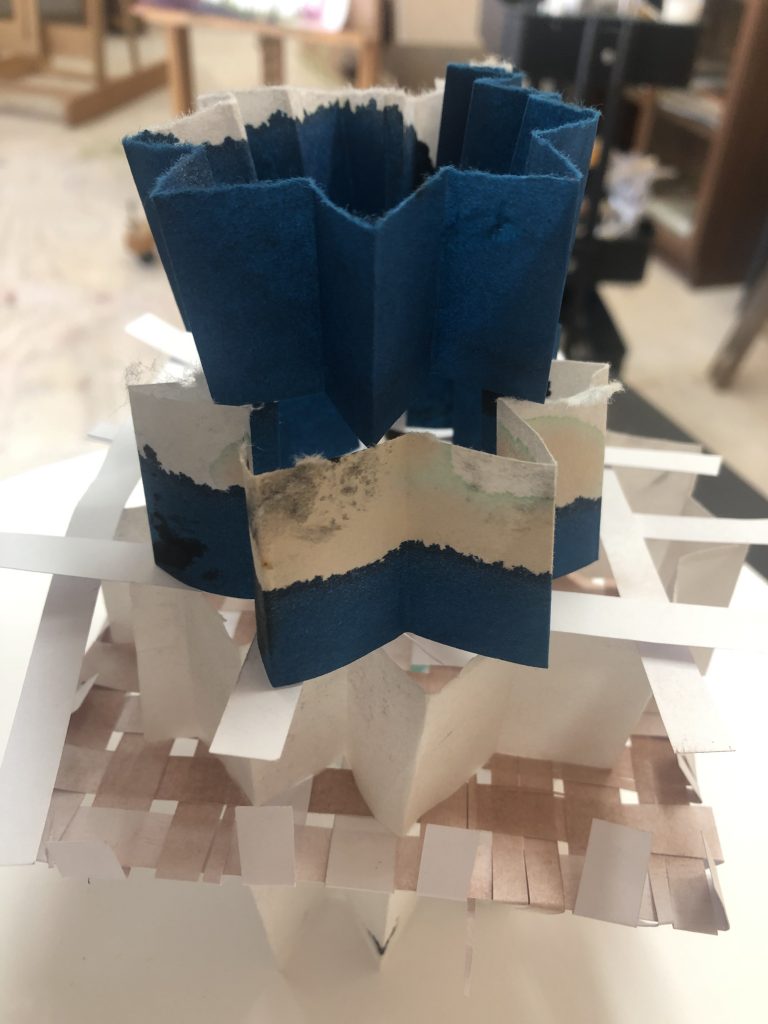
Fig. 82 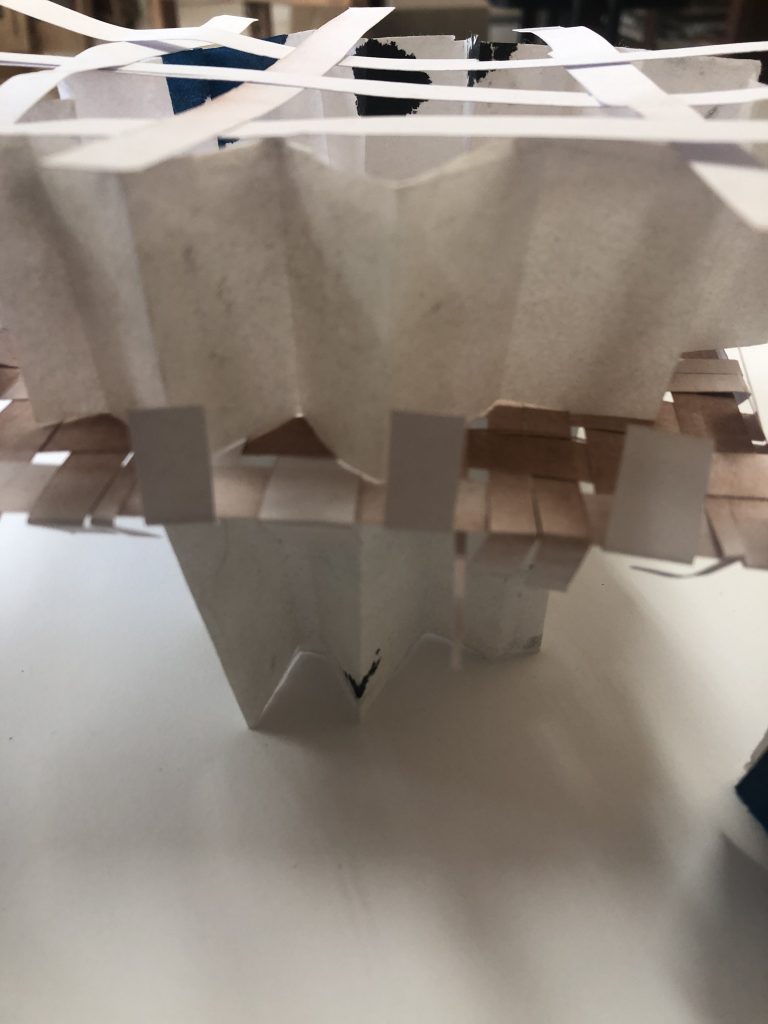
Fig. 83 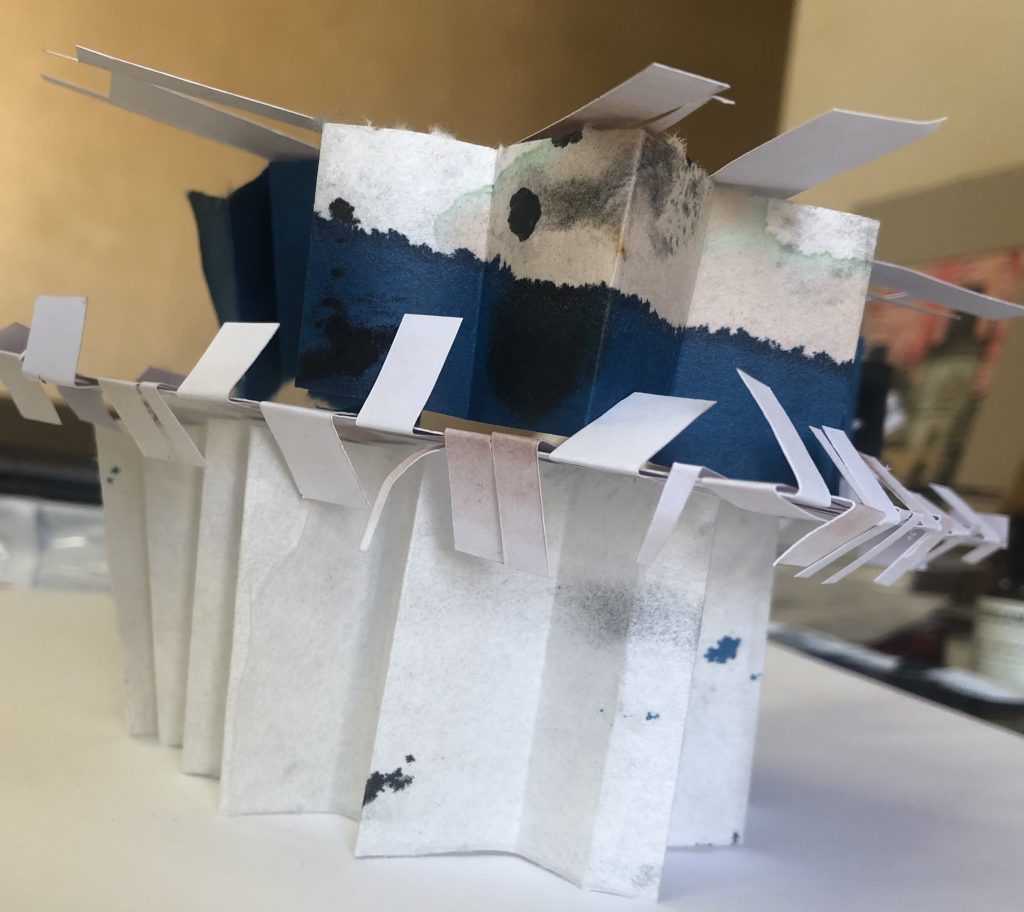
Fig. 84 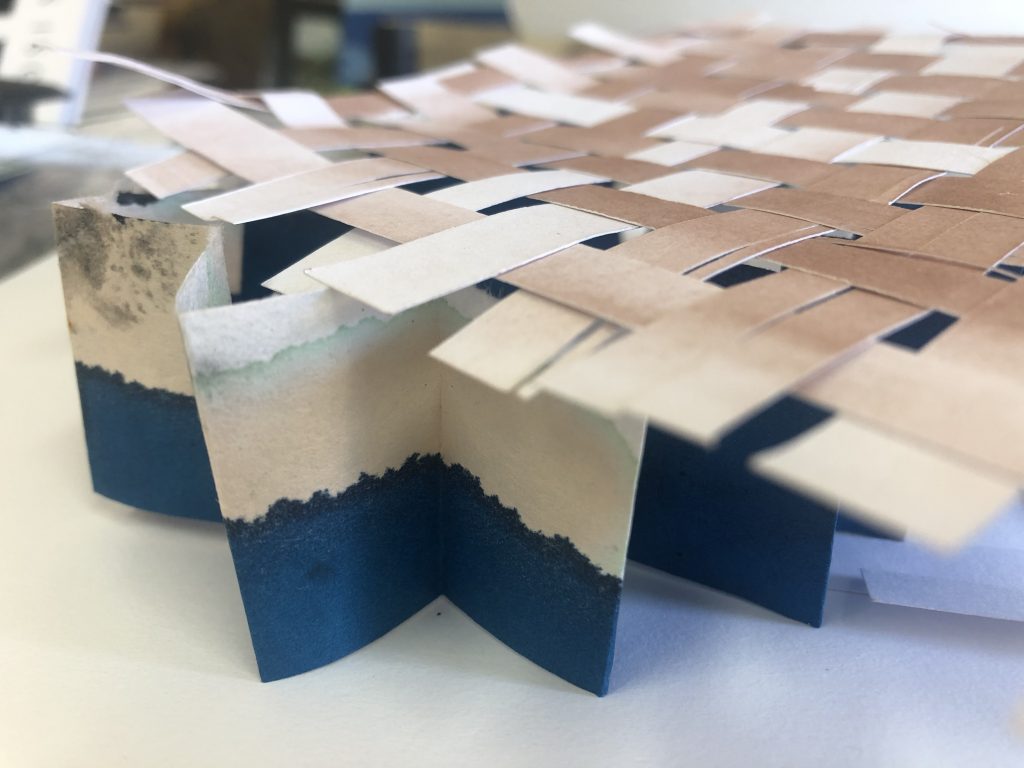
Fig. 85 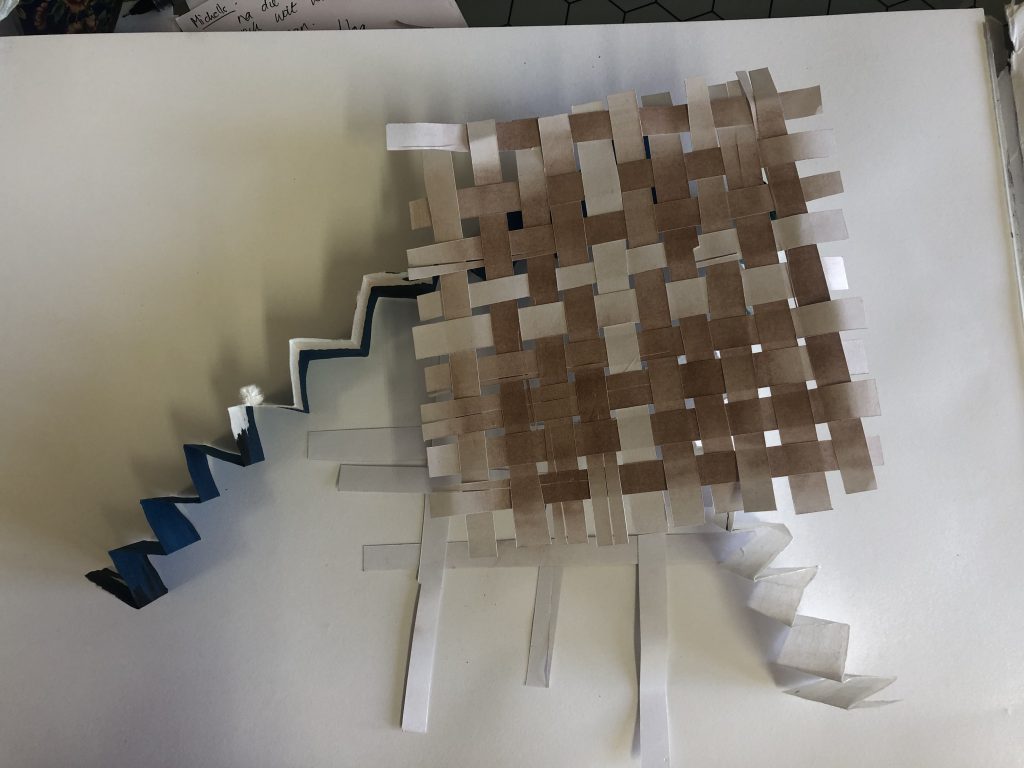
Fig. 86 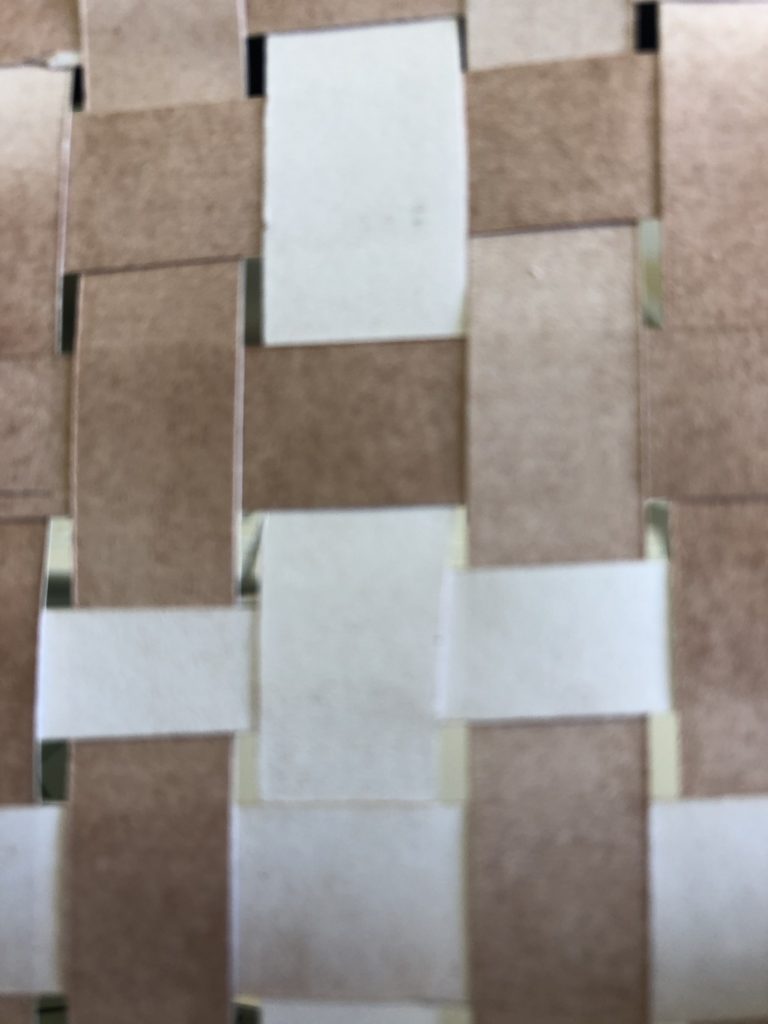
Fig. 87 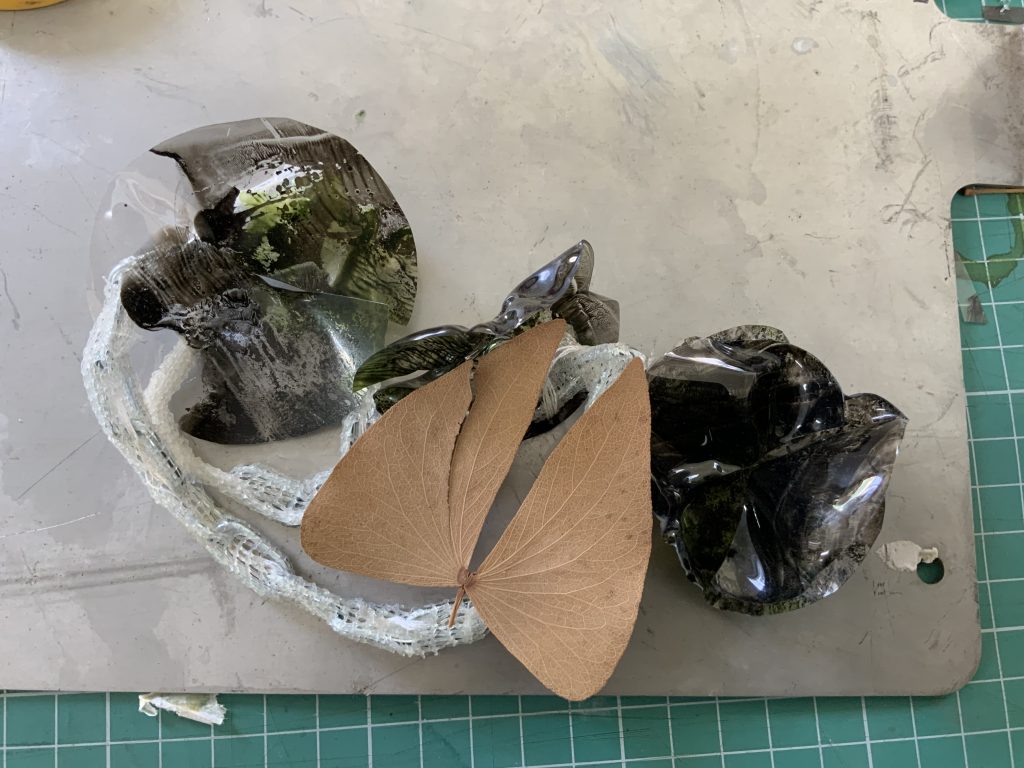
Fig. 88 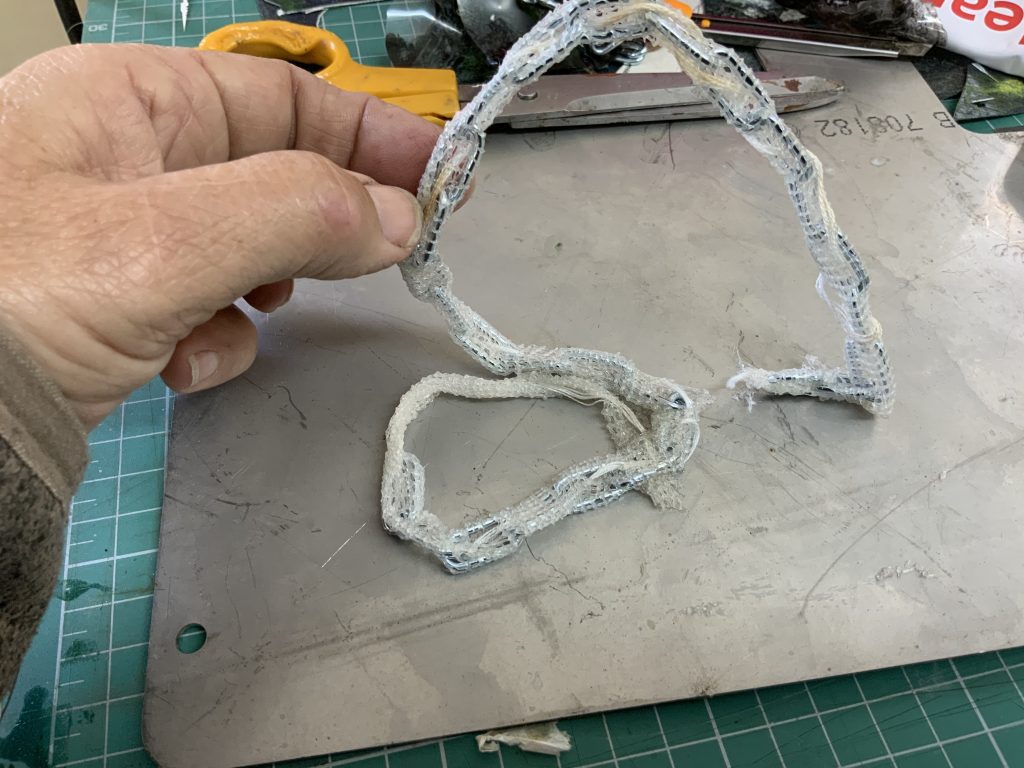
Fig. 89 
Fig. 90 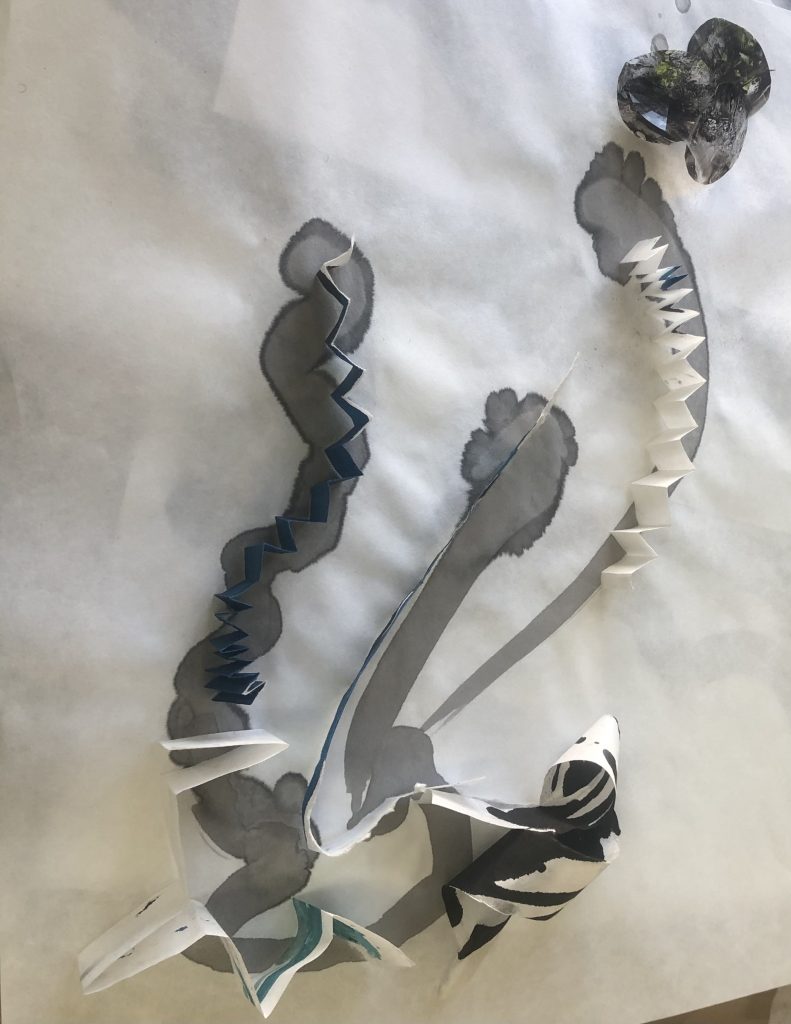
Fig. 91 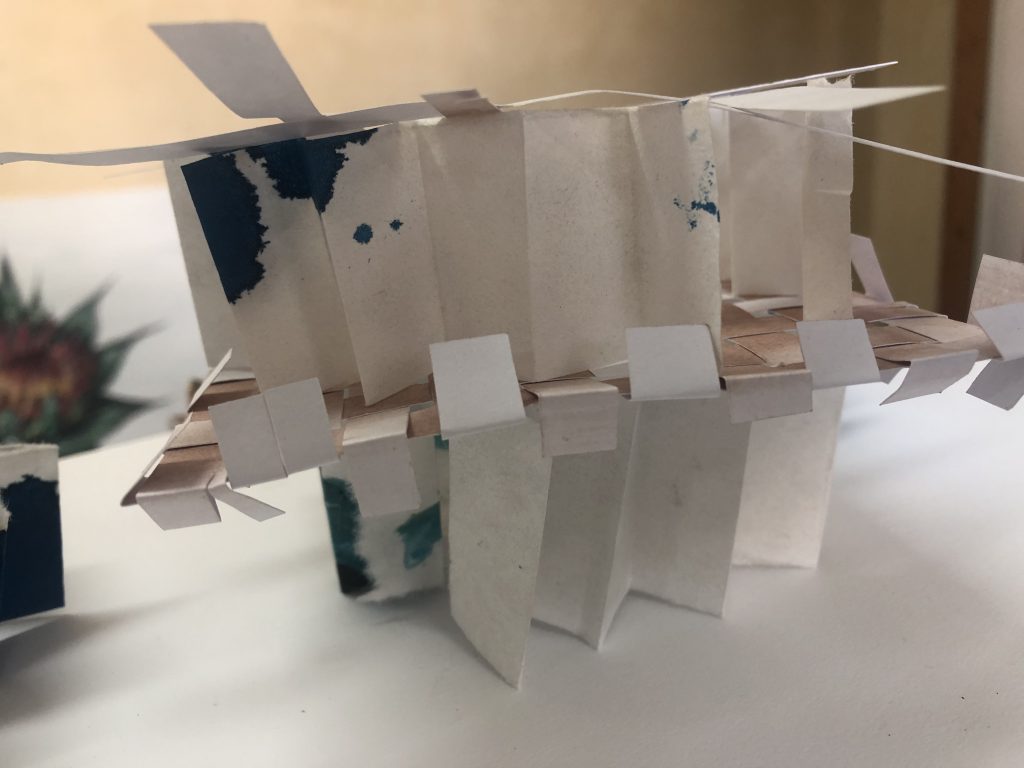
Fig. 92 
Fig. 93 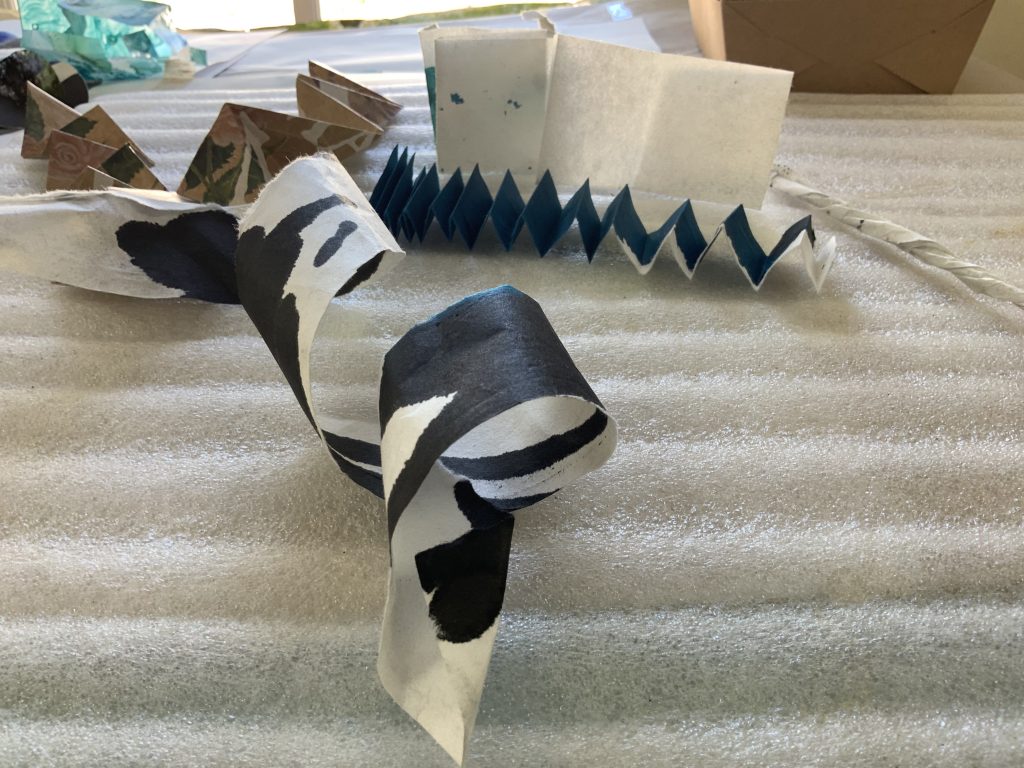
Fig. 94 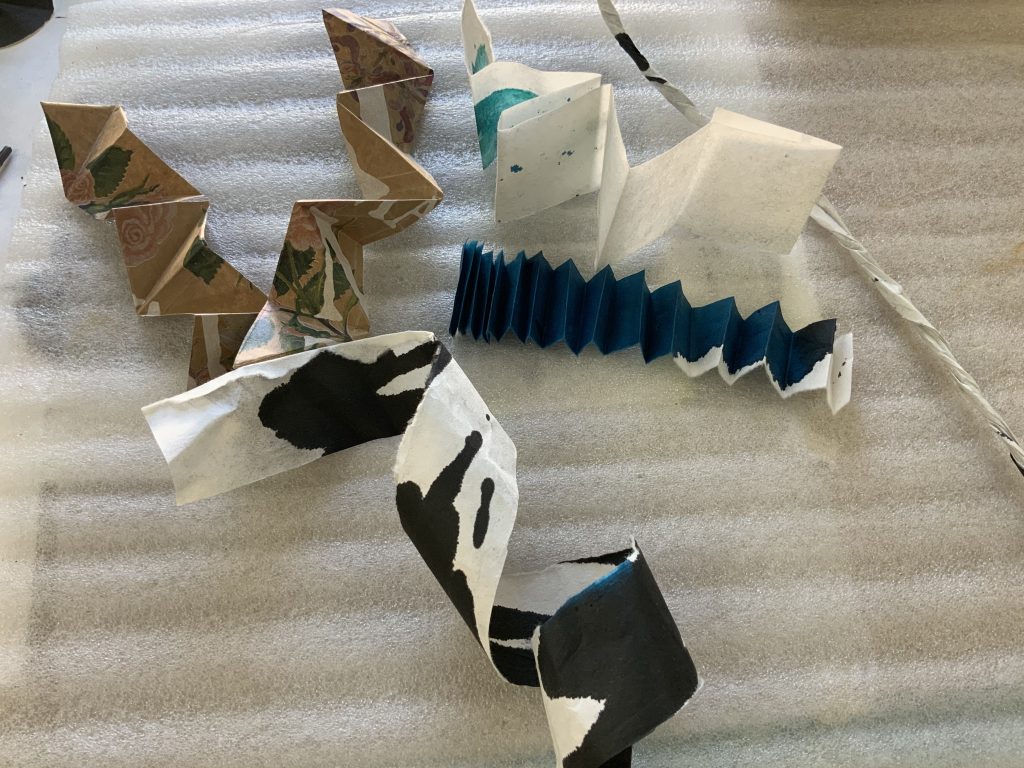
Fig. 95 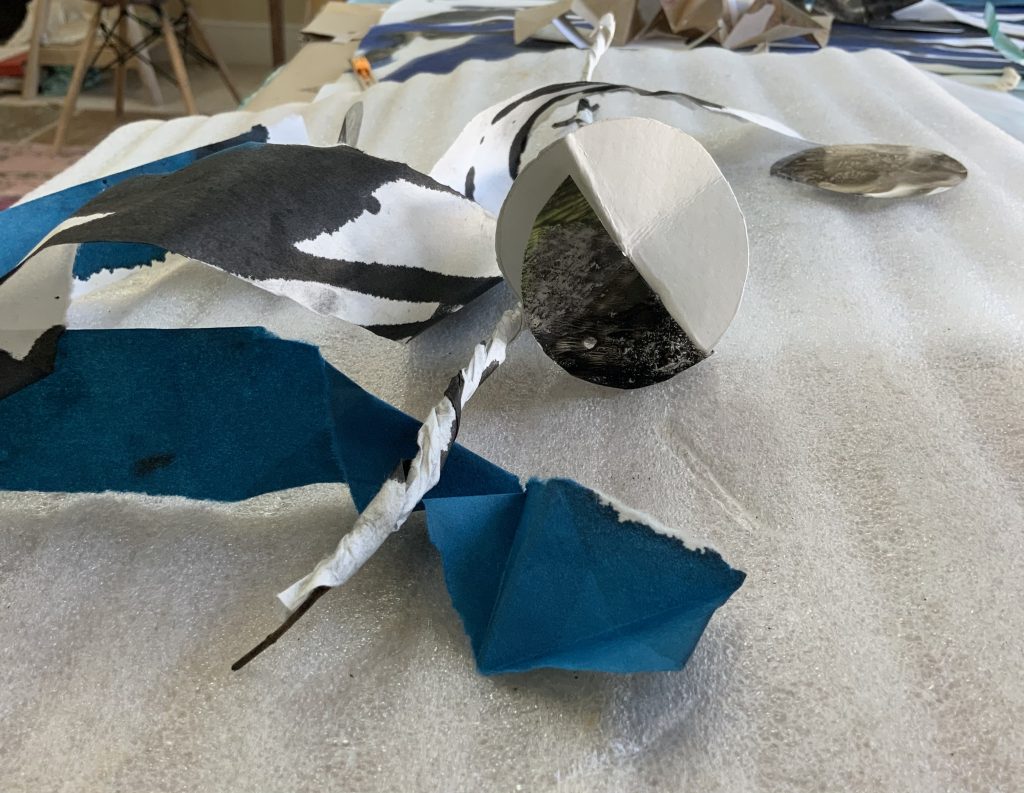
Fig. 96 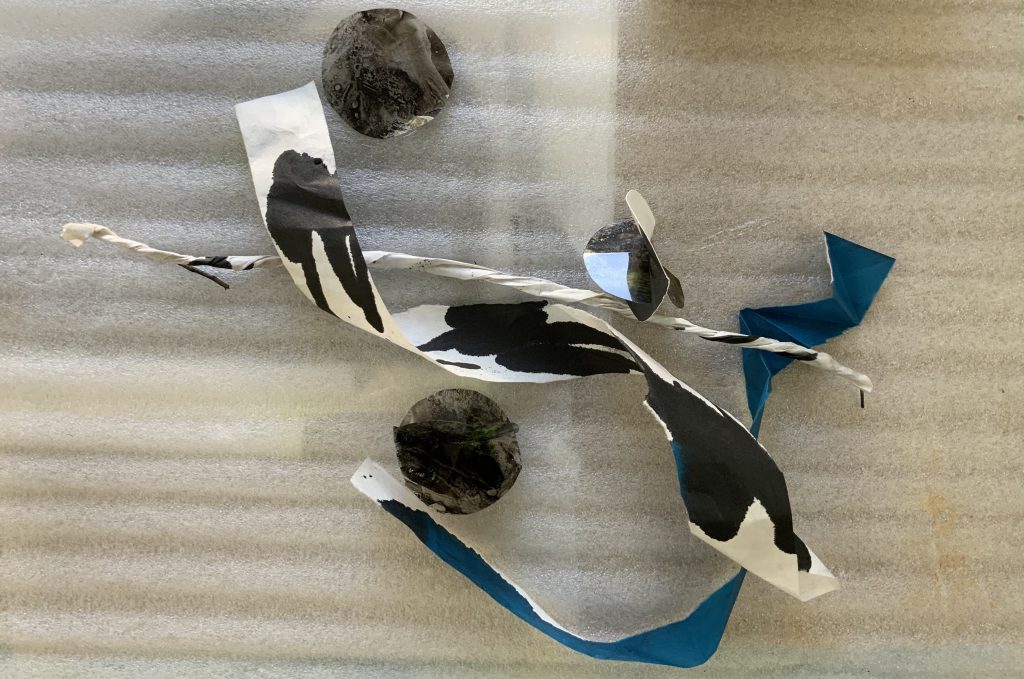
Fig. 97 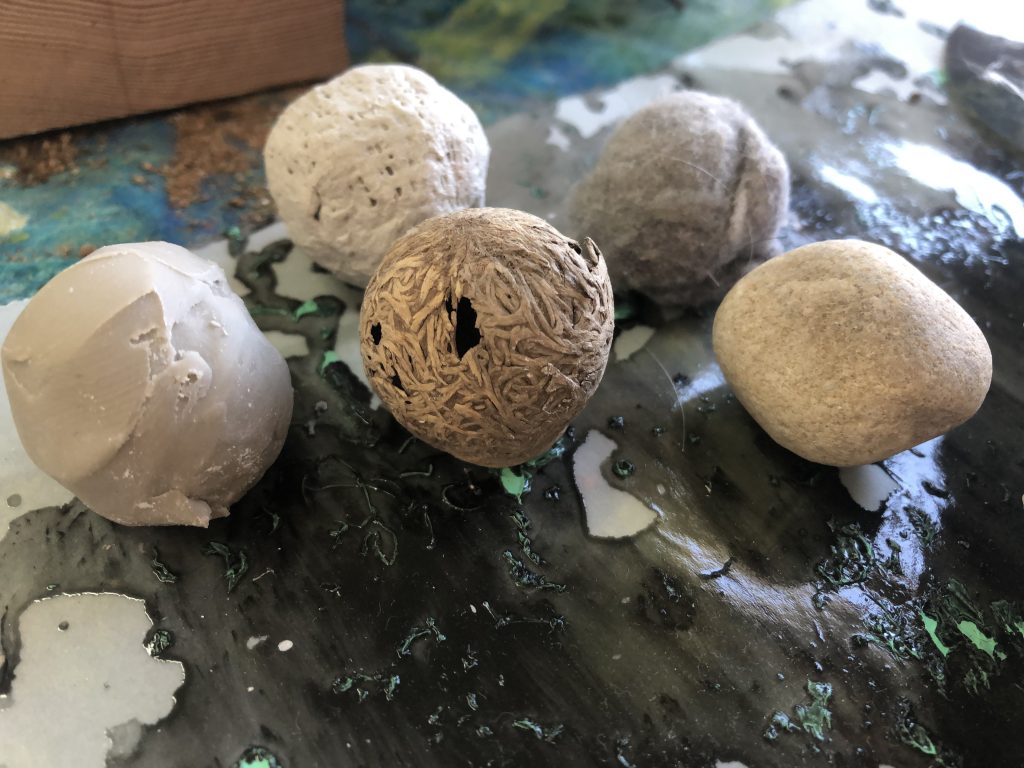
Fig. 98
I hope to get to a place of thinking in material – not necessarily a topic. These drawings/paintings/lines (above images) as cut-out objects make me wonder about drawing as a spatial medium, with the paper the spatial medium, even the paint on the paper? Can I try this out by ‘combining’ or juxtaposing these drawings with other 3d objects? I am very aware of my objects as not being precise or neat, even with the cutouts of the cube/box, I found the objects quite wobbly, but like the tactility of the materials and their history of making in the process. I like this naturalness ( its me) of my own hand in the work and would like to see if this will continue in attempts further along this process. I learned that these boxes could be folded in different ways and that I do not necessarily need glue to adhere to the form, folds and the material is very much part of how the form will ‘hold’ in space. I am thinking more about assemblages and not sculptures. Some of the images above remind me of nature, leaves falling, twigs and branches of trees, gestural lines made on canvas or paper, but mostly an attempt at trying or exploring space as a form of tension between what I imagine to do and what is physically possible. It is trial, error, and more of the same. I continue to use Serra’s to-do list: to hang, to layer, to juxtapose, to combine, to assemble..
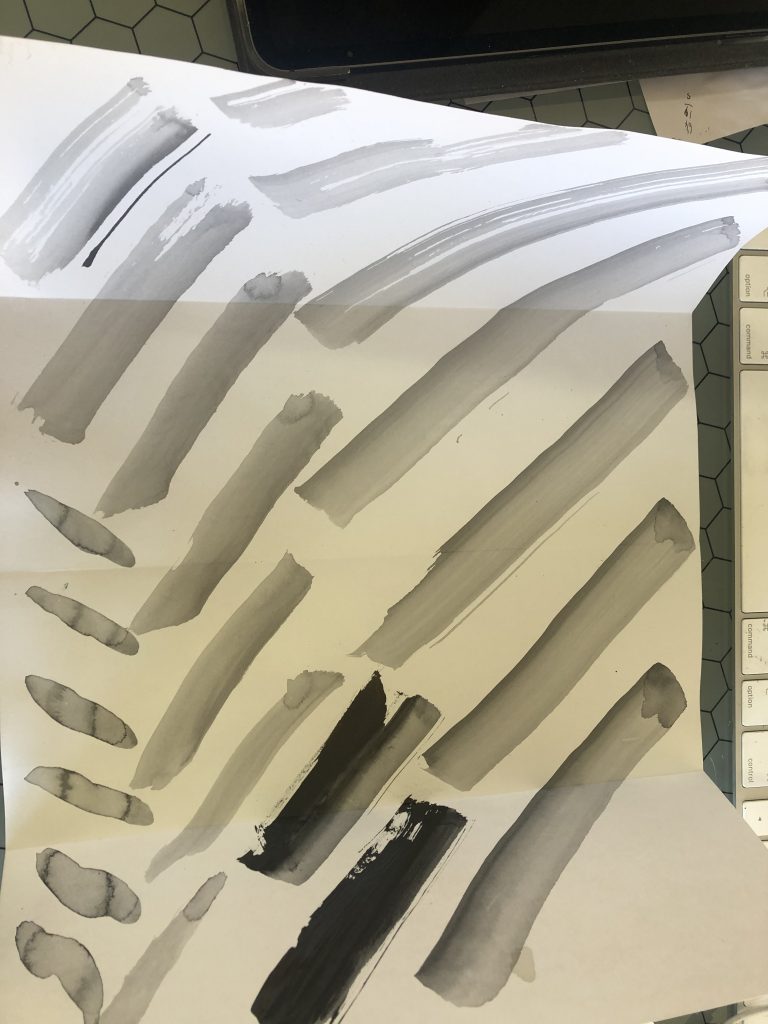
Fig. 99 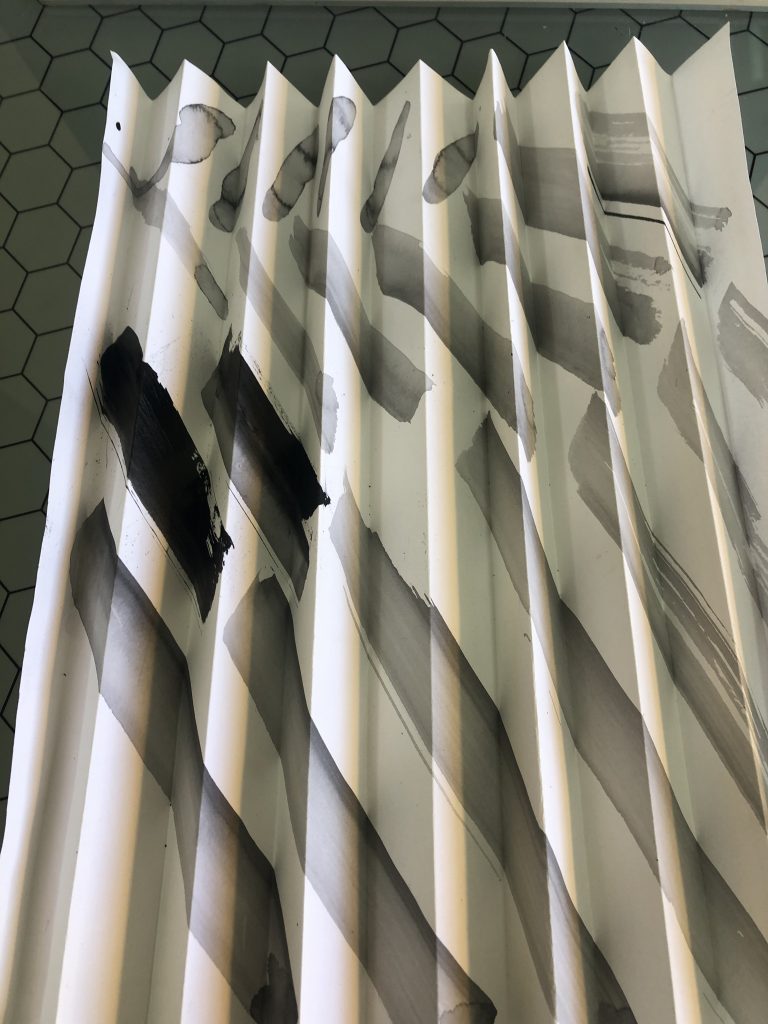
Fig. 100 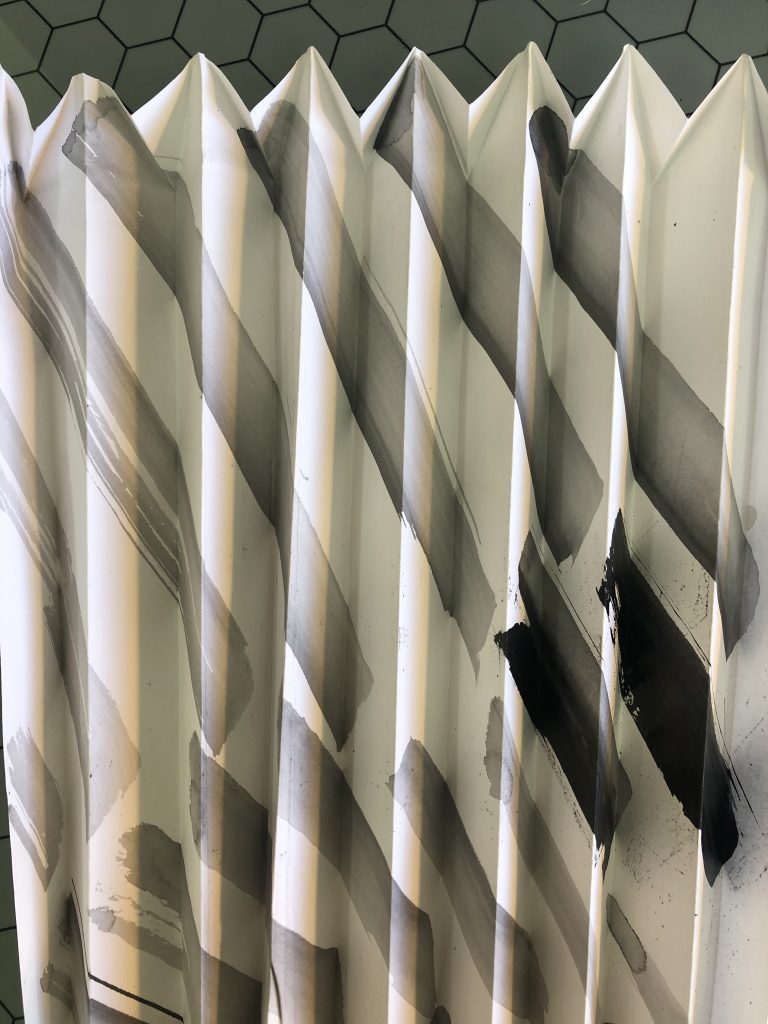
Fig. 101 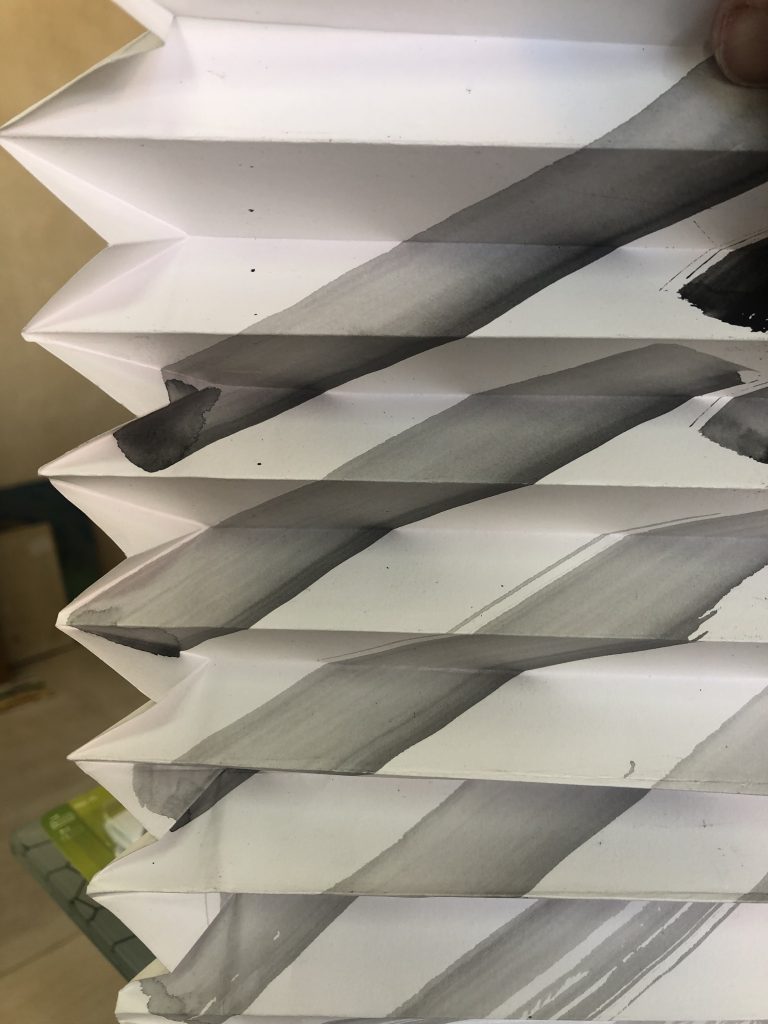
Fig. 102 
Fig. 103 
Fig. 104 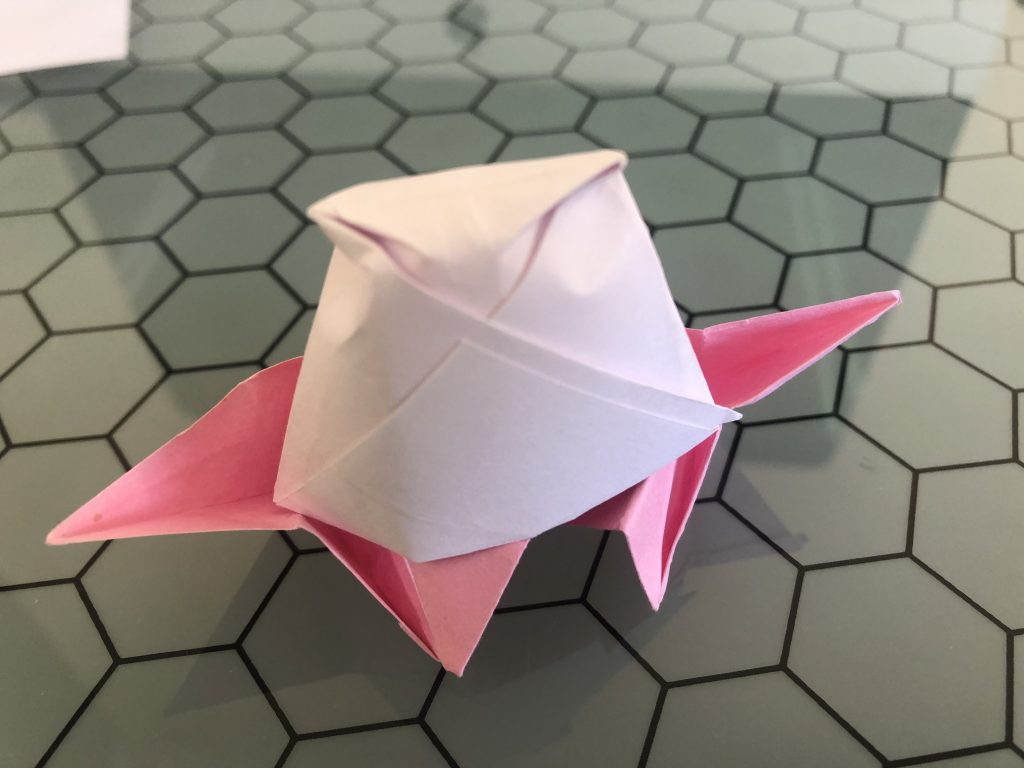
Fig. 105 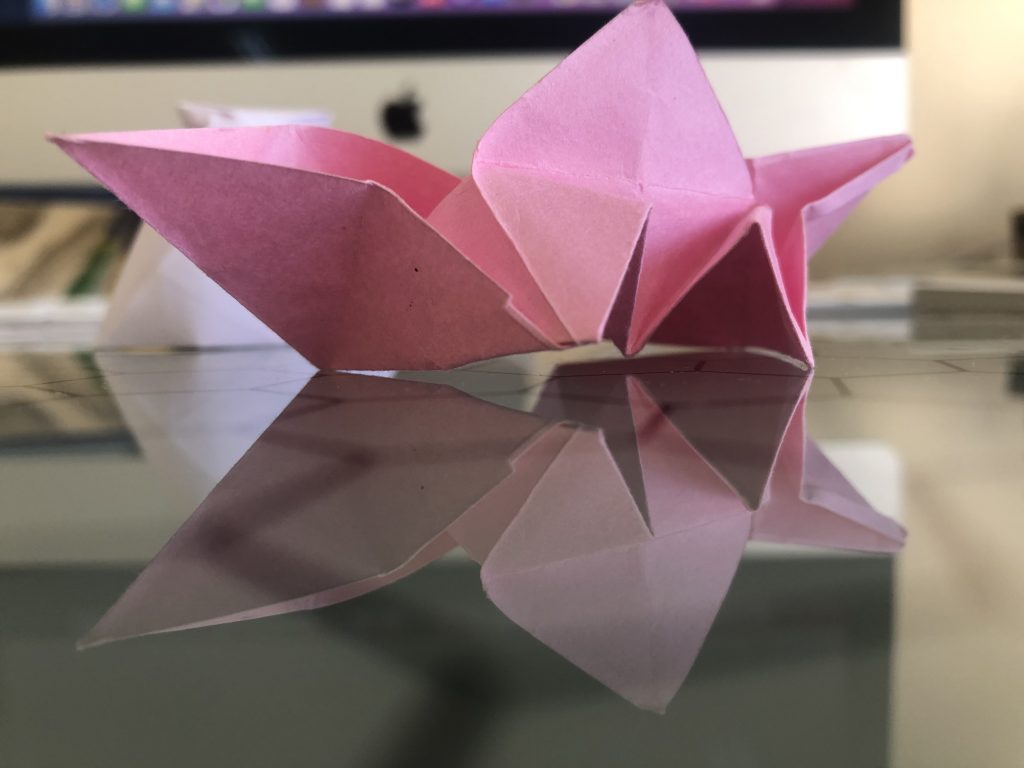
Fig. 106 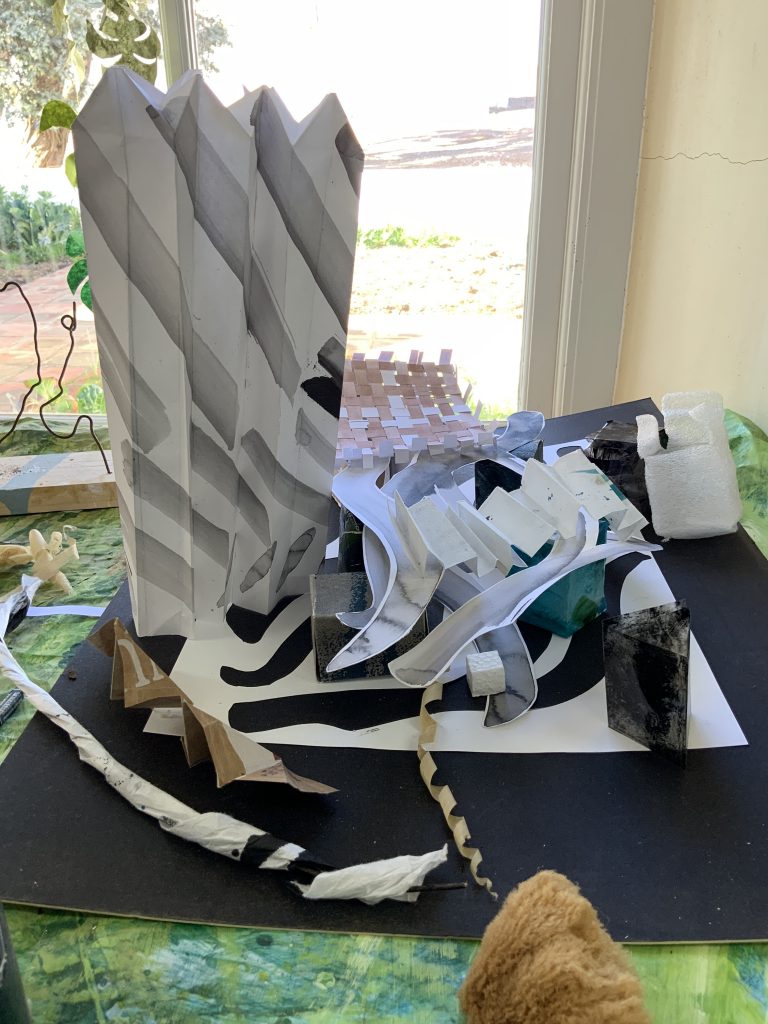
Fig. 107 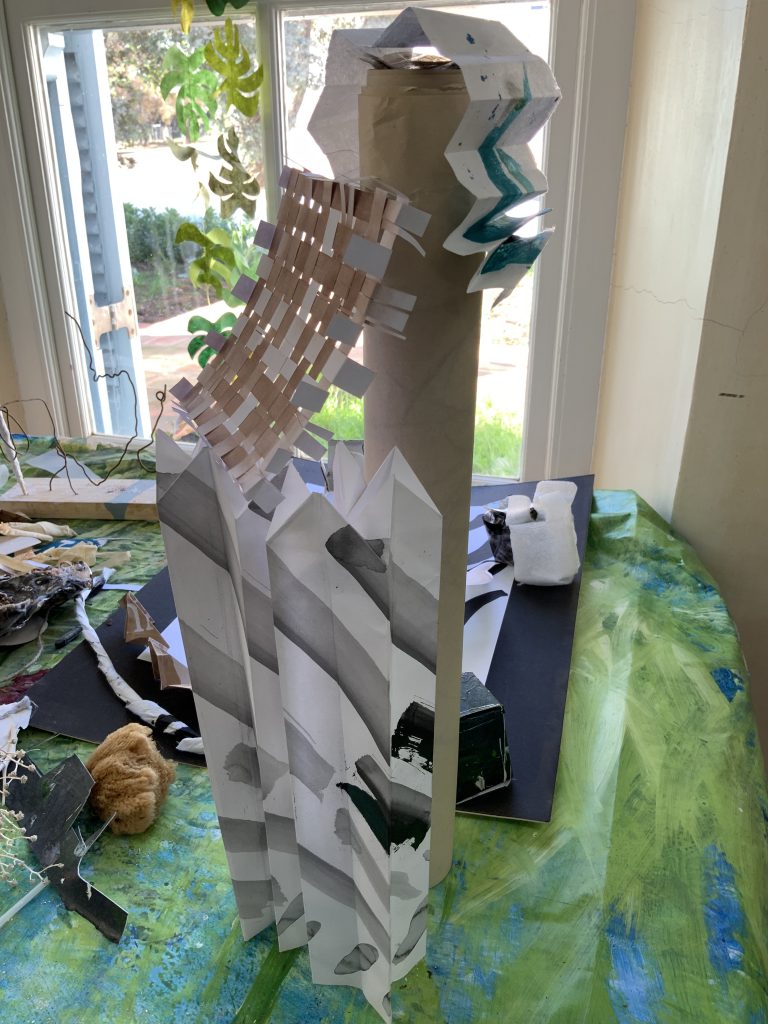
Fig. 108 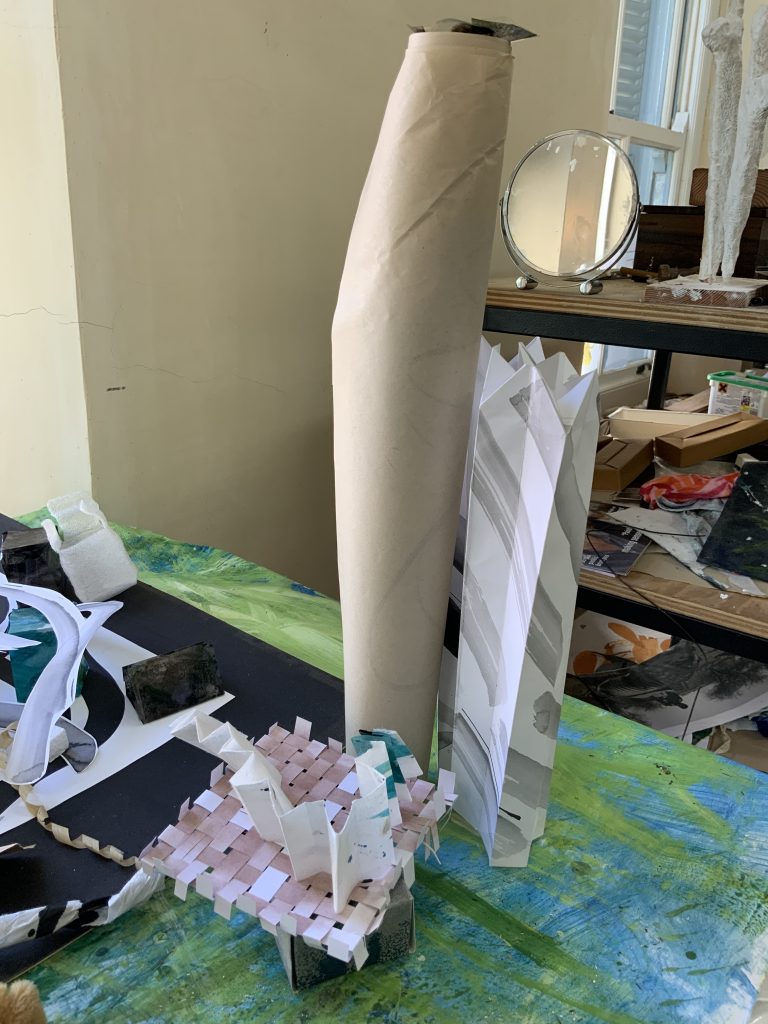
Fig. 109 
Fig. 110
Some of works makes me think of my grandchildren building with blocks and trying to get higher and how we have fun when the ‘construction’ tumbles, then the process of making continues – build again, fall, maybe higher, fall, continue… Here the materials test each other for strength and stability. Forms are tubes and circles – round. I am thinking about: to balance, to stabilize, to built, to construct, to try, to play, to experiment?Will I become more aware of the materials, as in the words of William Kentridge, (see video below) “…….these ideas meet with materials, such as charcoal, words, video, paper, sculpture……..” Kentridge explains the importance of giving yourself over to the material for this meeting to take place in the creative making process. It is almost a new way of looking at what the material suggests? It is a space that I need to allow to emerge. Kentridge talks about allowing ‘stupid ideas’, the benefit of the doubt – as this studio space is supposedly a safe space. In many ways, being a student and sharing all that happens in the studio online, makes me doubt the safe space of the studio, but then again, I am learning and should really use multiple different ideas around making and understanding materiality to show me the way into the work I need to produce, and hopefully, something interesting can happen… Listening to Kentridge in the video below, I need to ask myself at this stage: Am I allowing my studio to become a metaphor for making and understanding the aesthetic/moral and political outside? (Kentridge calls it the techniques and strategies outside the studio) He says hope has to be in the chaos of the different fragments coming together.
It becomes clear to me that I am indeed finding myself in a space of chaos – a search for this idea of being present, both in the making(materials) and me around these objects.
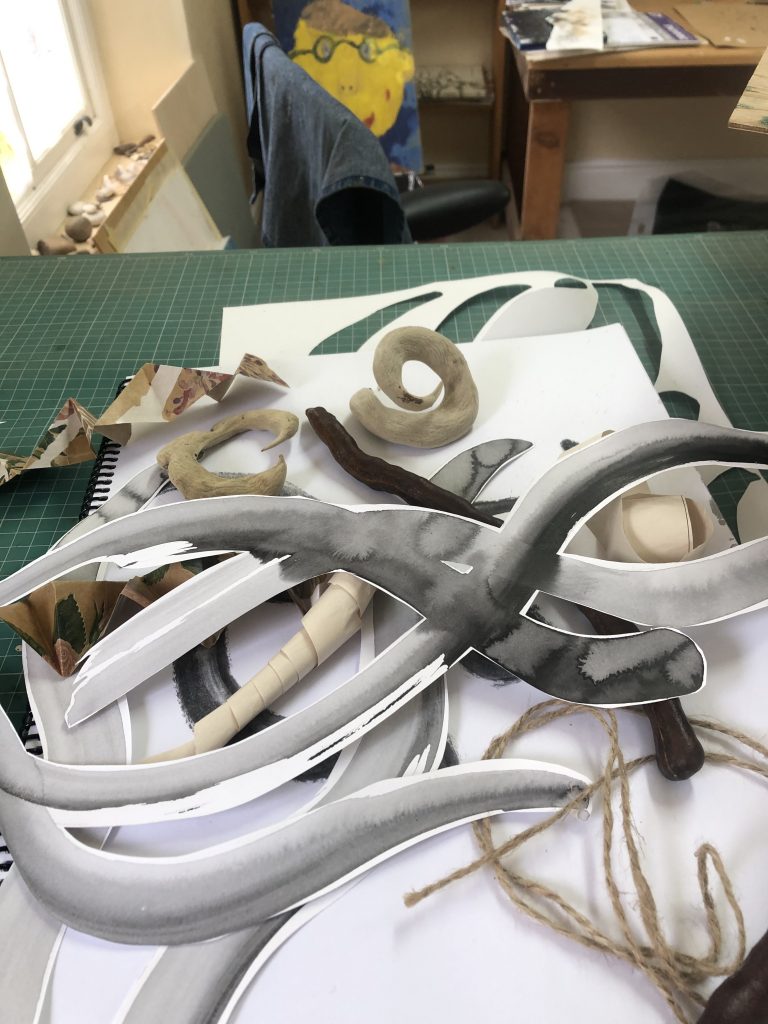
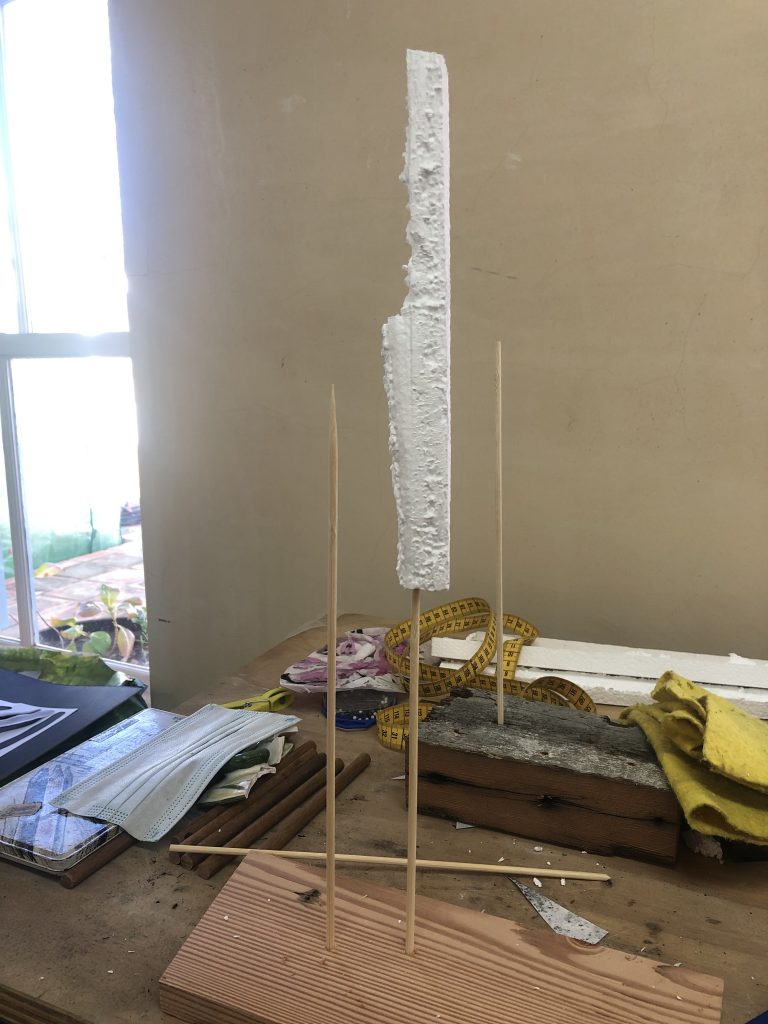
Fig. 112 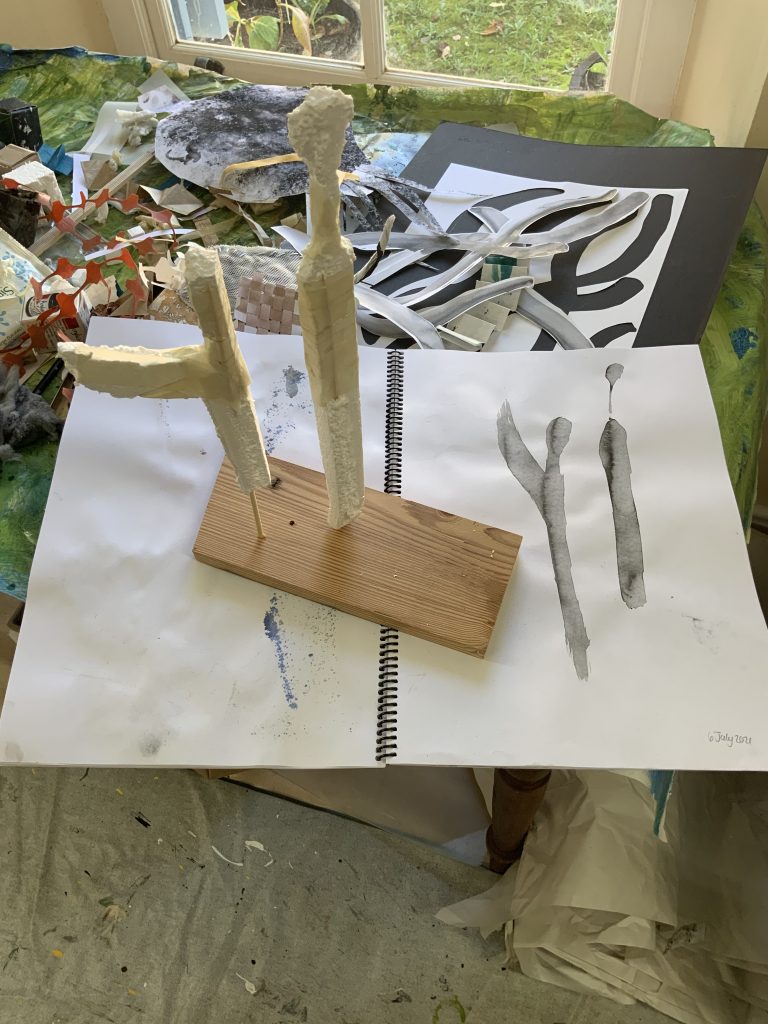
Fig. 113 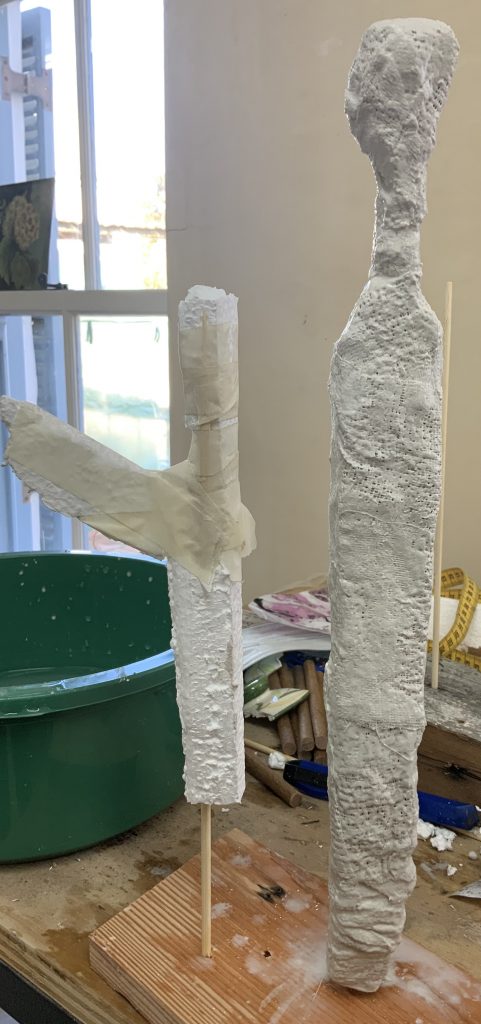
Fig. 114 
Fig. 115 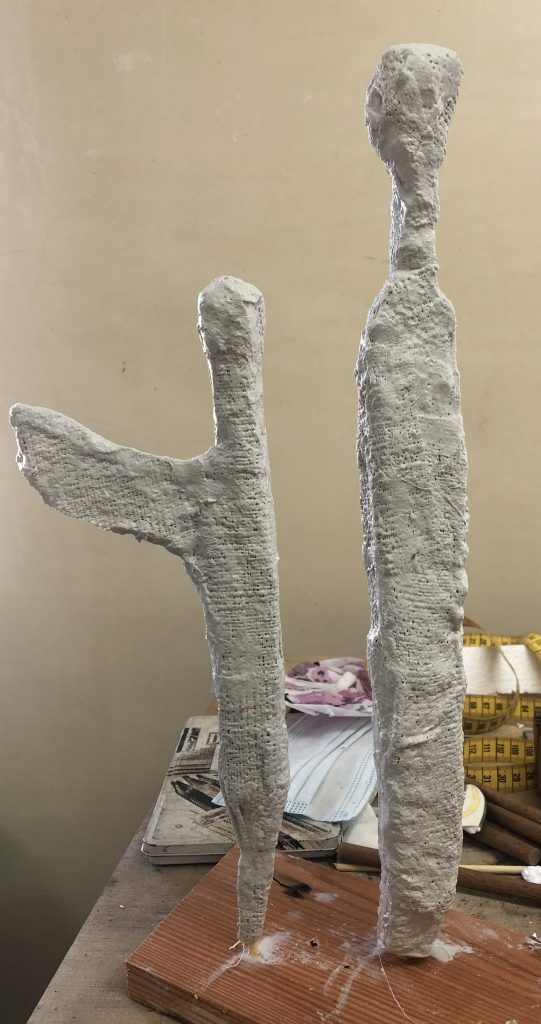
Fig. 116 
Fig.117
As I continue my explorations my life came to a standstill with my middle son becoming seriously ill with Covid, the Delta strain – this thing caught him like a thief, silently creeping into his body. My associations with my doing felt very dislocated, words like to distance, to interact, to disconnect, to worry, to cry, to suffer, to give up, to battle, to fight, to isolate comes to mind and physical distance, space….. became such BIG words in our lives. I started with boxes and spheres and felt I had to find what I needed in there. I let myself be distracted by folds and forms and how to understand how I can get a flat object to take space. I was aware of the alveoli (tiny air sacs in the lungs) in the lungs starting to struggle to keep their form during my son’s illness. The minute sacs were getting damaged, they were supposed to be just filled with air/space, but they become clogged with fluid, white blood cells, and mucus, as the body fights this battle. So this is where I found myself over the last 5 days – not knowing where and how will my son survive and feeling threatened to death. We are worried about the onslaught of a cytokine storm, he is now on oxygen and cortisone drugs….
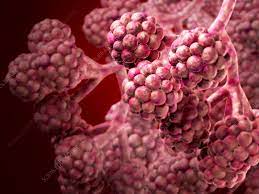
I form lungs with paper, dust from the tumble dryer, fabric, rope —– how do one stay with this and battle the fear that is on the outside and maybe inside.
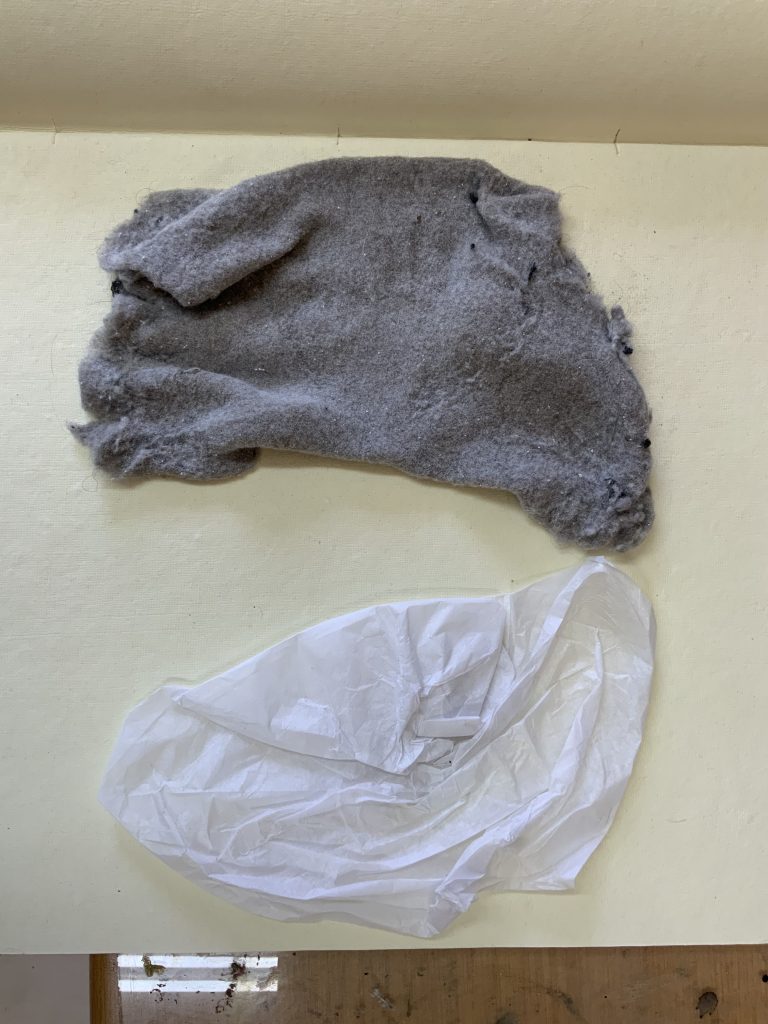
Fig. 119 to place 
Fig. 120 to fold 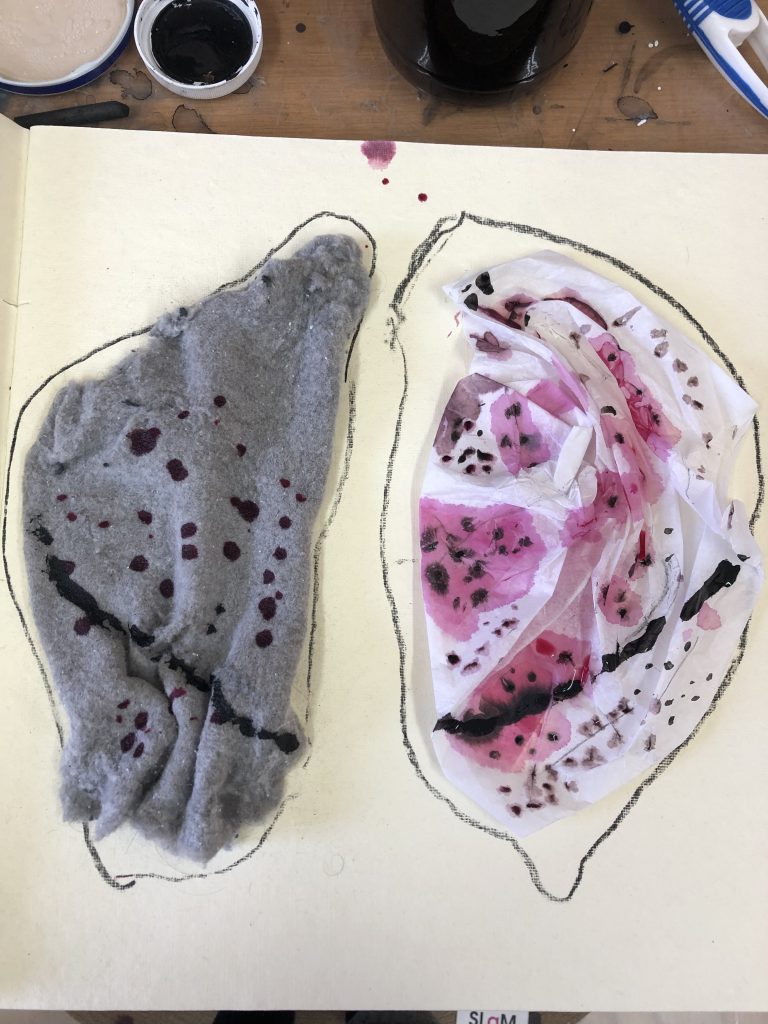
Fig. 121 To draw 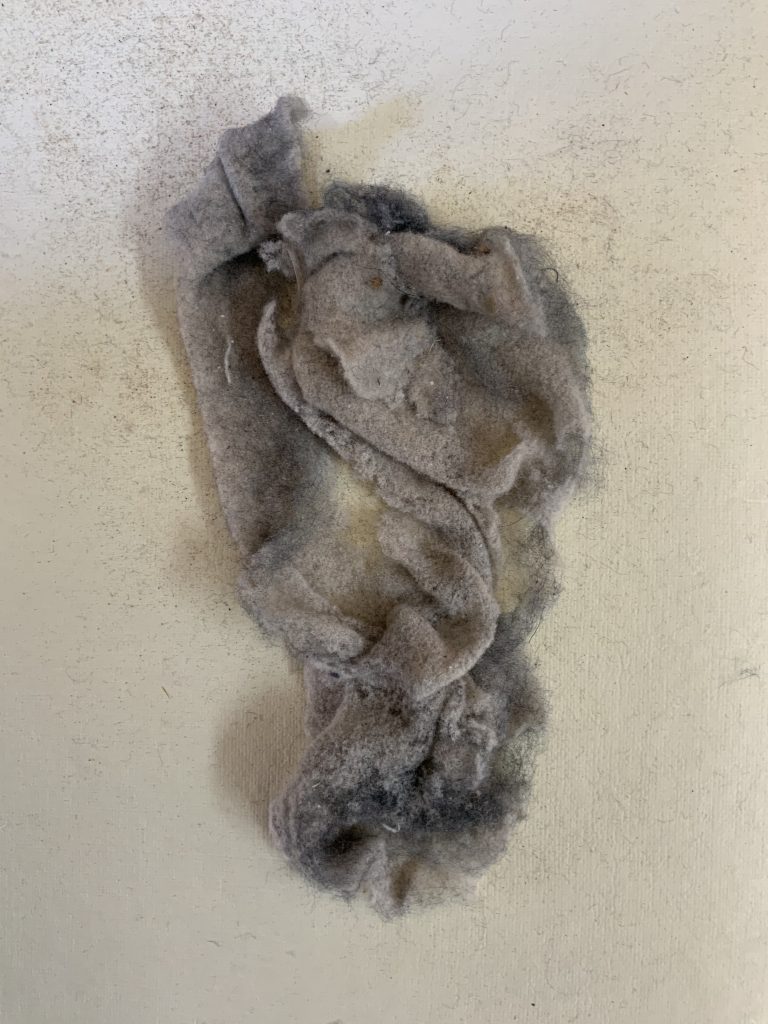
Fig. 122 To form 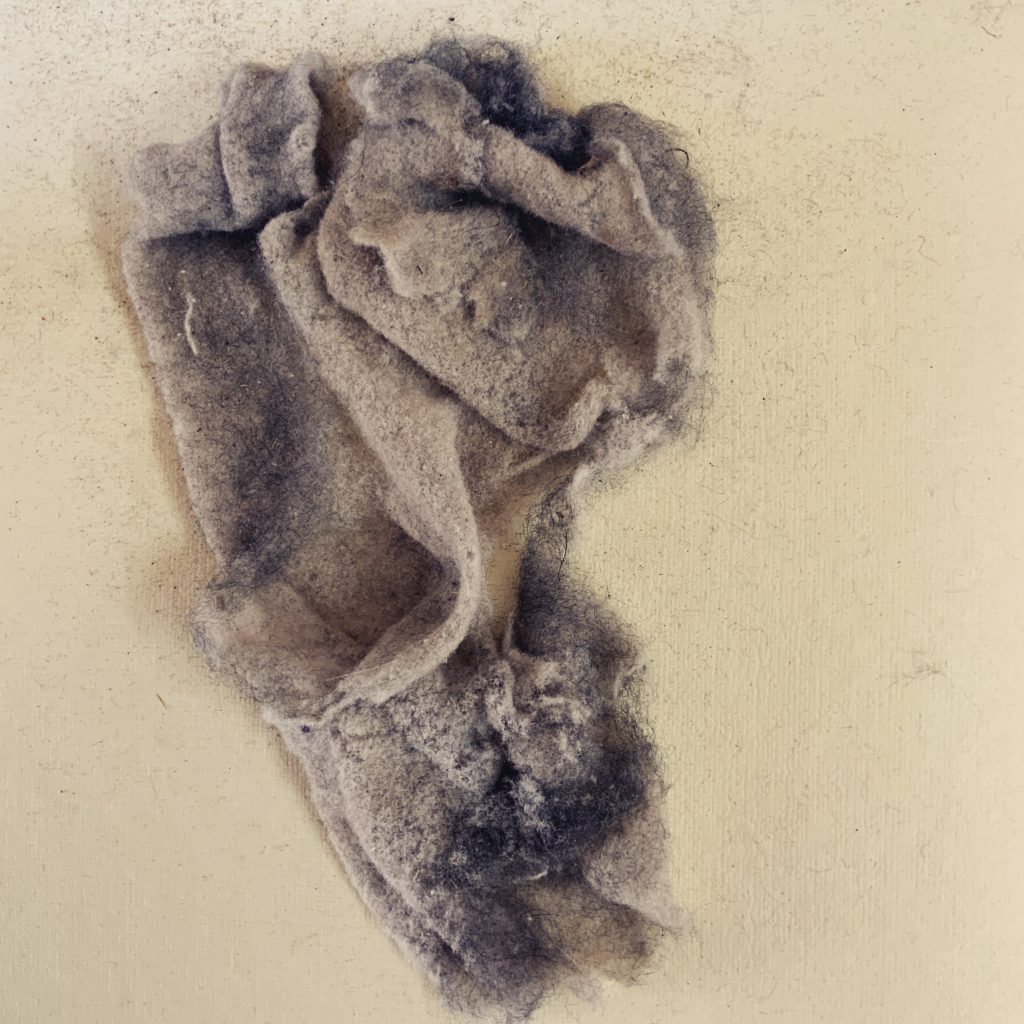
Fig. 123 To curve 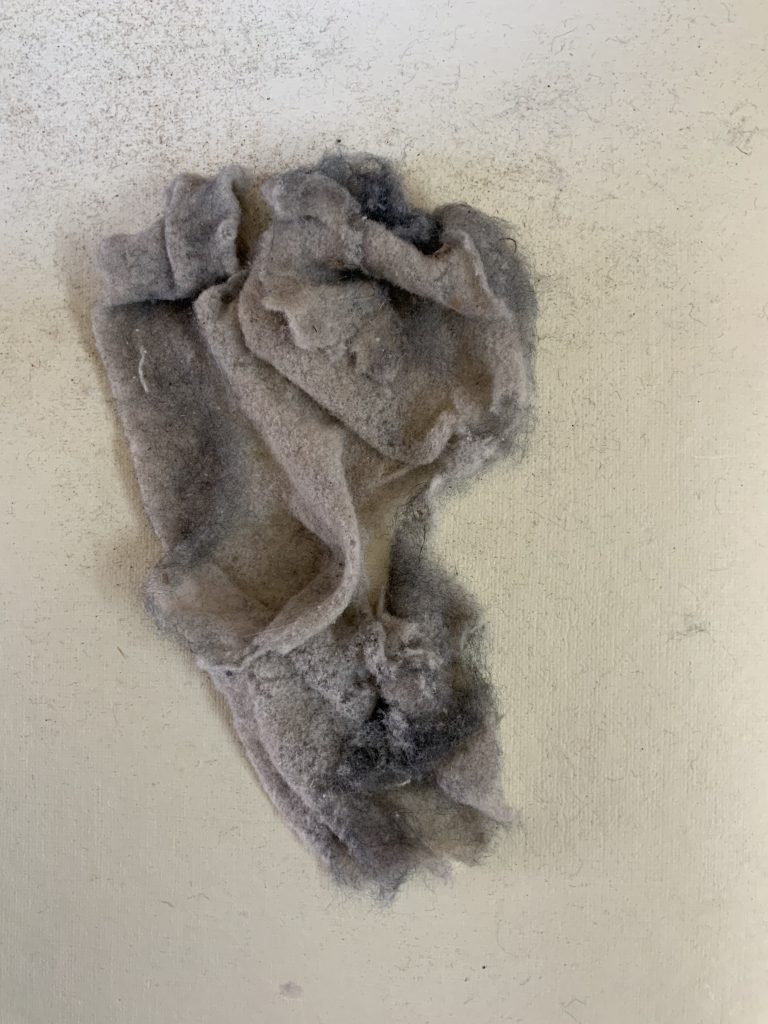
Fig. 124 To manipulate 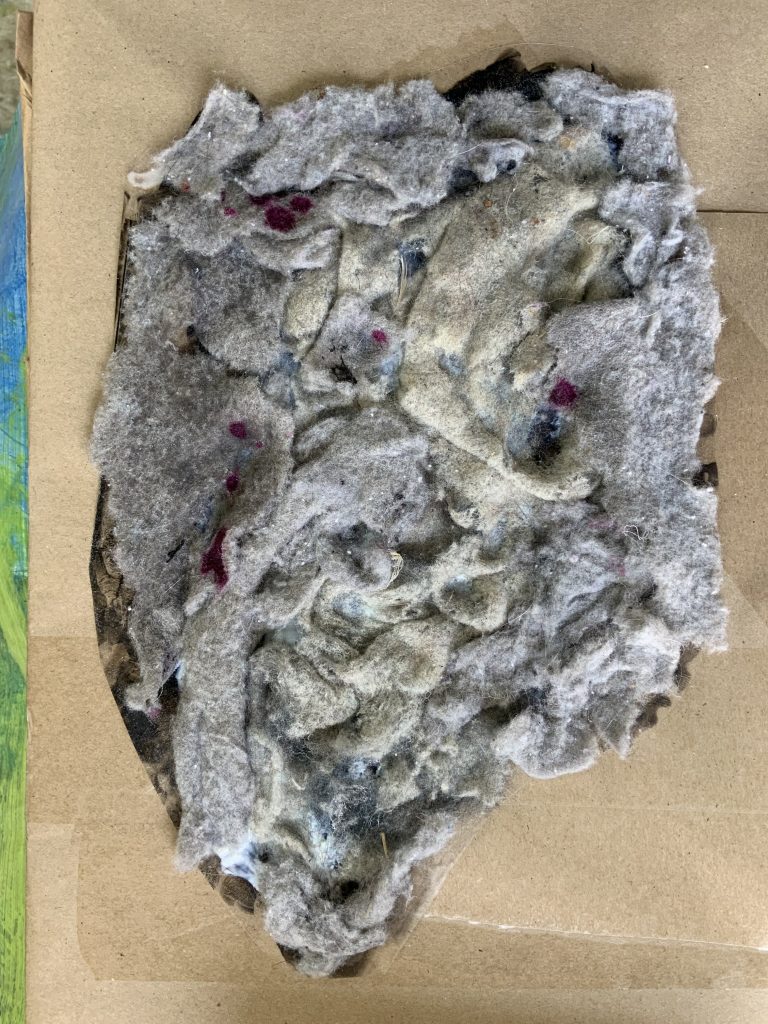
Fig. 125 Dust lung 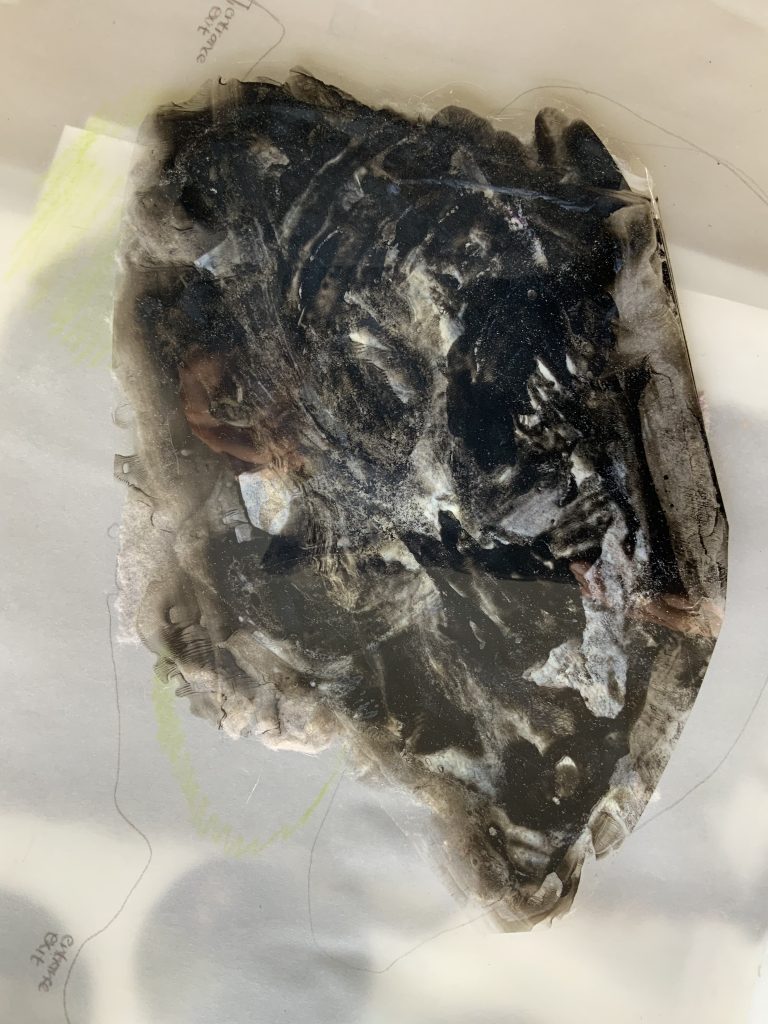
Fig. 126 Dust lung attached to acetate film 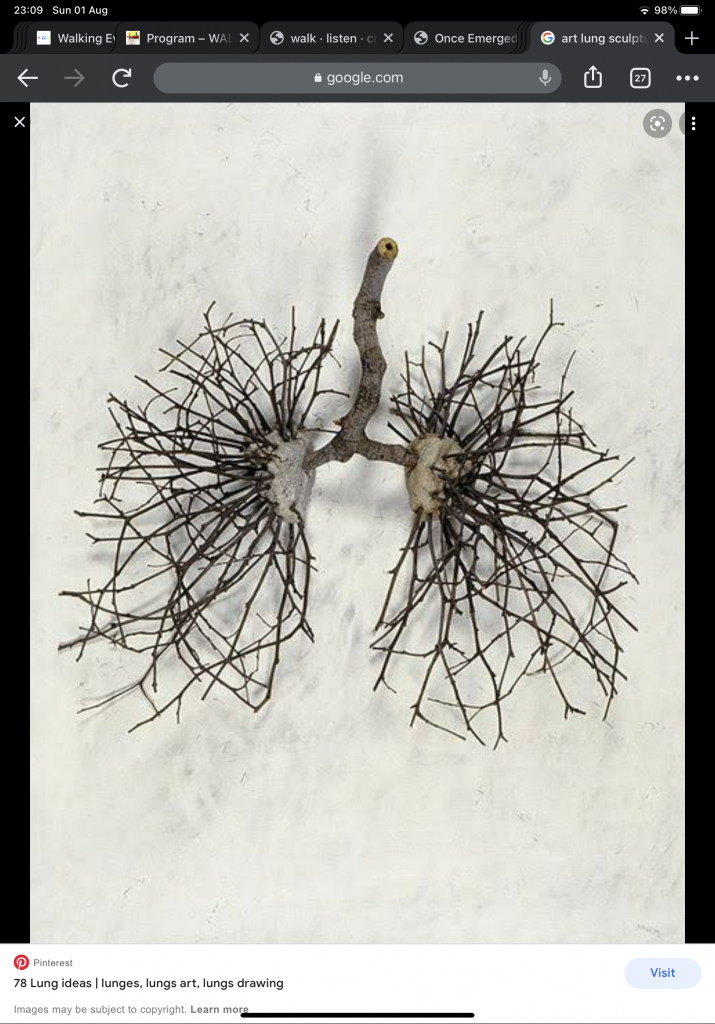
Fig. 127 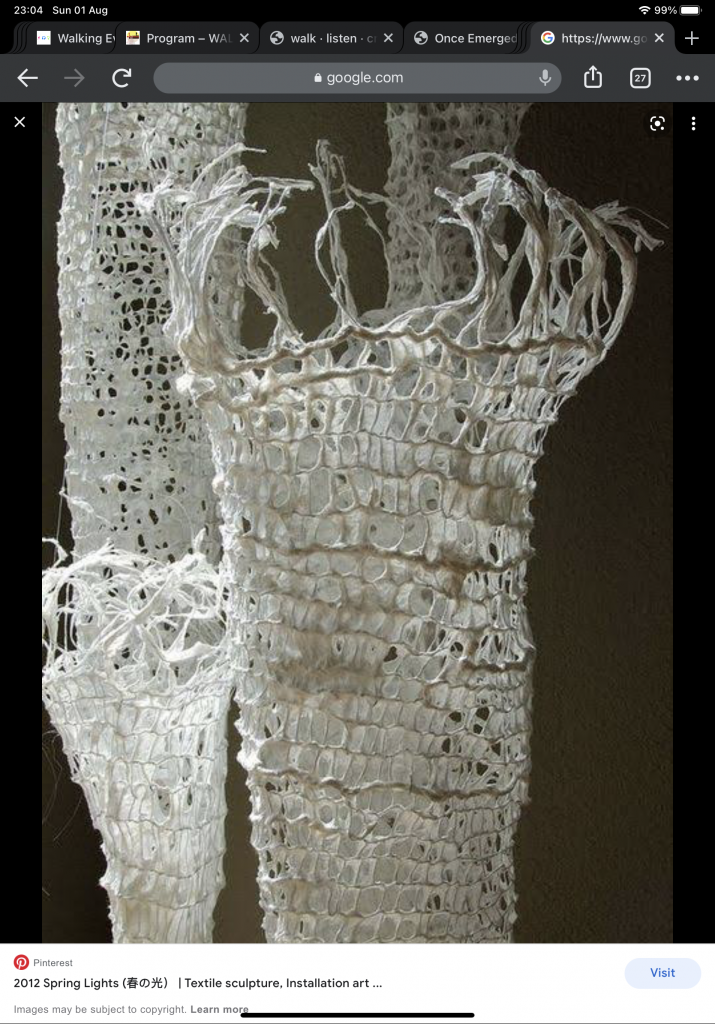
Fig. 128 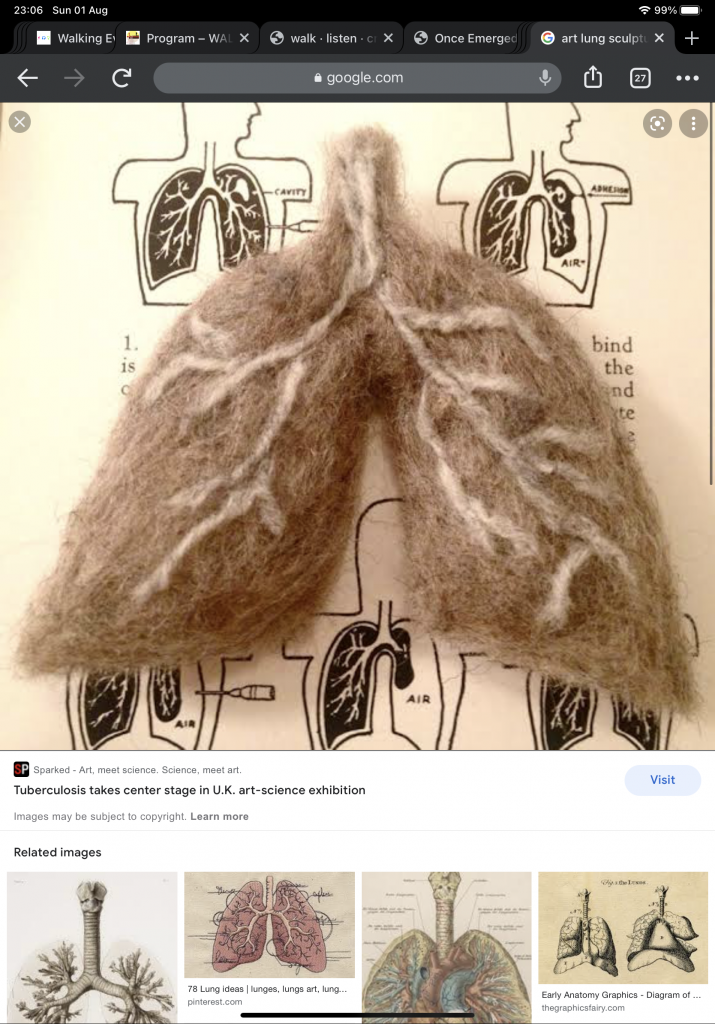
Fig. 129 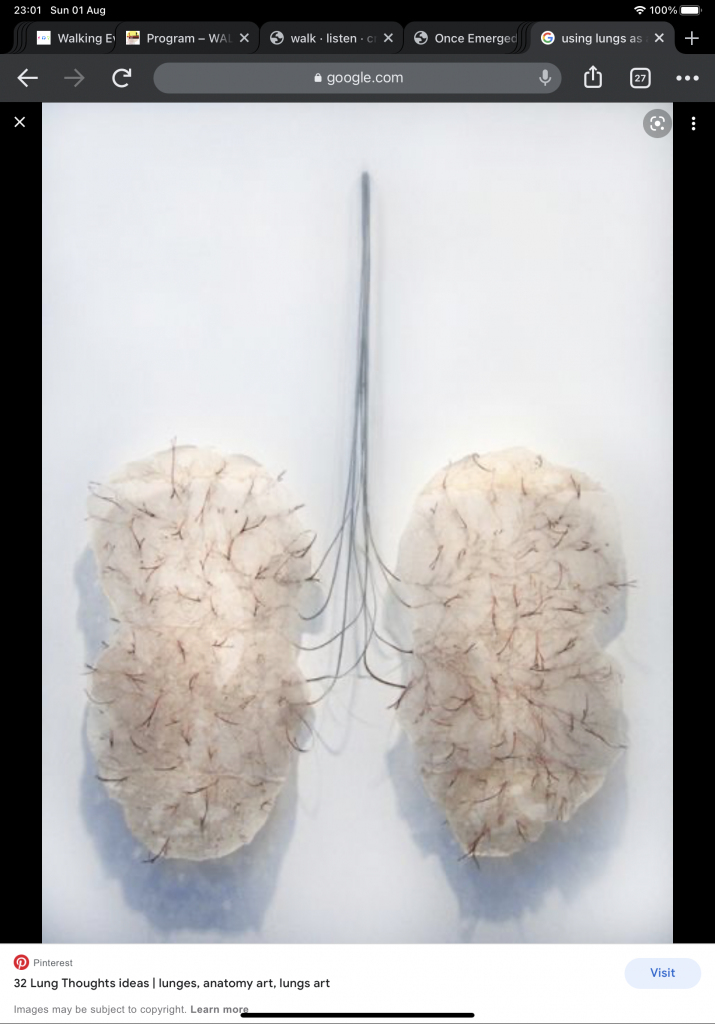
Fig. 130 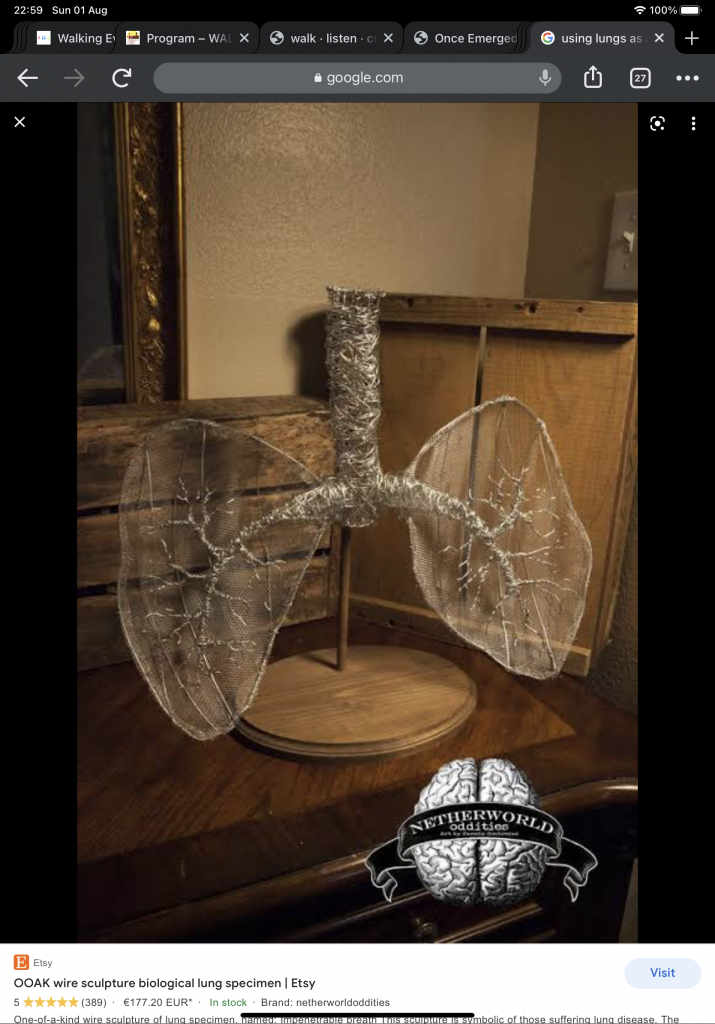
Fig. 131 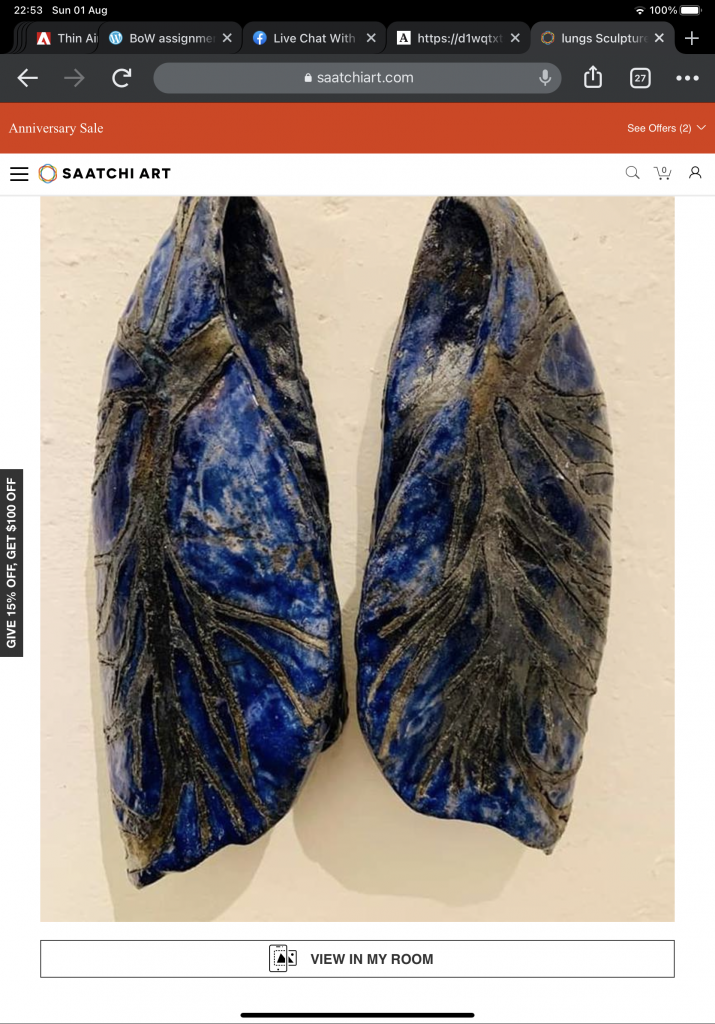
Fig. 132 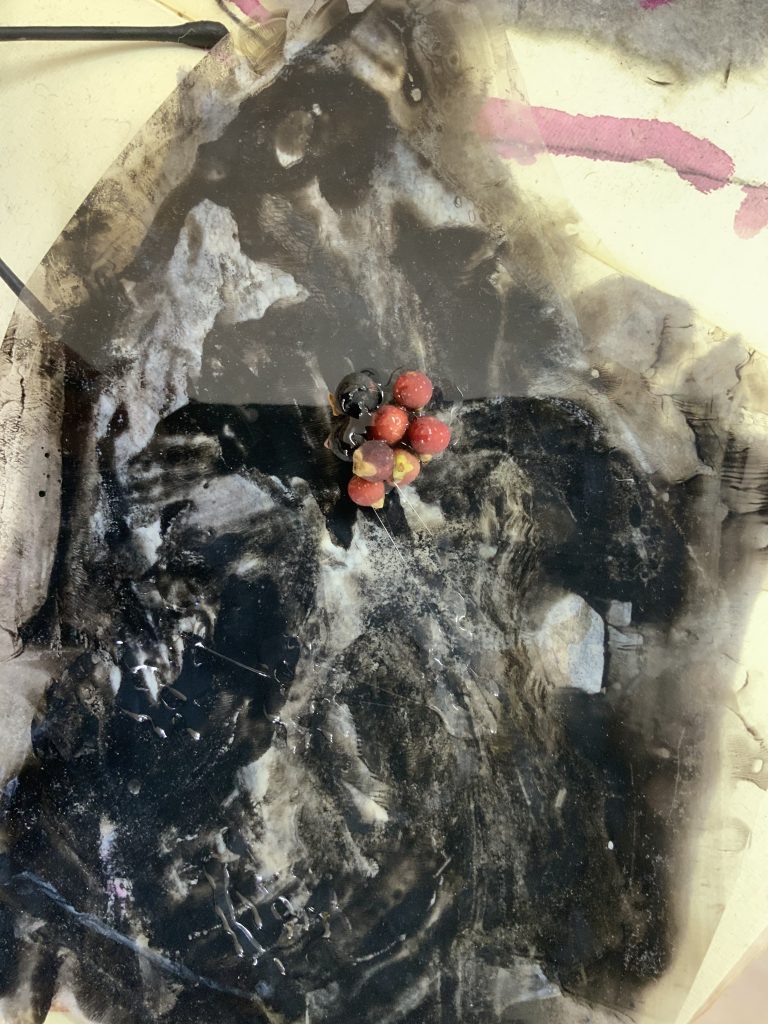
Fig. 133 Adding layers onto ‘lung’ 
Fig. 134 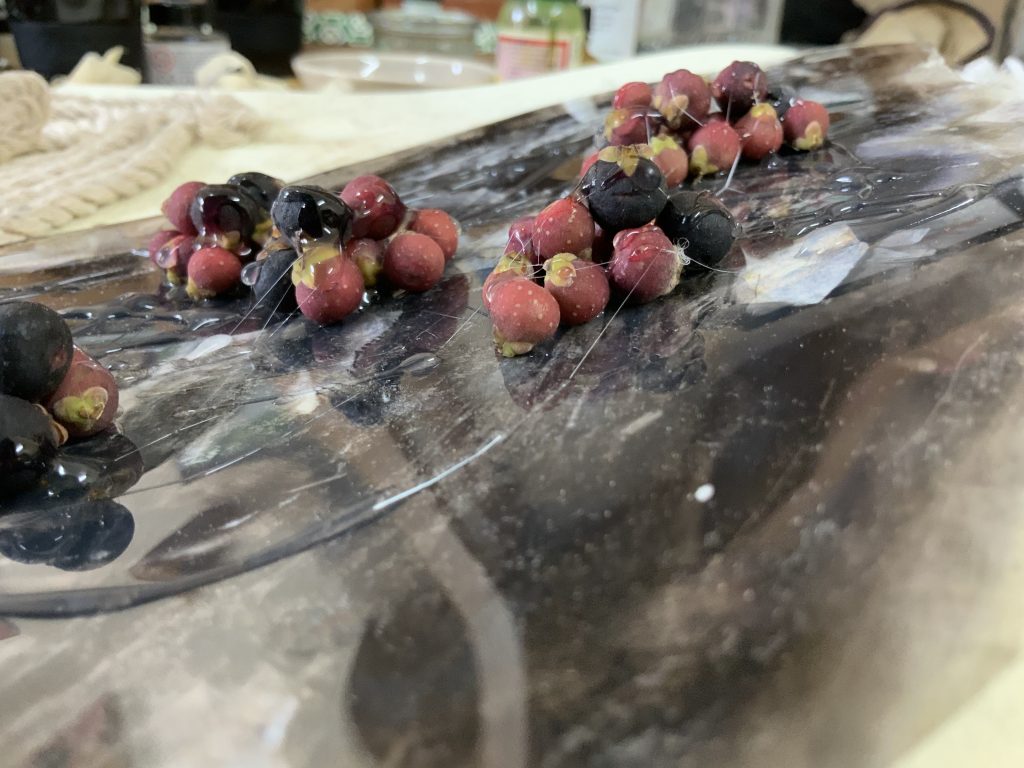
Fig. 135 Using adhesives
The above images are mostly of my own work, but also images are taken from the internet as inspiration and showing how where my thought process was taking me.
My son was discharged from hospital and we decide as a family that he will stay with us for a while – his wife and two young kids will stay at their home (A farm around 6km from us) – our son needs rest and is really weak. I am back in the studio and now considering the use of a heat gun: to mold, to heat, to cool, to form, to manipulate, to hide, to show, to find, to stick, to adhere, to function, to alter…..to sew, to sculpt, to hold on, to trust, to continue…
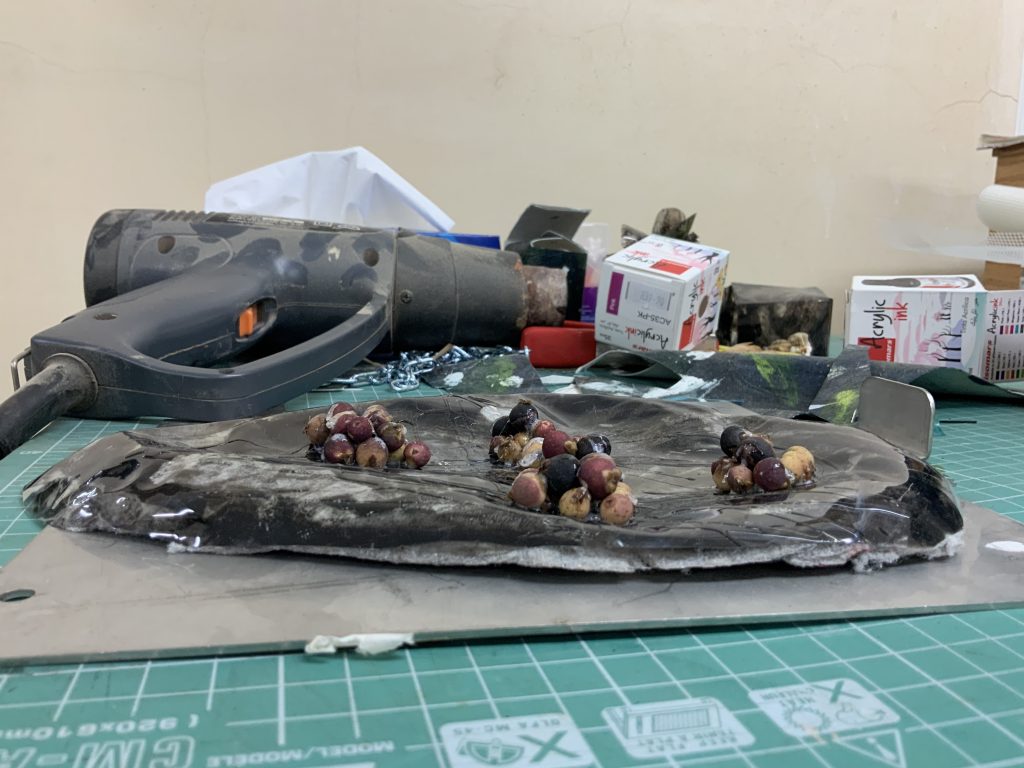
Fig. 136 
Fig. 137 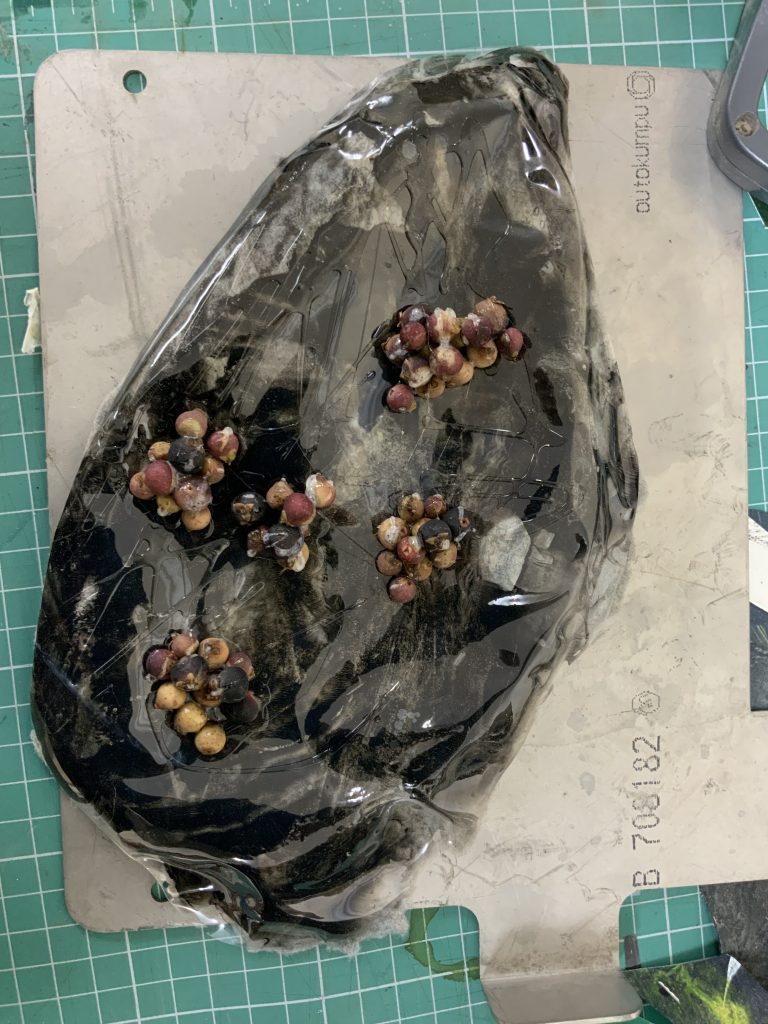
Fig. 138 
Fig. 139
Showing this to my son was cathartic and we could talk about the fear and angst of these moments. We are so aware that he needs to take life slowly in this ‘recuperating period – he still has a too high a heartbeat and needs to rest most of the day. He has to listen to his body and even though he is young, will have to take life slowly for this moment at least. His resting heartbeat is too high and with little movement, it goes higher, he is coughing less by the day as his lungs starts to heal and clear.
In Correspondences, by Tim Imgold I was taken by his discussion of an Italian artist and sculptor, Giuseppe Penone. Penone was part of the founding figures of the Arte povera movement and has a way of thinking which proceeds by analogy and inversion. Imgold writes that: “…in which everyting and everybody – ourselves included – has its double and is made whole by its restoration.” In the drawing by this artist, he shows a tree being, which is also the lungs, inversted as it is breath/exhalations which pours into the surrounding atmoshpere. It reminds me of the dried plant material I placed next to my plaser of Paris made lung form, in my last image of the series of images of lungs, below.
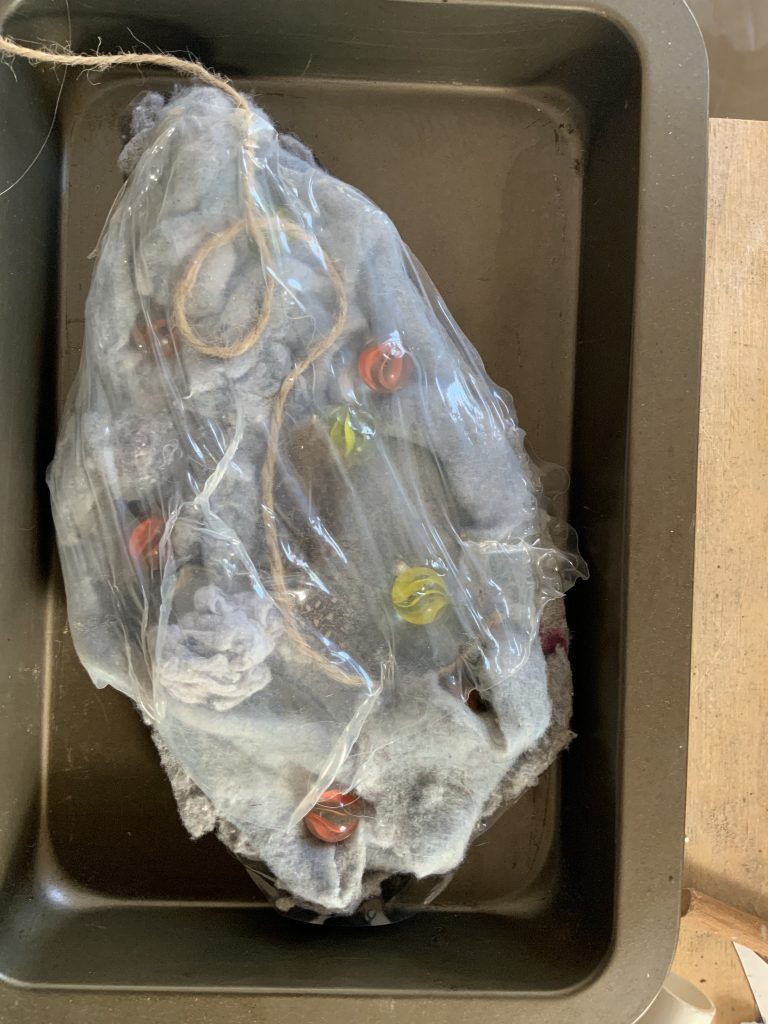
Fig. 140 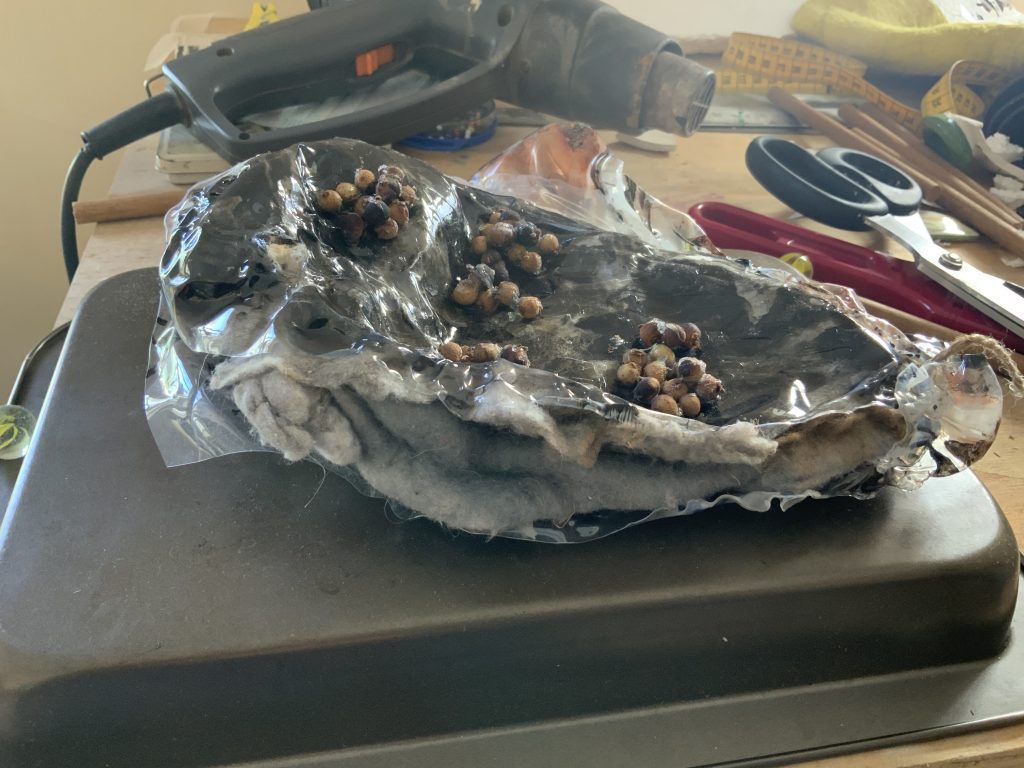
Fig. 141 Trying
to close the boundaries, sealing with a heatgun
Fig. 142 
Fig. 143 
Fig. 144 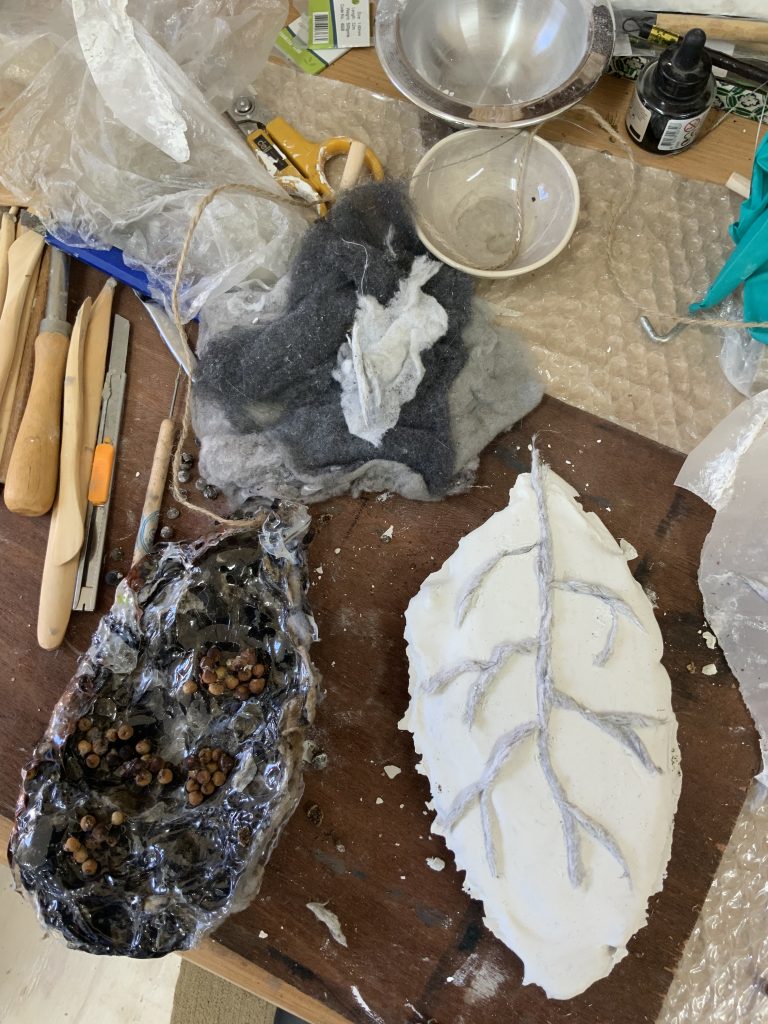
Fig. 145 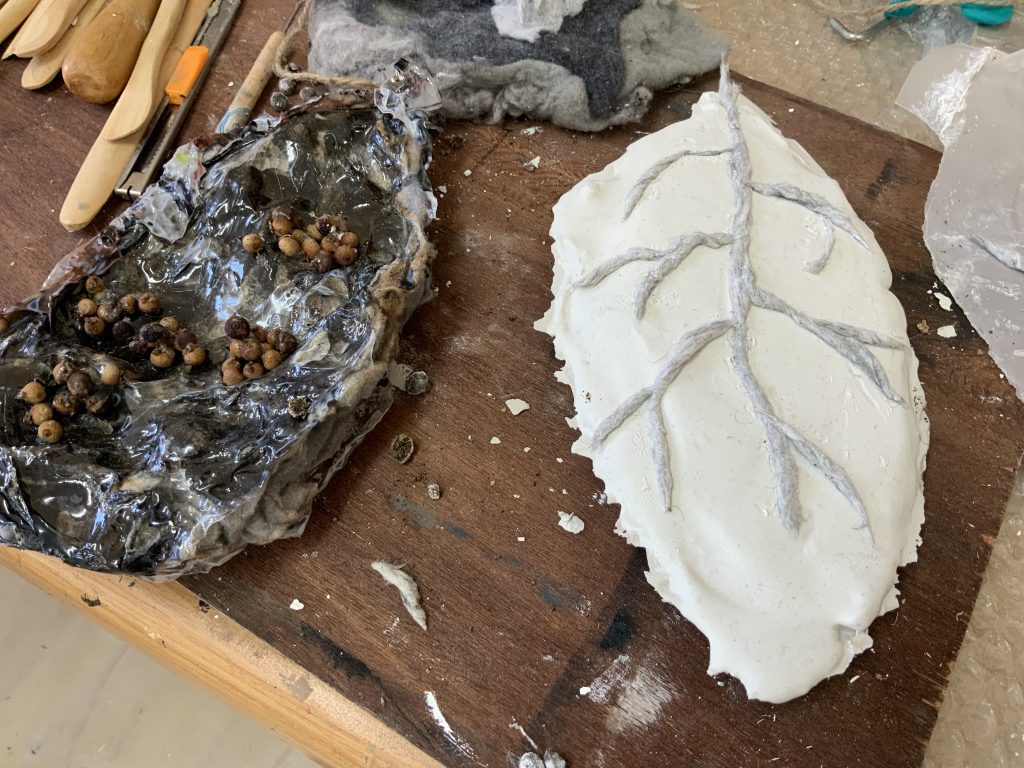
Fig. 146 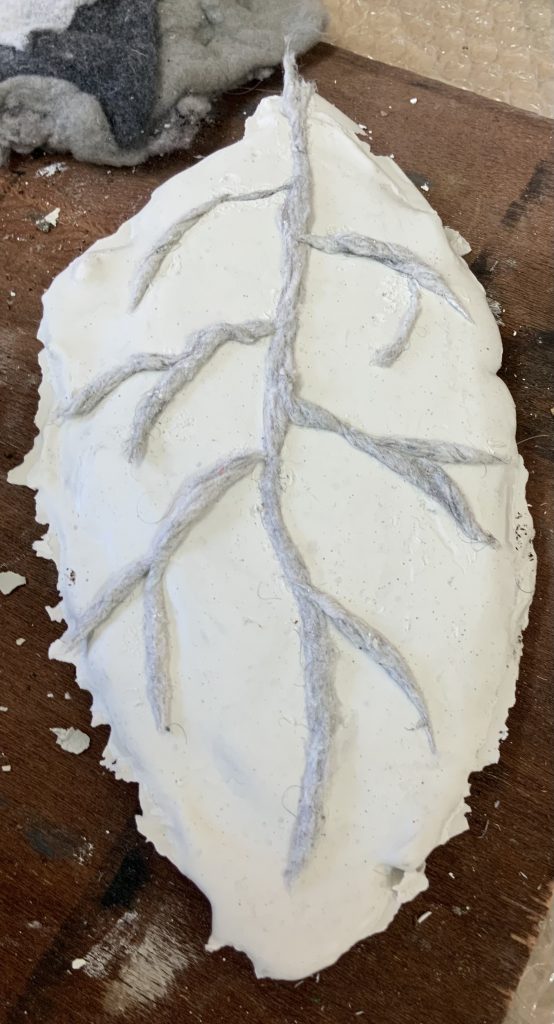
Fig. 147 
Fig. 148 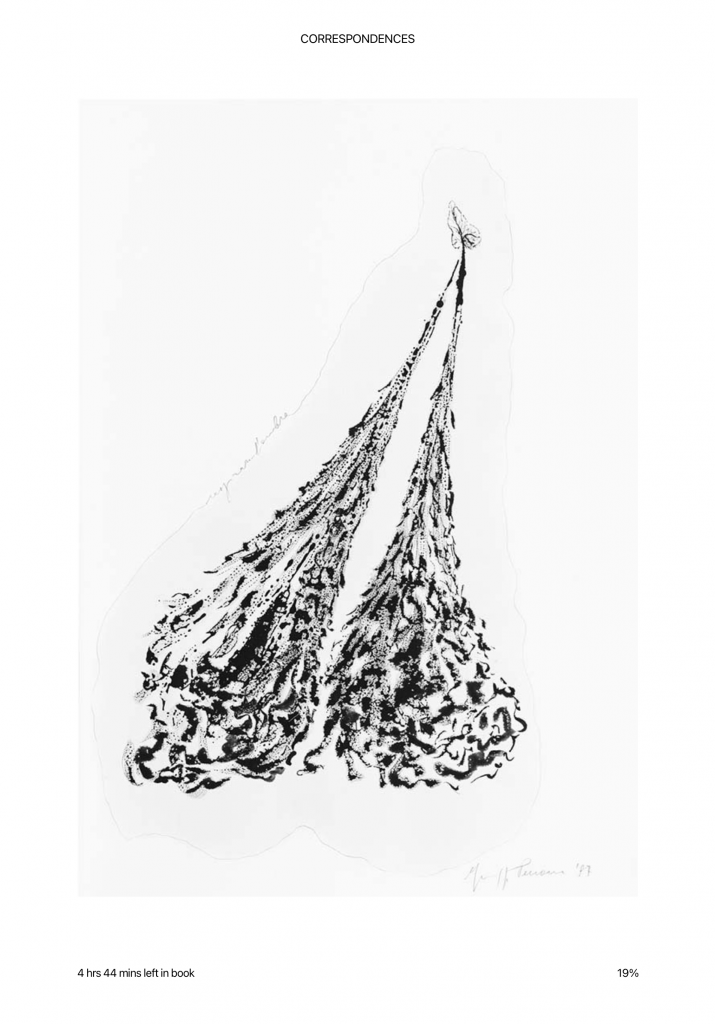
Fig. 149 Respirare l’ombra (Breathe the Shadow). Giuseppe Penone, 1987 (screengrab from Correspondences, Tim Imgold)
ARRANGE
I collected wire on the farmyard. I like the organic form which these found objects have. They look like writing, lines….abstract. I feel they communicate with the gypsum forms I made earlier. I made some similar forms with the Bongo putty.
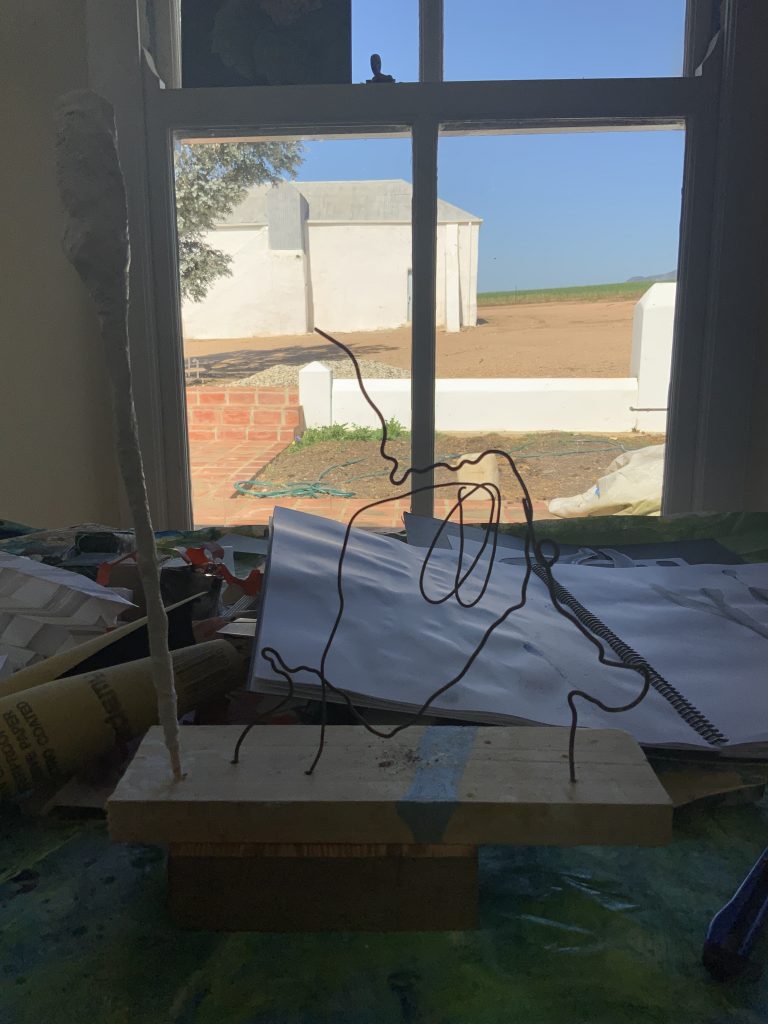
Fig. 150 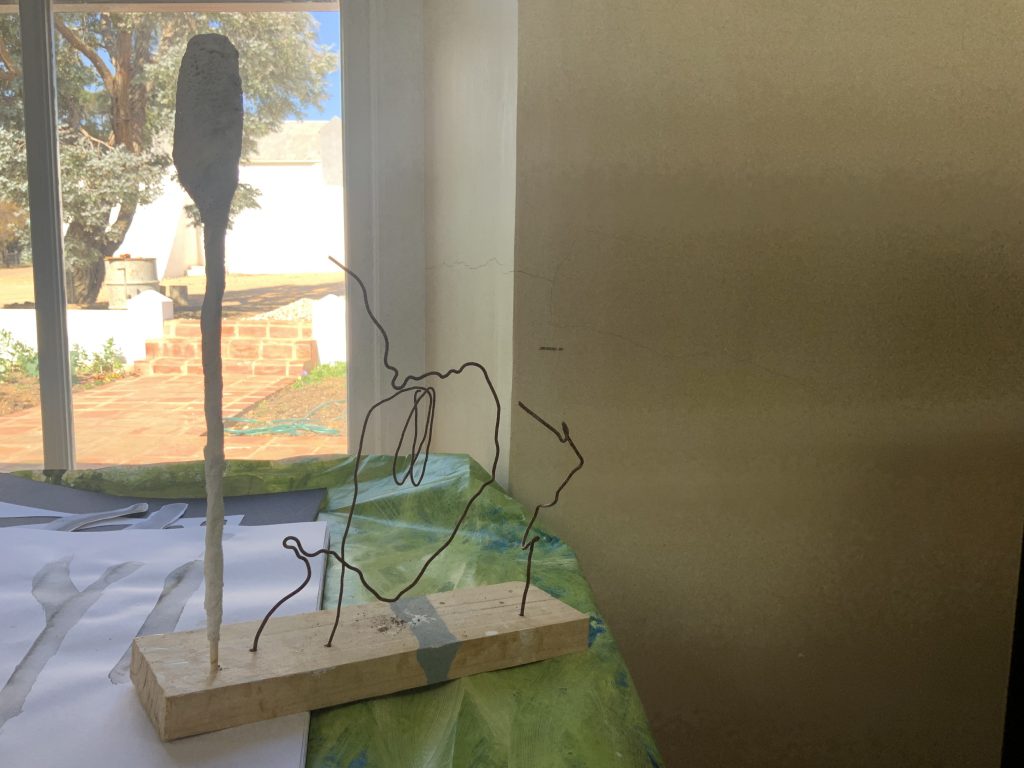
Fig. 151 
Fig. 152
continuing with this process
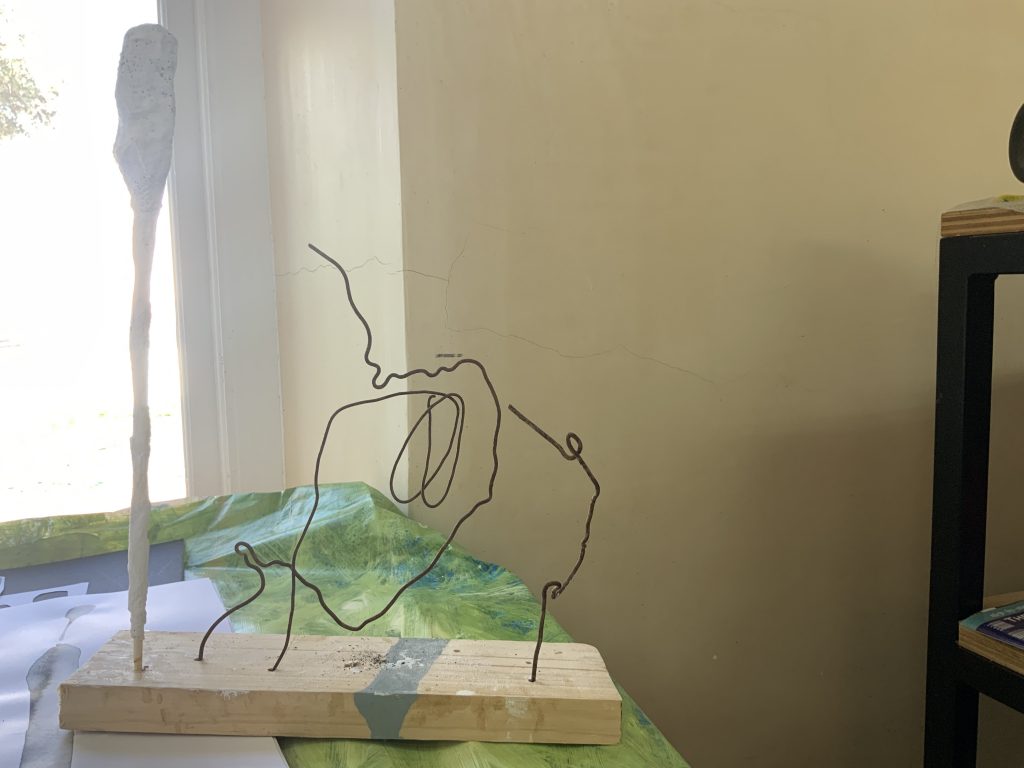
Fig. 153 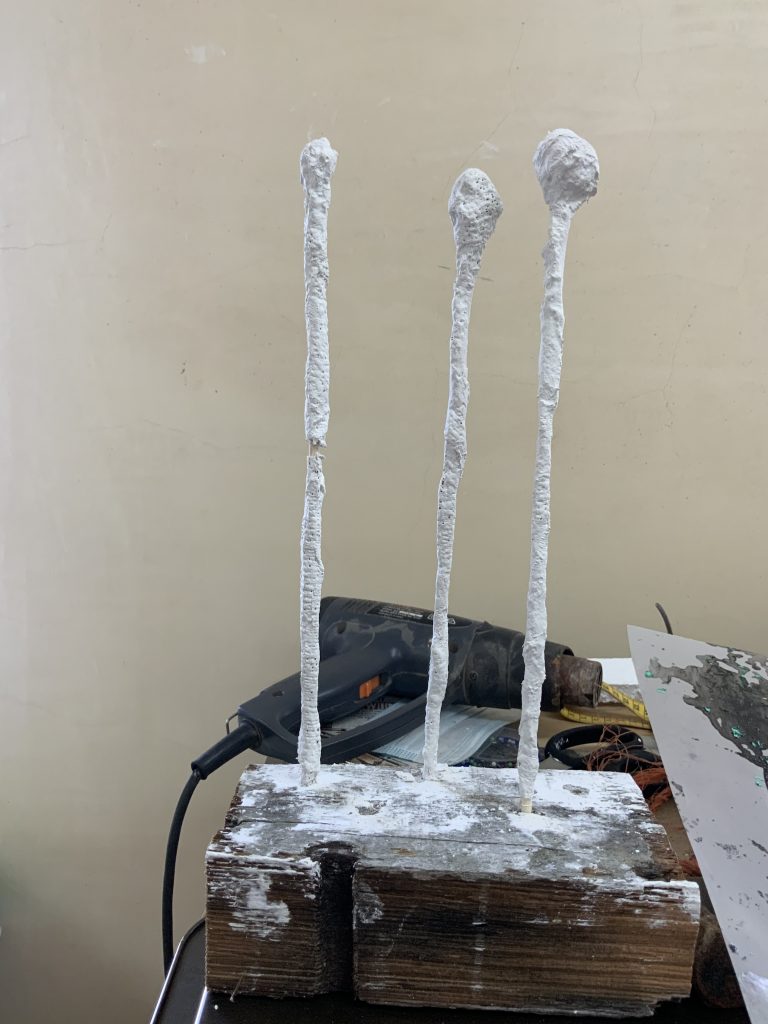
Fig. 154 
Fig. 155 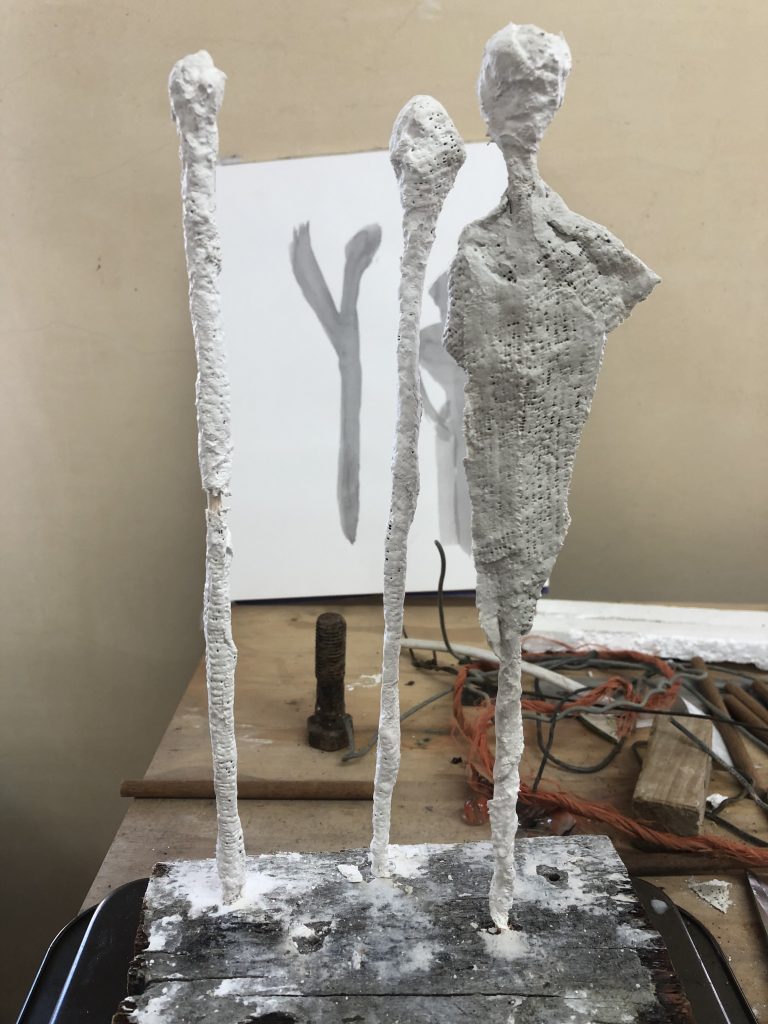
Fig. 156 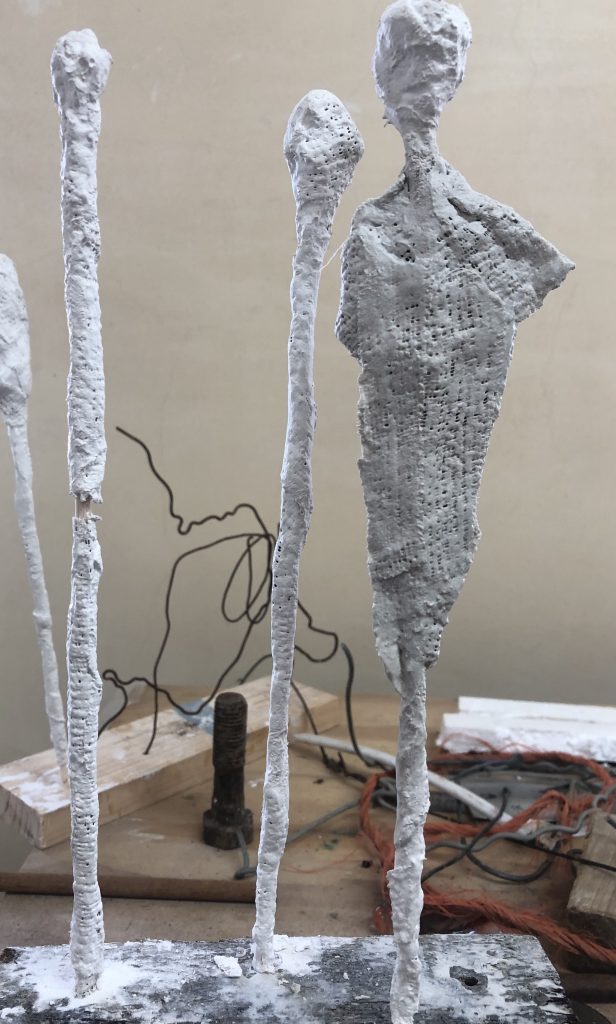
Fig. 157
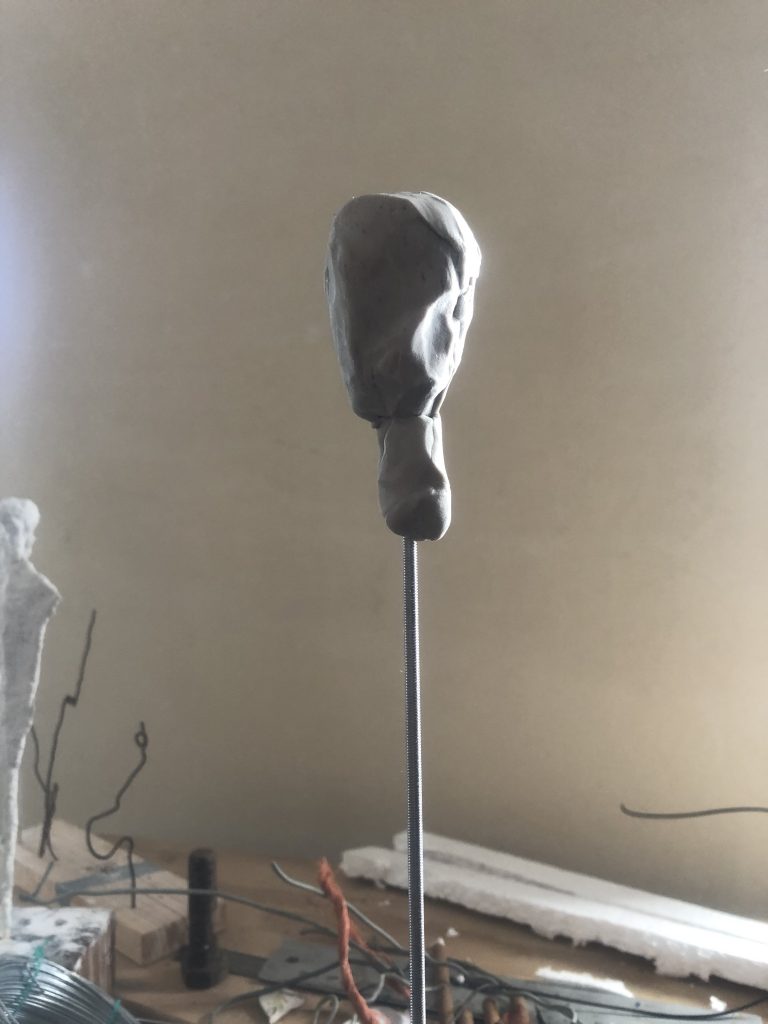
Fig. 158 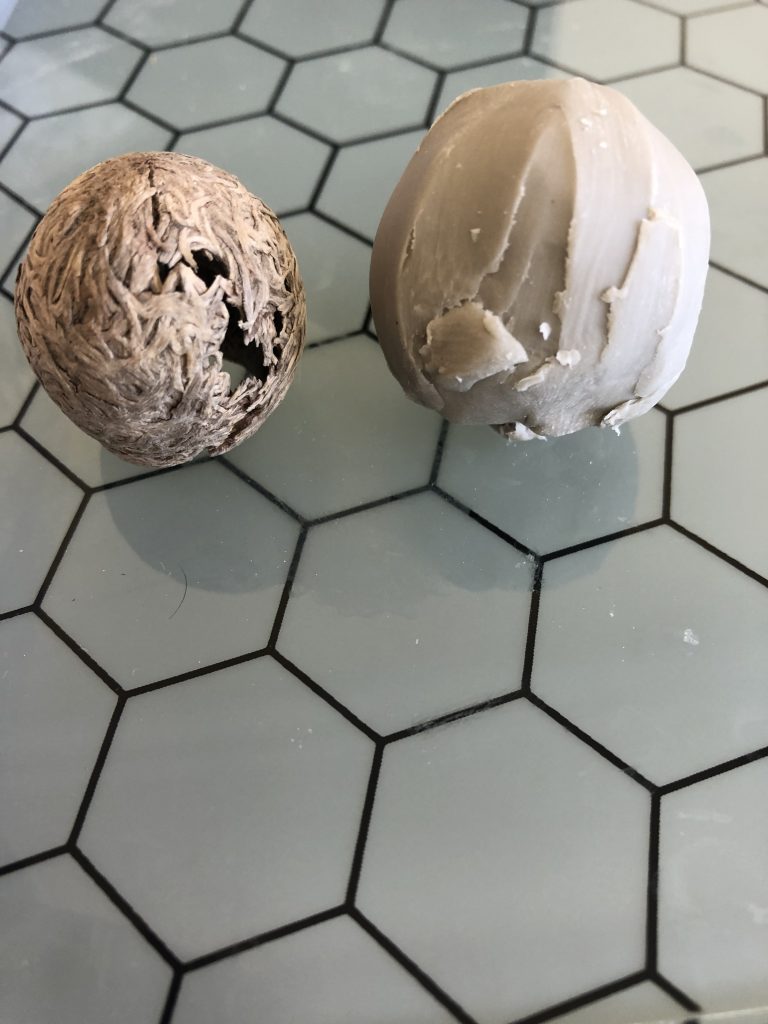
Fig. 159 
Fig. 160 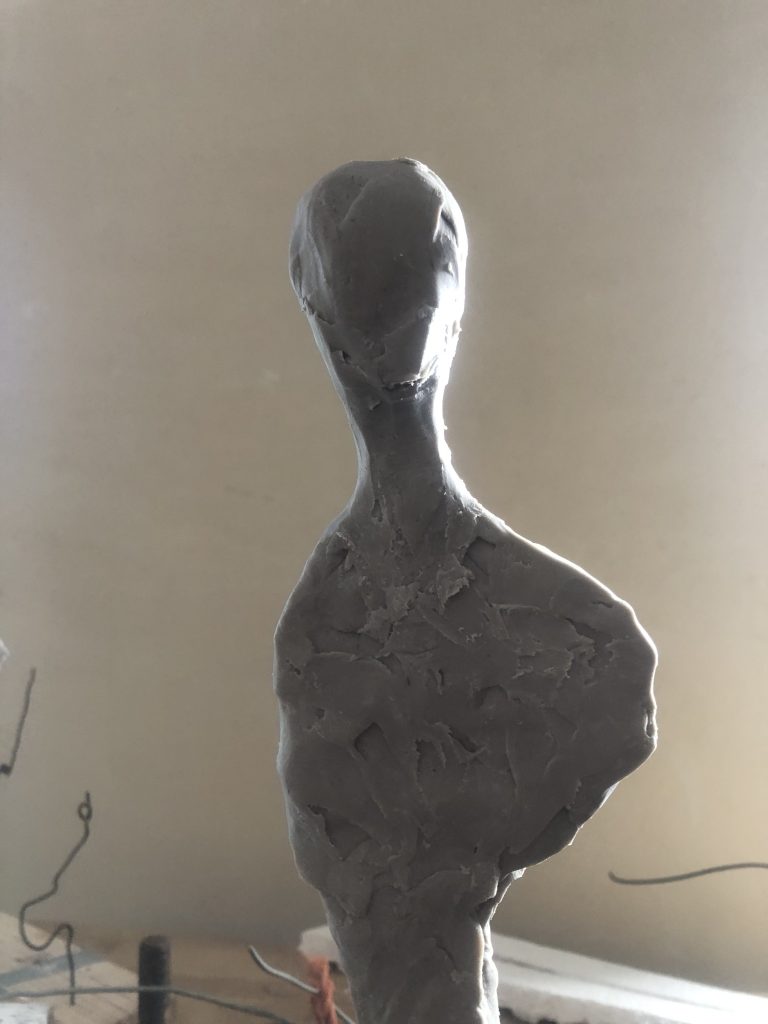
Fig. 161 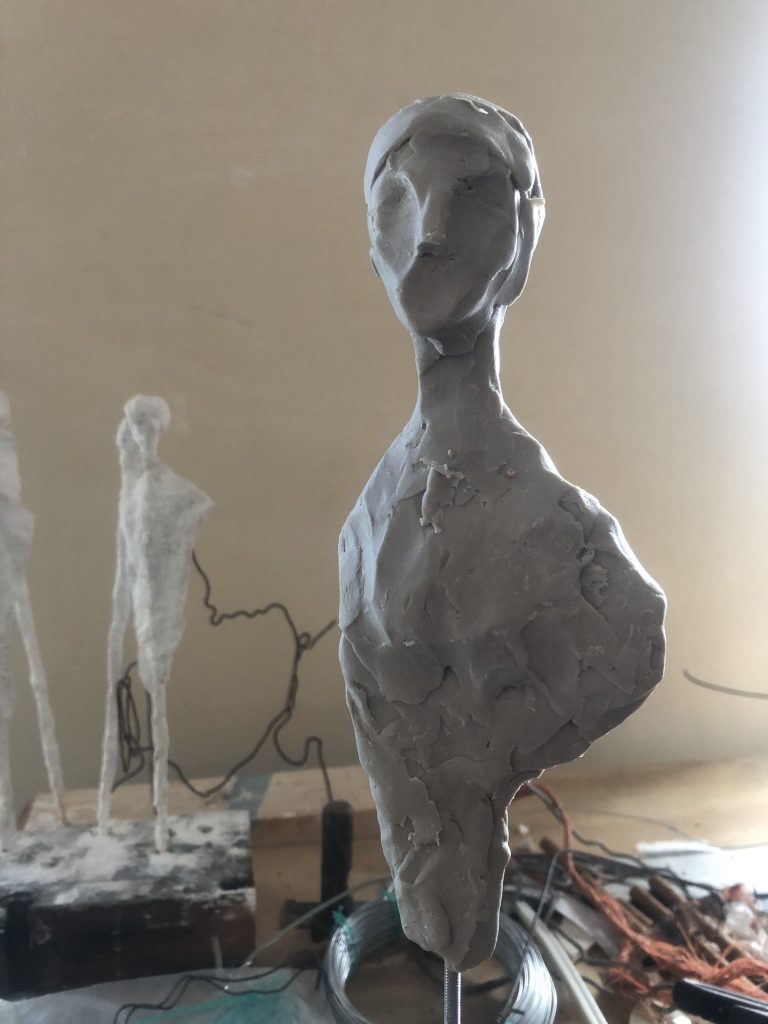
Fig. 162 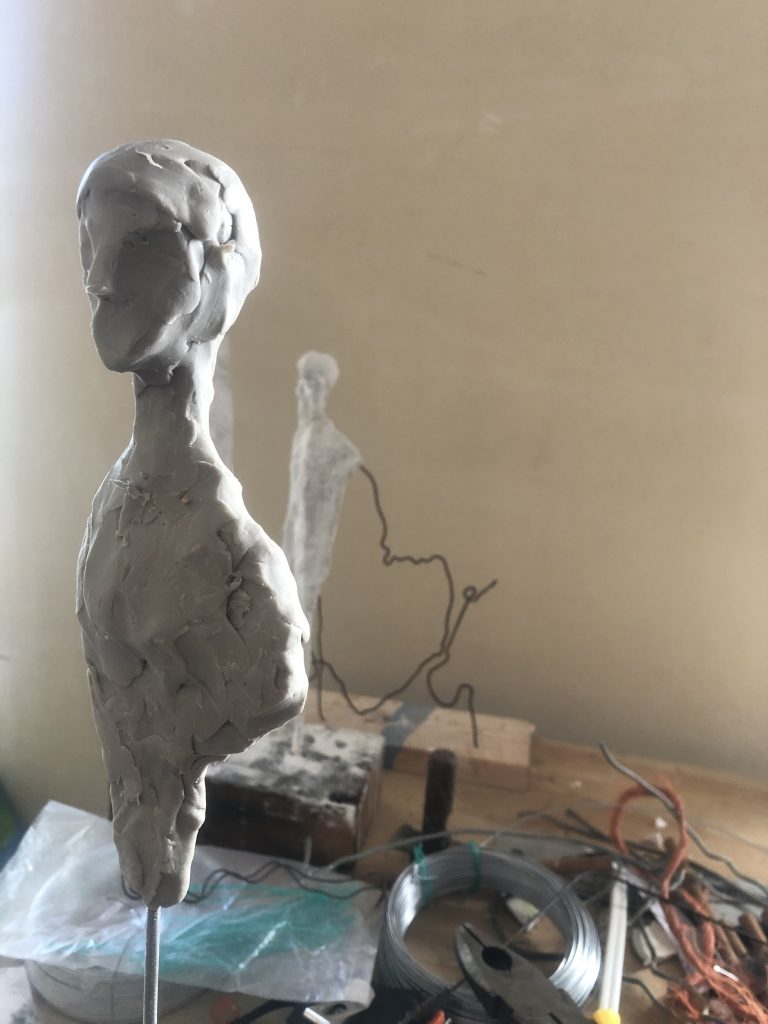
Fig. 163
By now my table looks very busy.
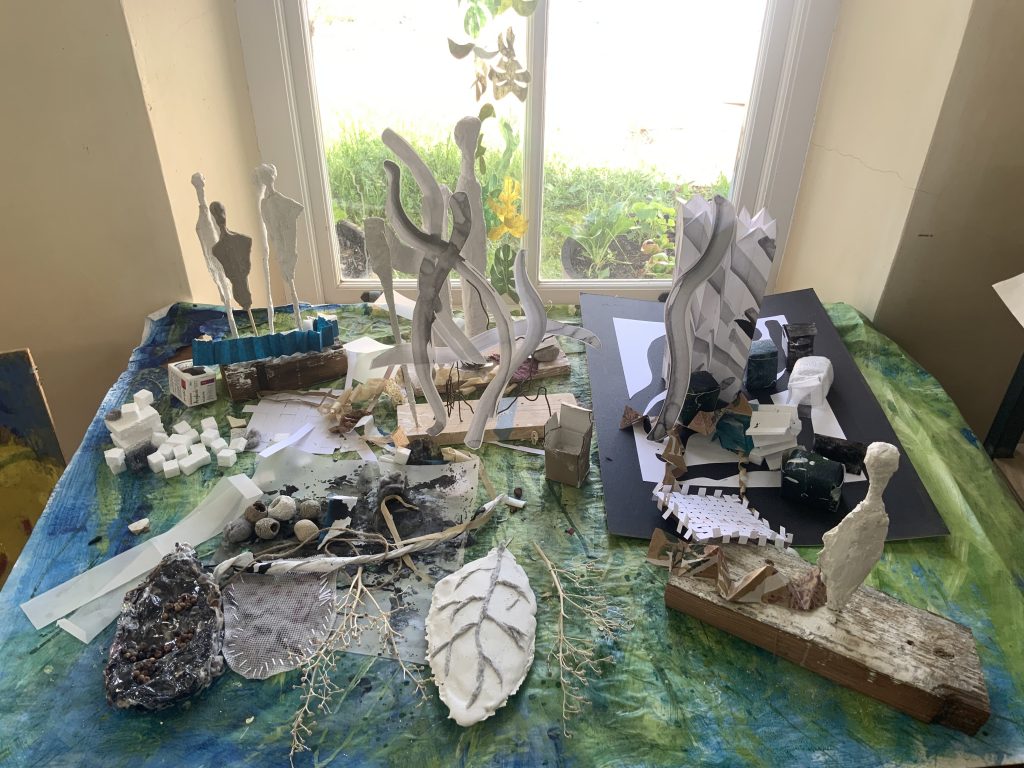
Fig. 163 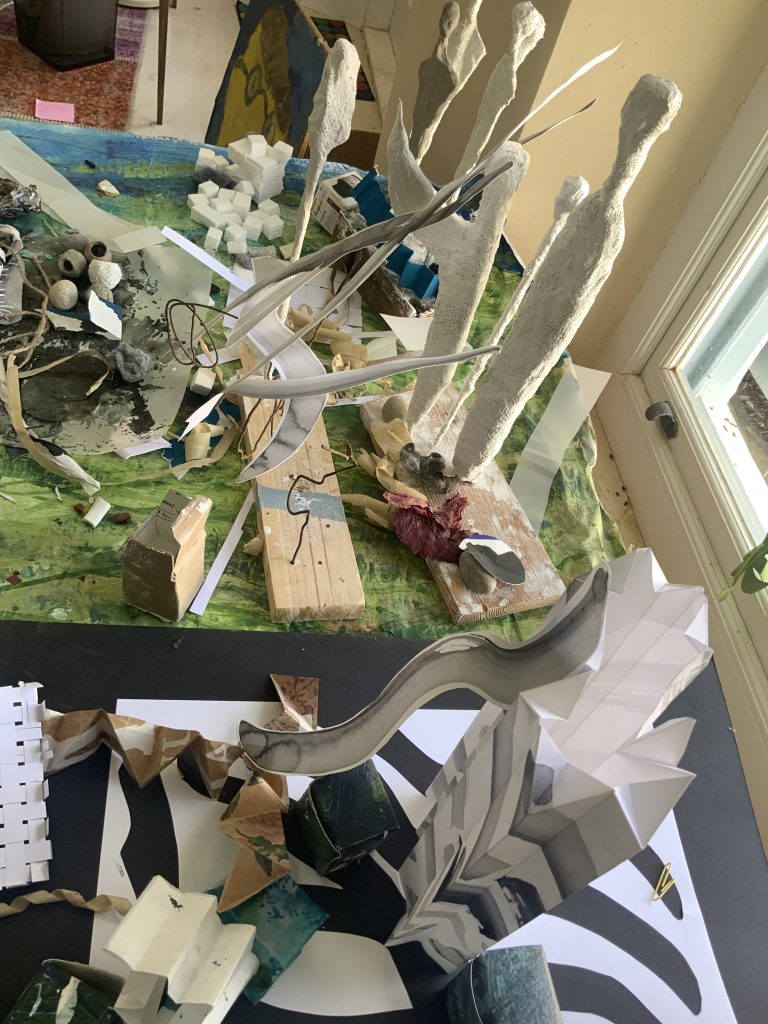
Fig. 164 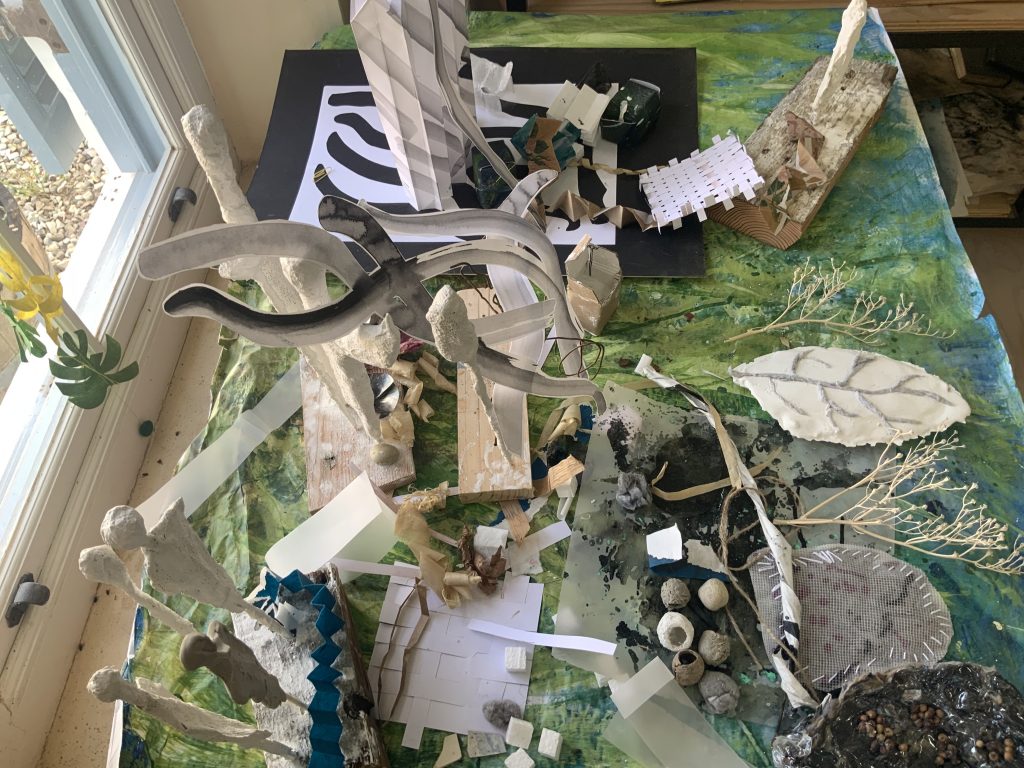
Fig. 165 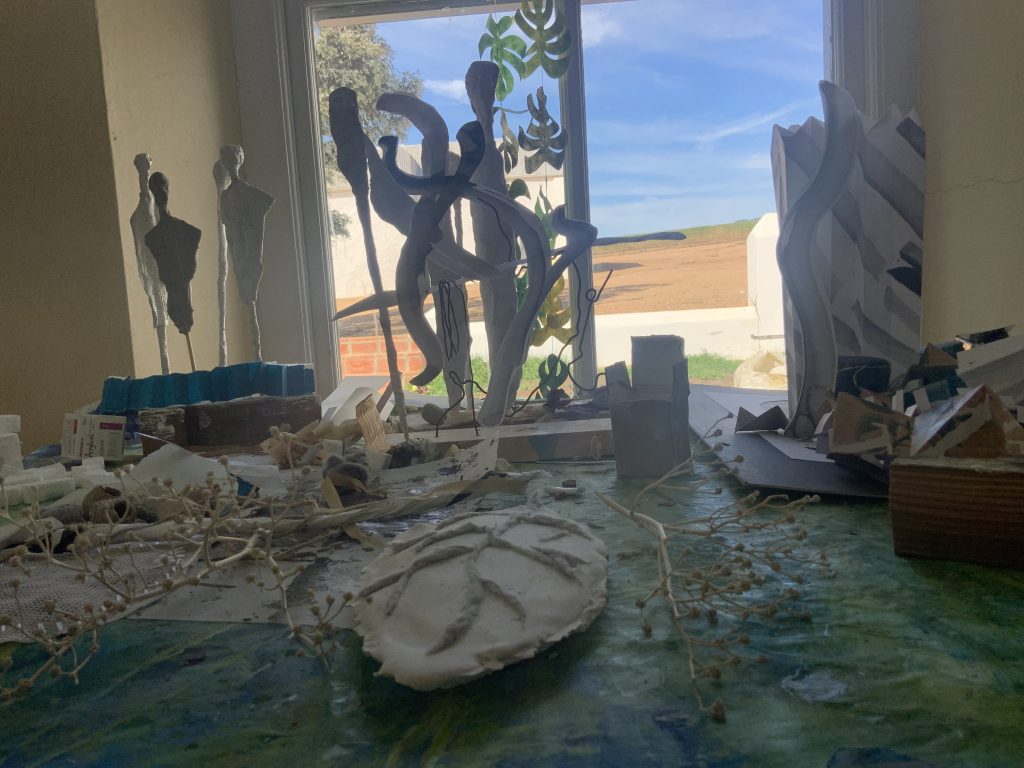
Fig. 166 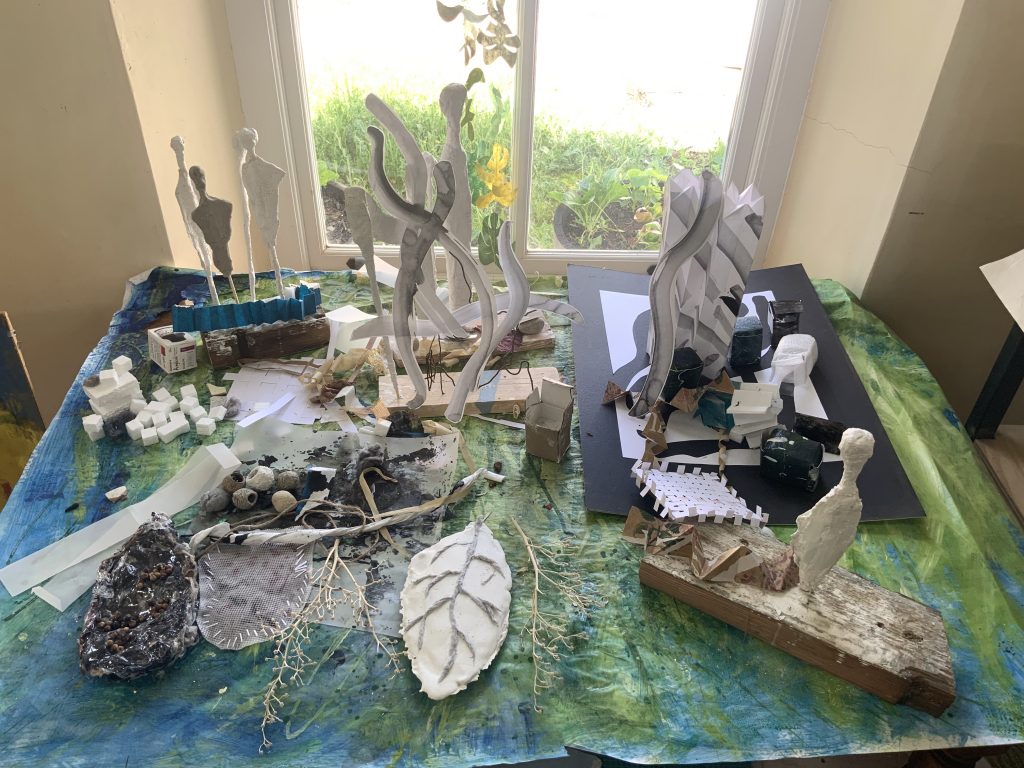
Fig. 167 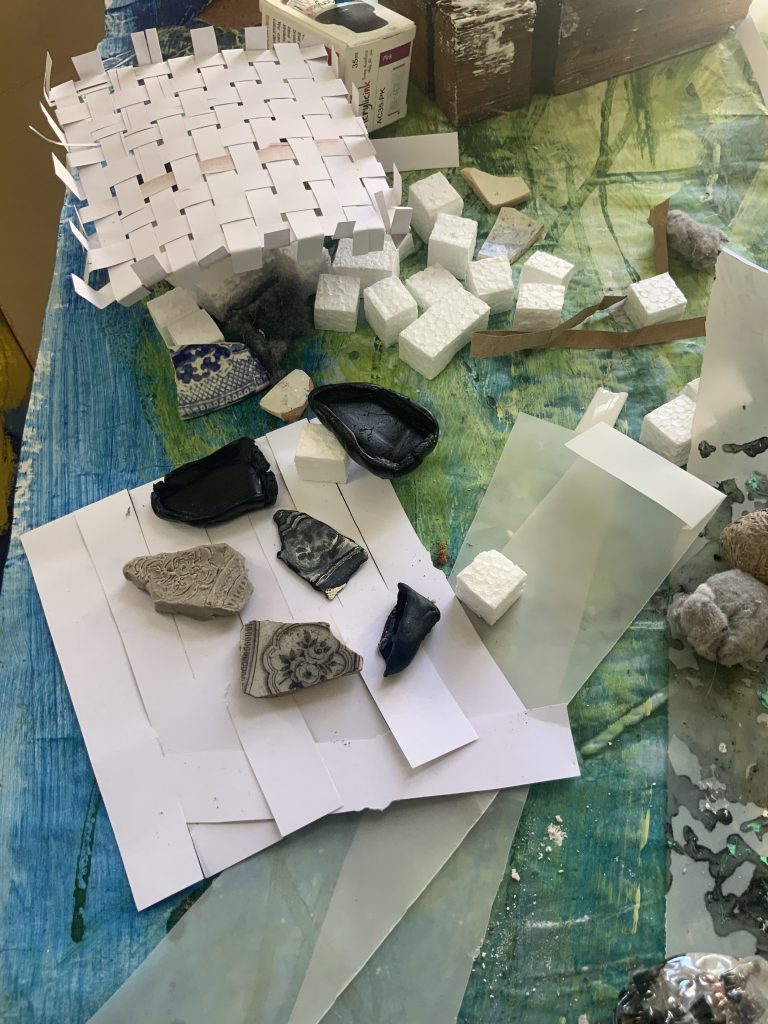
Fig. 168 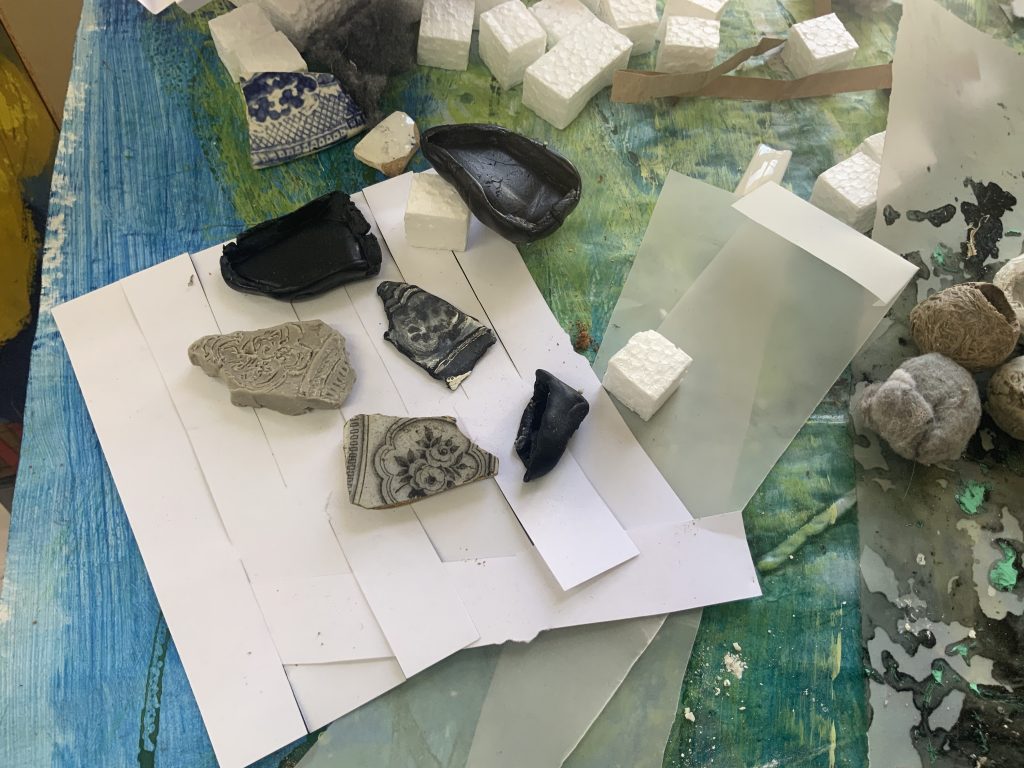
Fig. 169 
Fig. 170
I add more objects by building the ‘lines’ out of the polystyrene block I found in our packaging materials. Bostick makes this material disintegrate and I use some of the renovating cornice adhesives…. The building becomes possible and I can create curves and challenge gravity!
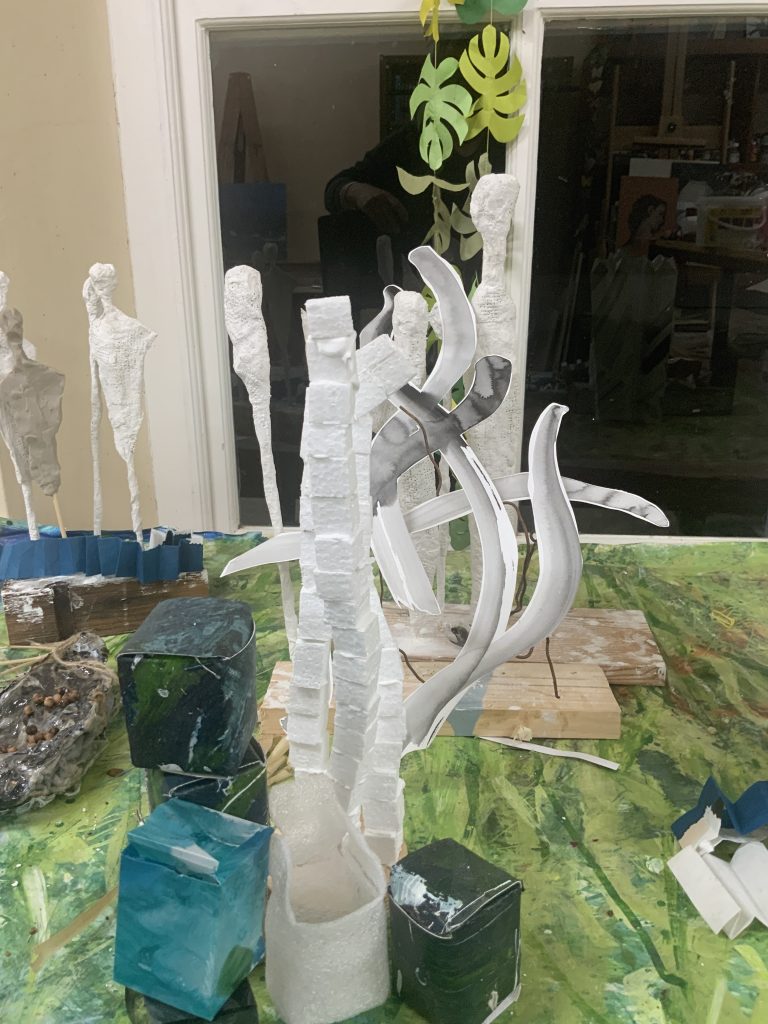
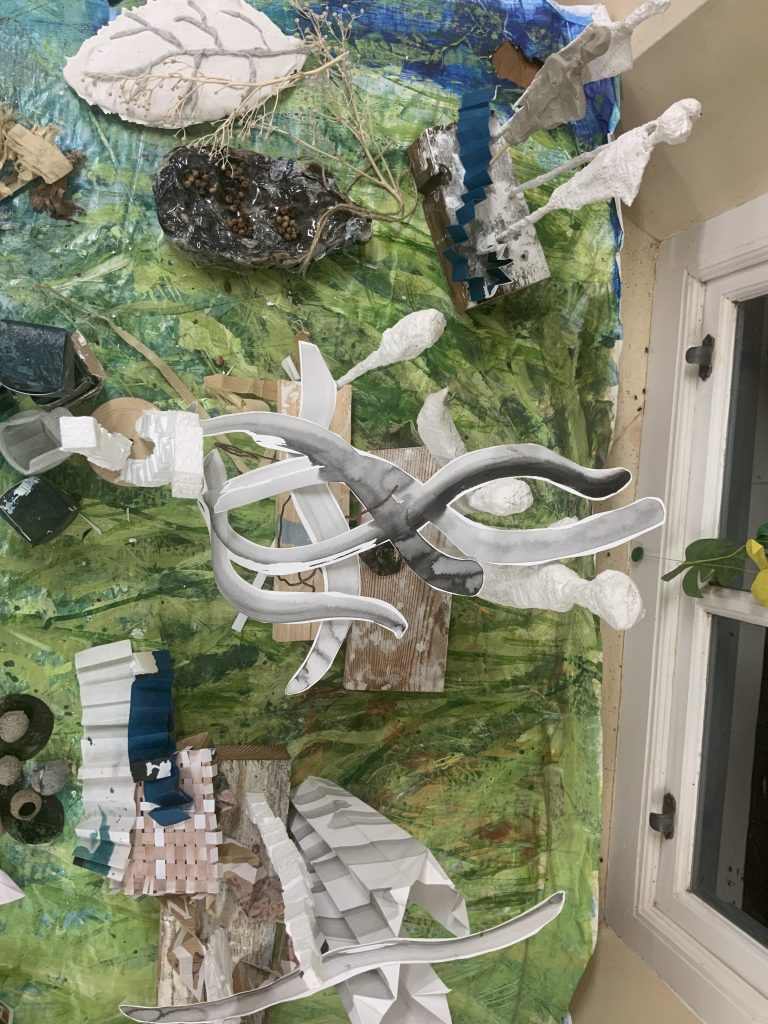
Fig. 172 
Fig. 173
Research on Giuseppe Penone as part of this learning about organic forms I feel I can express in my ongoing project.
The only works of Penone which I have seen are the Leaves of Light Tree and Earth of the World, and Propagation at the Louvre, Abu Dhabi. This bronze tree is captured in the artist’s own hand as it rises into the roof structure, where light pours through. I read that Penone regards the tree as a symbol of life shared universally by all cultures. Symbolism is in the handful of earth in the hand, from which the tree germinates and how this can be compared with how life develops either spontaneously of created by human work. Mankind and nature are highlighted in this work. It is also clear that this work is underscored by the design of the building in terms of form and content.
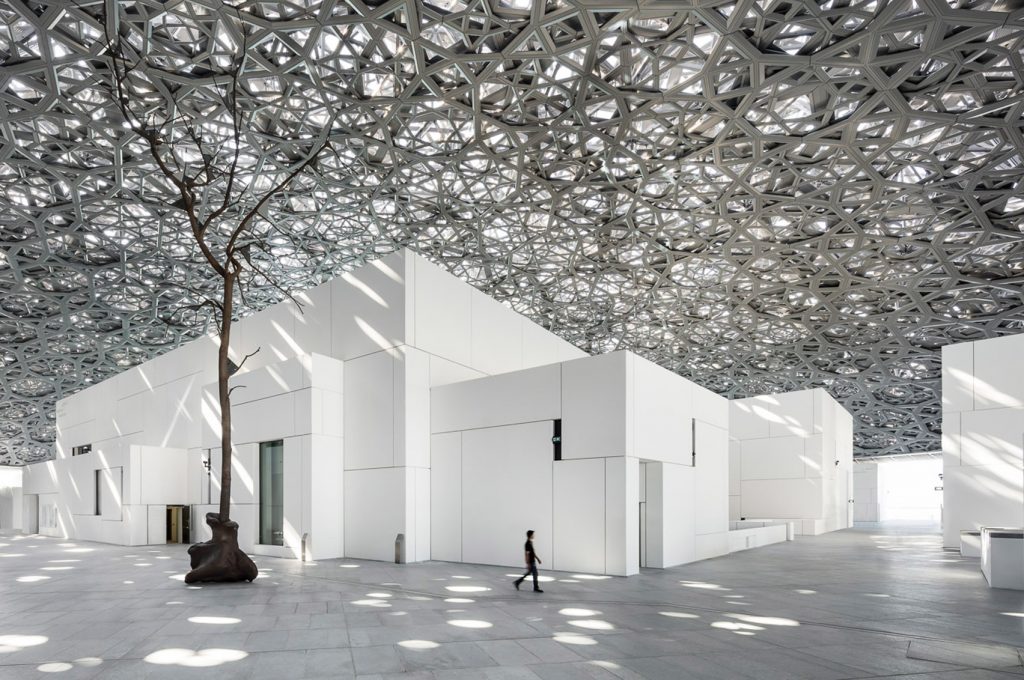
Propagation is a wall-mounted drawing on porcelain and Earth of the World – Vase, and Earth of the World – Clay Lumps is worked with terracotta, iron, and porcelain clay. Both works are displayed in vitrines.
I read about his Soffi (Breath) works (1977–), where he attempted to translate into sculpture the ephemeral phenomenon of breath. He took photographs of light powder that he had blown into the air and translated the cloud-like forms into bronze sculptures, drawings, and vase-like constructions
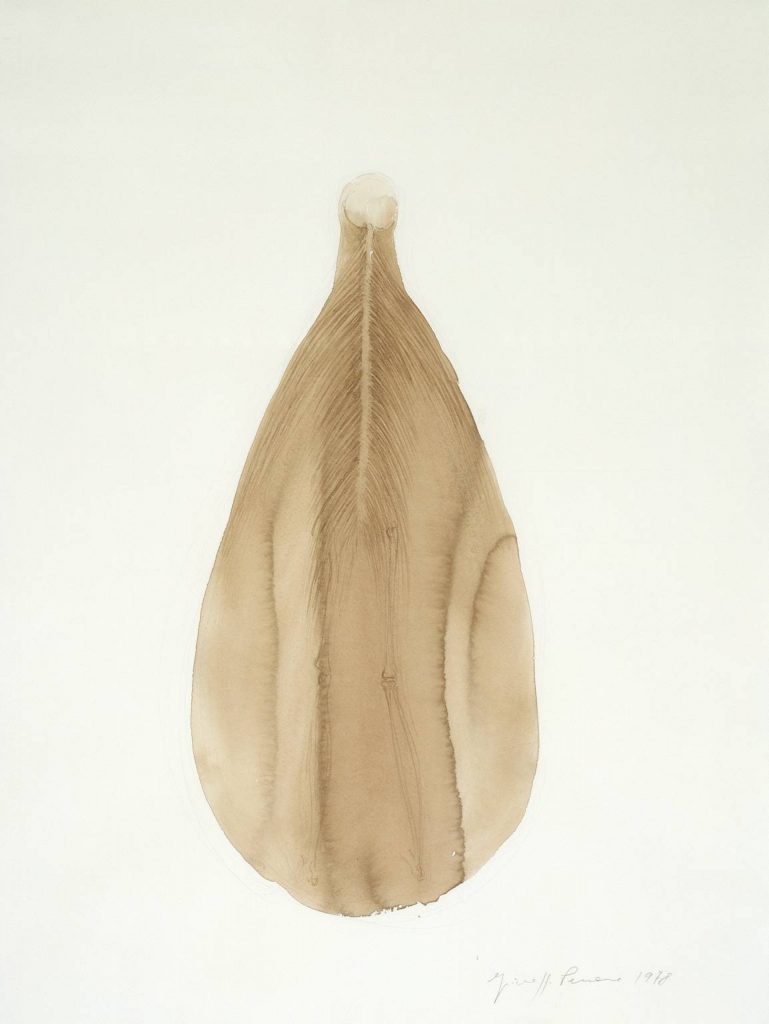
Fig. 175 Study for ‘Breath of Clay’ 1978 Giuseppe Penone born 1947 Purchased 1993 http://www.tate.org.uk/art/work/T06773 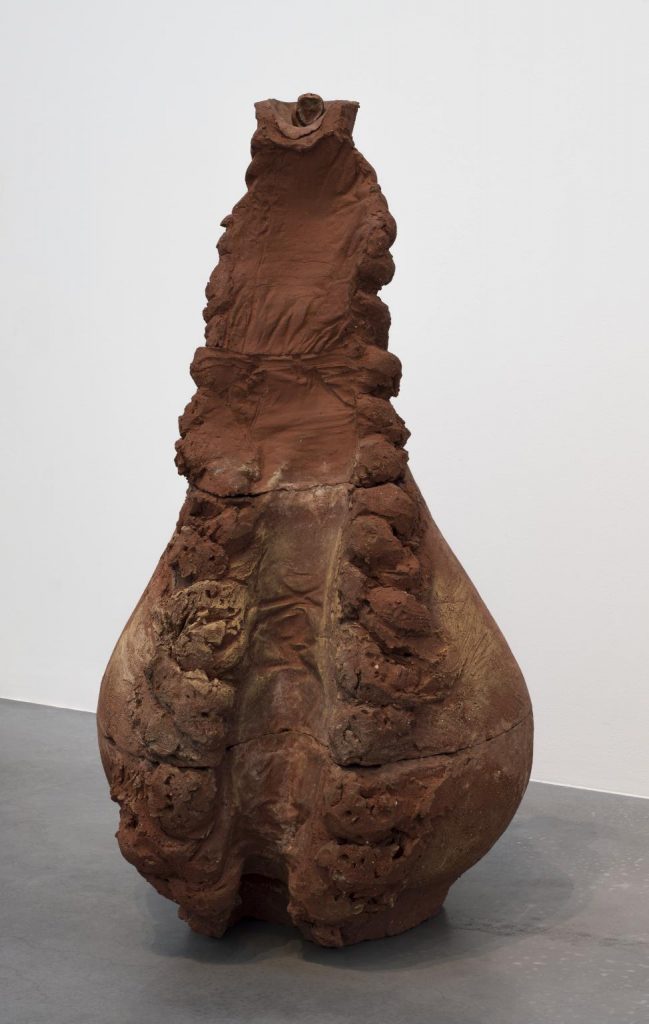
Fig. 176 Breath 5 1978 Giuseppe Penone born 1947 Purchased 1982 http://www.tate.org.uk/art/work/T03420
List of Illustrations
Figure 1
Bibliography